Ranking Kobe Bryant’s final game among best exits in sports history

Get breaking news and SI’s biggest stories instantly. Download the new Sports Illustrated app (iOS or Android) and personalize your experience by following your favorite teams and SI writers.
There has never been a more spectacular end to an NBA career.
Kobe Bryant, suiting up for the final time as a Los Angeles Laker, capped a 20-year Hall of Fame career by exploding for 60 points Wednesday night against the Utah Jazz to the delight of an adoring celebrity-filled crowd at the Staples Center.
But not all sports legends leave the athletic stage in such grand fashion. For every Bryant, Ted Williams or John Elway, there are dozens of Hall Famers who departed their sport either injured, out of shape or with greatly diminished skills.
How does Bryant’s last game rank with the exits of other premier athletes? Here are 15 of the best exits:
• MORE NBA:Kobe’s unforgettable finale | Where does Kobe rank alltime?
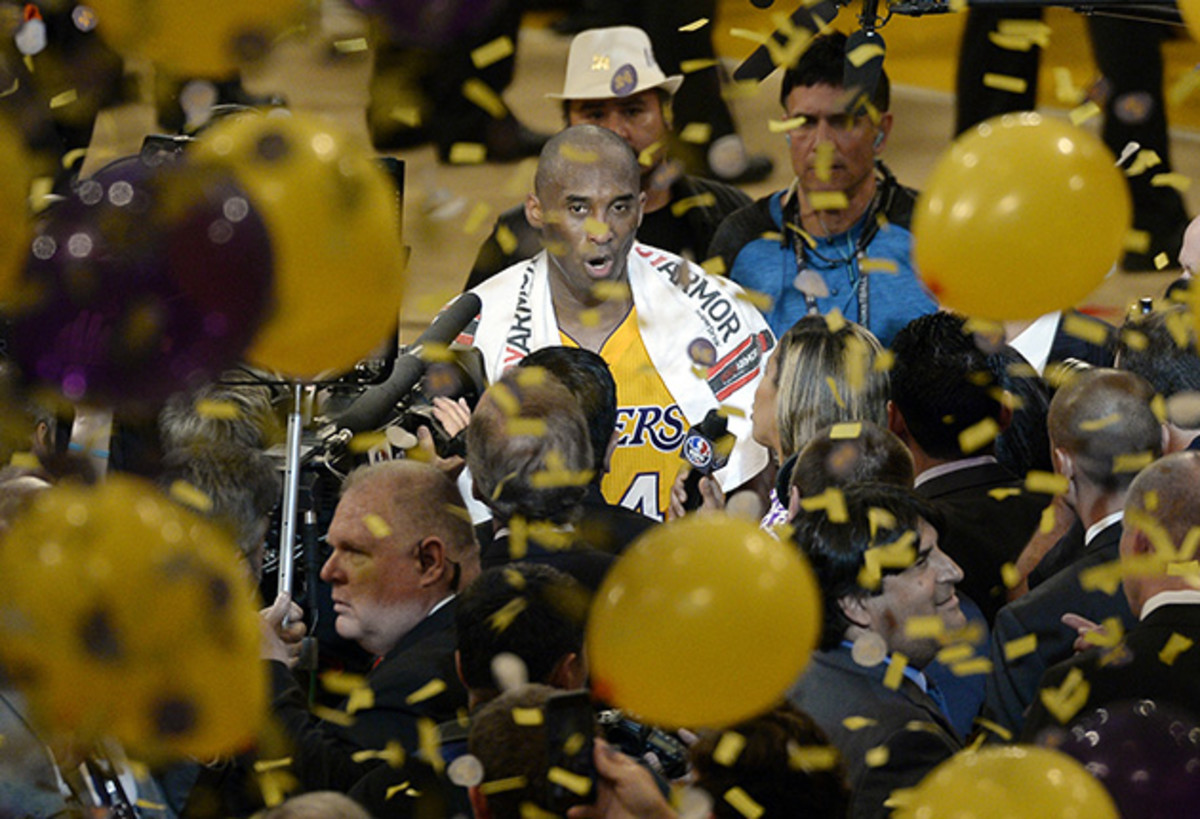
15. Rocky Marciano, boxing, 1955
Heavyweight legends Jack Dempsey, Joe Louis and Muhammad Ali all left the ring in defeat, but the Brockton Blockbuster departed as a champion. On Sept. 21, 1955, at Yankee Stadium, Marciano survived a fourth-round knockdown and eventually knocked out Archie Moore in the 15th round to retain the heavyweight crown. Marciano announced his retirement the following year, closing the book on a 49–0 professional career.
14. Roger Bannister, track, 1954
The British middle-distance standout achieved one of the pinnacles in sport on May 6, 1954, when he broke the four-minute barrier for the mile at the Iffley Road Track in Oxford. But Bannister wasn’t done. In a matchup of history’s first two sub-four-minute milers at the 1954 British Empire Games in Vancouver, British Columbia, he defeated Australia’s John Landy in a career-best 3:58.8 seconds to win the “Mile of the Century.” One month later, Bannister ended his years of running by taking the 1,500 meters at the European championships in Switzerland. Bannister retired soon after to pursue a career in medicine.
• MORE NBA: Kobe timeline: From phenom to legend | The perfect ending
13. Jean Beliveau, Montreal Canadiens, 1971
Le Grand Jean was far from finished at 39. He scored 25 goals in 70 games and capped his Hall of Fame career by helping Montreal win the Stanley Cup in seven games over the Chicago Blackhawks. Beliveau led all playoff scorers with 16 assists, including one on the tying goal of Game 6 as Montreal rallied for a 4–3 victory to force the decisive Game 7. He finished his career with 10 Stanley Cups.
12. Pete Sampras, tennis, 2002
Showing there was still brilliance in his game, Sampras closed his Grand Slam career with a victory at the 2002 U.S. Open, his final appearance in an ATP tournament. Seeded only 17th, Sampras survived a third-round five-set match against Britain’s Greg Rusedski but lost only two sets the rest of the way. He defeated longtime rival Andre Agassi 6–3, 6–4, 5–7, 6–4 in the final. It was Sampras’s 14th Grand Slam championship, a mark topped only by Roger Federer.
11. Herb Elliott, track, 1960
As with Man o’ War and Secretariat, Elliott’s career on the track was short and brilliant. Between 1958 and ‘60 there wasn’t a better middle-distance runner than the lanky Australian. In 1958 Elliott shattered the world record in the 1,500 meters (3 minutes 36 seconds) and one mile (3:54.5) by more than two seconds. At the 1960 Rome Olympics, Elliott destroyed the competition in the 1,500 by more than 20 meters, breaking his own world record by nearly a half-second in 3:35.6. The record stood for seven years, and his time would have won seven of the next nine Olympic 1,500s.
That same September, Elliott ran four sub-four-minute miles throughout Europe to bring his three-year total of sub-4s to 17. Elliott was only 22 and had never lost a 1,500 or mile race—but he had had enough. He never competed in another national or international competition, limiting himself to low-key club races after he enrolled at Cambridge University in England. He eventually became chairman of one of the world’s largest iron ore mining companies.
• See Sports Illustrated’s redesigned Vault with features, covers and more
10. Bob Hayes, track, 1964
“Bullet” Bob Hayes was an outstanding football player, earning Hall of Fame recognition after an 11-year NFL career, predominantly with the Dallas Cowboys as a wide receiver and kick returner. In track he was even better. One of history’s greatest sprinters, Hayes ranked No. 1 in the world in the 100 meters from 1962 to ‘64 and set world records at 60 yards, 100 yards and 100 meters. Hayes erupted at the 1964 Tokyo Olympics. Despite running the 100-meter final on a cinder track’s inside lane, a lane that had been chewed up by the start of the 20-kilometer walk, Hayes pulled away to win by seven feet, a margin Track and Field News described as “almost insulting to an Olympic field.” He ran an electronically timed world record of 10.05, a mark that would be considerably faster on today’s hyper-fast all-weather tracks.
The 4x100 meter relay final was the stuff of legend. Anchoring what amounted to a U.S. “B” team with 200-meter specialists Paul Drayton and Richard Stebbins, and 100 alternate Gerry Ashworth, Hayes received the baton nearly three meters behind the leaders. His acceleration seemed to defy the laws of nature. Within 30 meters Hayes was in front and he finished more than 2 meters ahead in a world record 39.06. His 100 leg was unofficially timed in 8.6. A runner for the third-place French team told Drayton, “All you have is Hayes.” Drayton answered, “That’s all we need, baby.”
• MORE NBA: Does Kobe rank as one of the top 10 NBA players alltime?
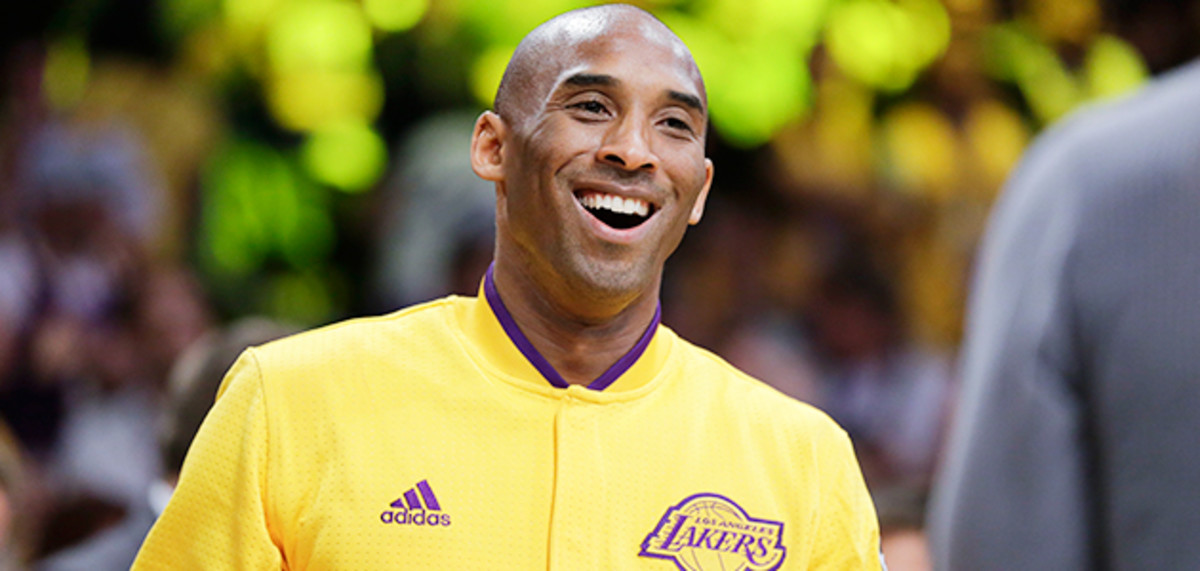
9. Kobe Bryant, Los Angeles Lakers, 2016
Bryant’s final NBA season was not the stuff of legend. He played only 66 games, shot less than 36% and averaged only 17.6 points per game. Basketball-Reference rated his VORP (value over replacement player) of –0.2 and win shares of 0.4 as equal to the lowest of his career. But Bryant had enough fuel in his diminishing tank for one final grand gesture, a 60-point night in the last game of his career. Yes, he took 50 shots (the most in a single game by any player since 1983, according to Basketball Reference) and the Lakers’ 17th victory marked the worst season in franchise history. But it was still great fun. Bryant caught fire after an 0-of-5 start, scoring 15 points during one four-minute stretch. The final field goal of his career was good from 20 feet and put the Lakers ahead to stay. Maybe Bryant’s 60 won’t resonate like Babe Ruth’s 60, but it was one memorable farewell.
8. Ted Williams, Boston Red Sox, 1960
A cynic could argue that if famed writer John Updike doesn’t show up at Fenway Park for Williams’s final game on Sept. 28, 1960, and pen one of the best sports essays ever, “Hub Fans Bid Kid Adieu,” then the Splendid Splinter’s home run in his last major league at-bat might be remembered simply as a timely grace note rather than an epic blast to close a memorable and sometimes turbulent career. But Williams’s final season was more than his 521st career home run that provided grist for Updike’s legendary essay in The New Yorker. After a horrid 1959, when his batting average fell below .300 for the only time in his career and he hit just 10 homers, Williams, 42, rebounded for a splendid finale in 1960. He batted .316 and, in only 113 games, belted 29 home runs, good for sixth in the American League. In advanced metrics, he ranked third in offensive WAR and second in adjusted batting wins. Williams’s slugging percentage (.645) and on-base percentage (.451) would have led the AL had he attained the requisite number of plate appearance.
Yes, that last long ball is what fans remember, but Ted Williams’s final season for a lackluster seventh-place Boston Red Sox outfit provided plenty to write about—in The New Yorker or anywhere else
7. John Elway, Denver Broncos, 1998
The 1998 NFL season was not Elway’s best. Injuries limited the 38-year-old quarterback to 12 starts and he did not rank in the top three of any NFL passing categories. Running back Terrell Davis (2,008 yards rushing) was the focal point of a Denver Broncos offense that averaged better than 31 points per game en route to a 14–2 record. Yet Elway still threw for nearly 3,000 yards and tossed 22 TD passes. The future Hall of Famer went out spectacularly in Super Bowl XXXIII, passing for 336 yards, including an 80-yard TD toss to Rod Smith, and scoring Denver’s final touchdown on a 4-yard draw in a 34–19 defeat of the Atlanta Falcons for Denver’s second straight championship. Elway was selected the game’s MVP. Seventeen years later, Elway, now a Broncos executive, watched Peyton Manning, another future Hall of Fame quarterback perform capably if not spectacularly in leading Denver to a Super Bowl 50 win over the Carolina Panthers in what would be Manning’s final game.
6. Norm Van Brocklin, Philadelphia Eagles, 1960
The “Dutchman” was one ornery man. Whether as a Hall of Fame quarterback or a less than successful NFL head coach, Brocklin would dress down anyone who didn’t meet his exacting expectations. But he could play. His 73-yard touchdown pass to Tom Fears gave the Los Angeles Rams a 24–17 victory over the favored Cleveland Browns in the 1951 NFL Championship Game. Traded to Philadelphia late in his career, Van Brocklin saved the best for last in 1960, leading the lightly regarded Eagles to the Eastern Conference crown. He finished second in passing yards, touchdown passes and passer rating, and fourth in punting. He was also selected the league’s MVP.
Van Brocklin, 34, capped his career by guiding the Eagles to the 1960 NFL championship, passing for more than 200 yards and twice coming from behind to top the Green Bay Packers 17–13, the only playoff defeat during Vince Lombardi’s tenure with the Packers.
5. Bill Russell, Boston Celtics, 1969
The 1968–69 Celtics were not a great team and Russell, 35, was wearing down. The five-time league MVP missed five games due to fatigue and injury as Boston finished 48–34, the lowest winning percentage of Russell’s career. The offense ranked 10th in the 14-team league and the Celtics finished fourth in the Eastern Conference. But, as he always did when the playoffs arrived, Russell raised his game. After averaging only 9.9 points in the regular season, he knew he had to improve his offense. In the Eastern finals against the New York Knicks, whom had defeated Boston six out of seven times during the season, the Celtics’ center/coach averaged more than 16 points as the Celtics won in six games.
Before Game 7 of the NBA Finals against the host Los Angeles Lakers, Russell, who had averaged a team-leading 21 rebounds and five assists during the series, came across a Lakers memo outlining plans for a victory celebration at the Forum. Included was a massive balloon drop at game’s end. Russell informed his team, “There is no way we are losing this game. Those [bleeping] balloons are staying up there”
Boston did indeed win, 108–106, becoming the first NBA team to take a Finals Game 7 on the opponent’s court. For Russell, who joked about the Lakers having to “take down those balloons one by one,” it was his 11th NBA championship in 13 years. That summer he announced his retirement and left basketball as the greatest winner in North American team sports.
4. Otto Graham, Cleveland Browns, 1955
Graham was allergic to second place. During 10 seasons as quarterback for the Cleveland Browns, four in the All-American Football Conference, six in the NFL, Graham always finished first in the conference or division standings. He led the Browns to four AAFC titles and three NFL championships. Graham, nearly retired after leading the Browns to the ‘54 NFL title, but returned for a final hurrah—and a then-NFL record salary of $25,000. In 1955 he led the league in passing, completion percentage and yards per attempt as the Browns won another Eastern Conference title with a 9-2-1 record.
In the ‘55 NFL title game against the Los Angeles Rams, Graham, 34, passed for two touchdowns and ran for two more as the Browns coasted to a 38–14 victory. Late in the game, when Graham left the field for the last time, the L.A. Coliseum crowd gave him a standing ovation. As a final honor he was awarded the Hickok Belt as 1955’s outstanding pro athlete.
SI's 100 Best Kobe Bryant Photos
Kobe Bryant
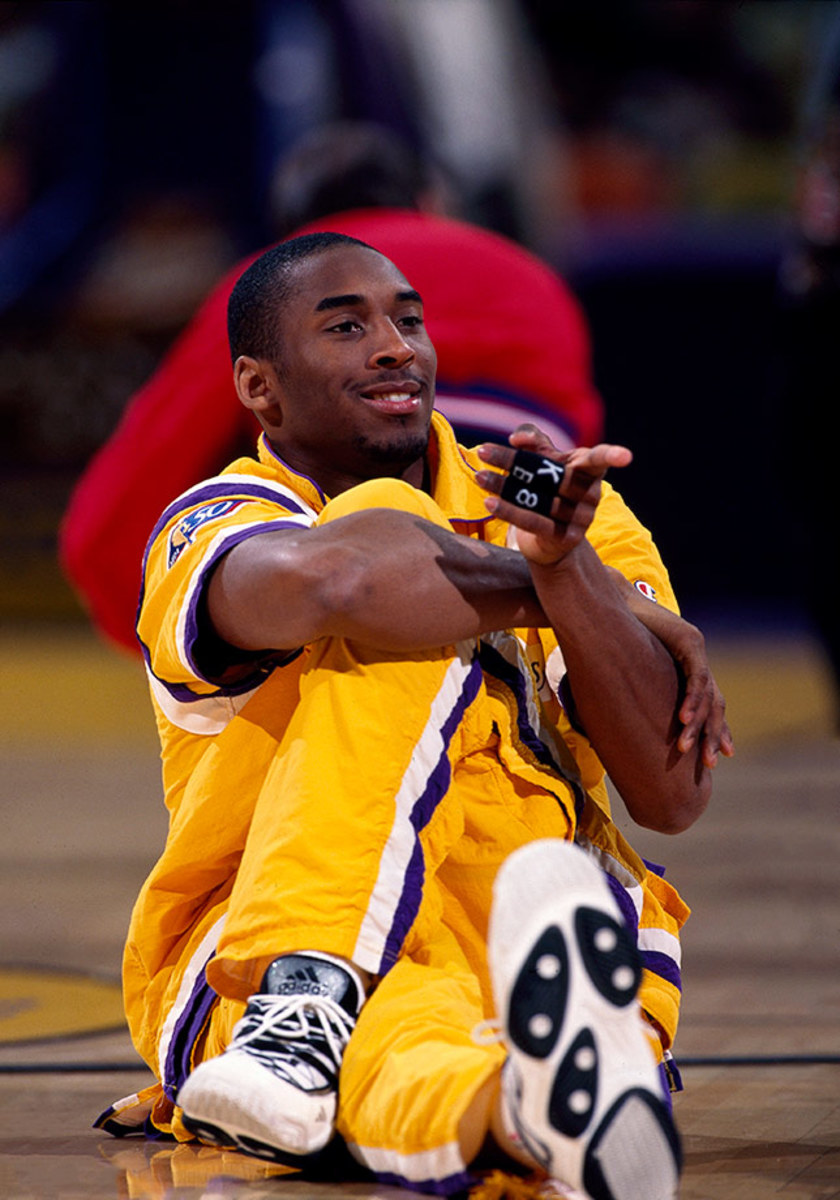
March 3, 1997
Kobe Bryant
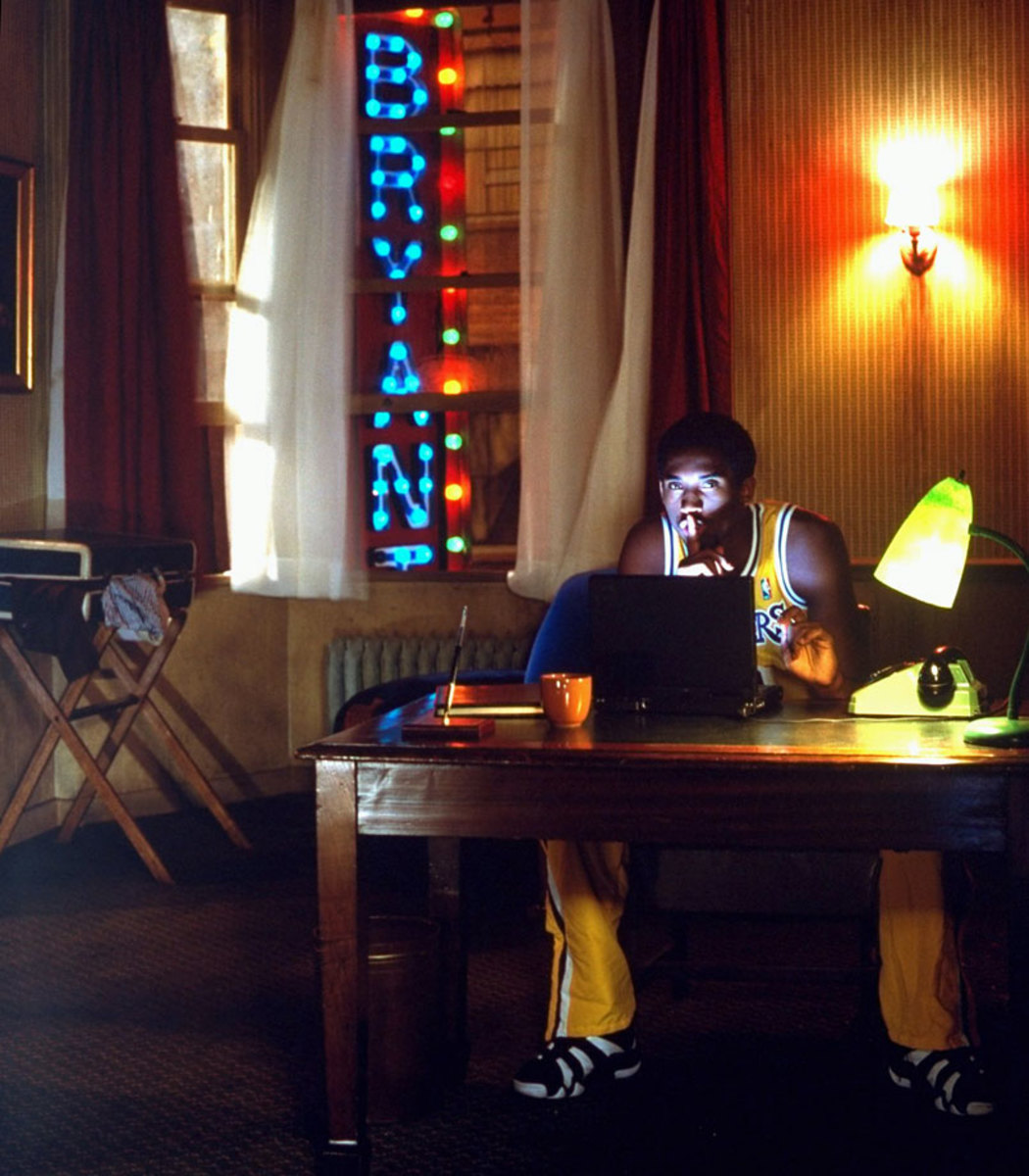
Oct. 24, 1997
Amanda Bynes, Kobe Bryant and Christy Knowings
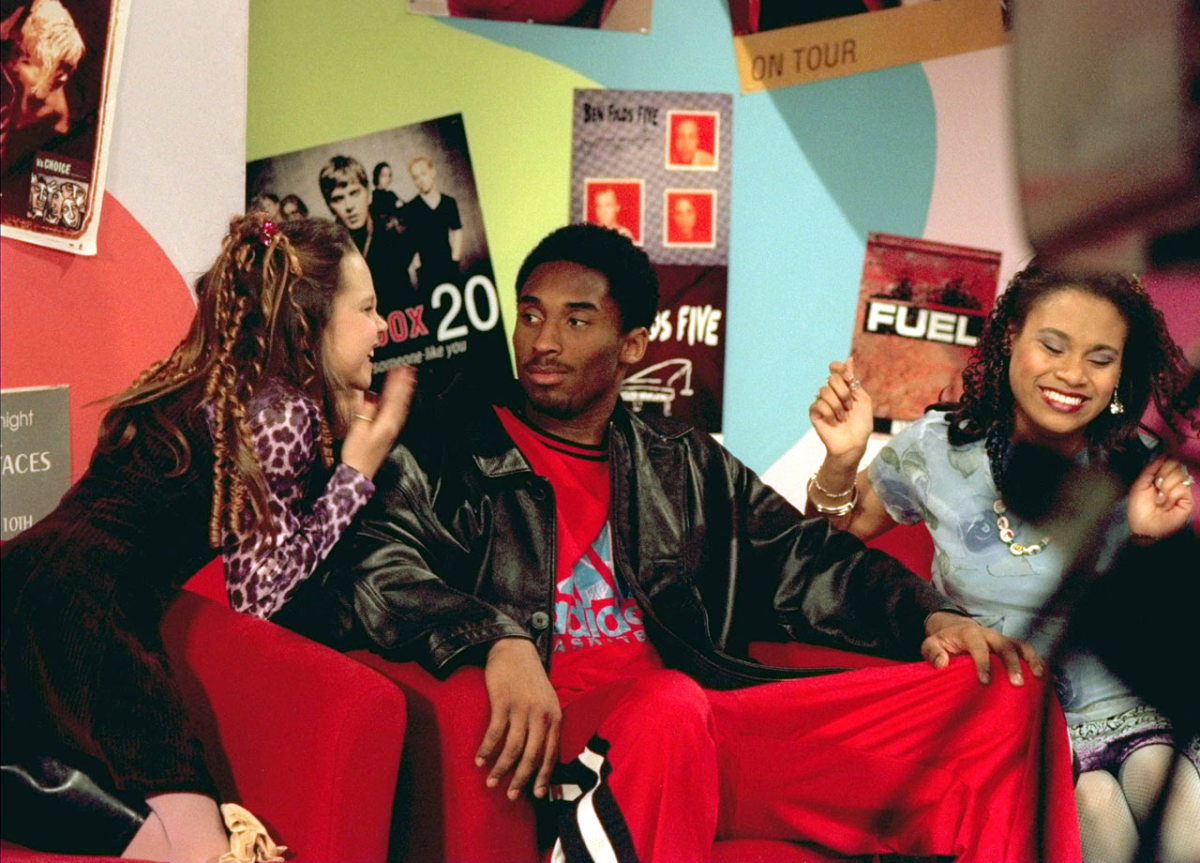
Jan. 16, 1998 — All That
Kel Mitchell, Kobe Bryant and Kenan Thompson
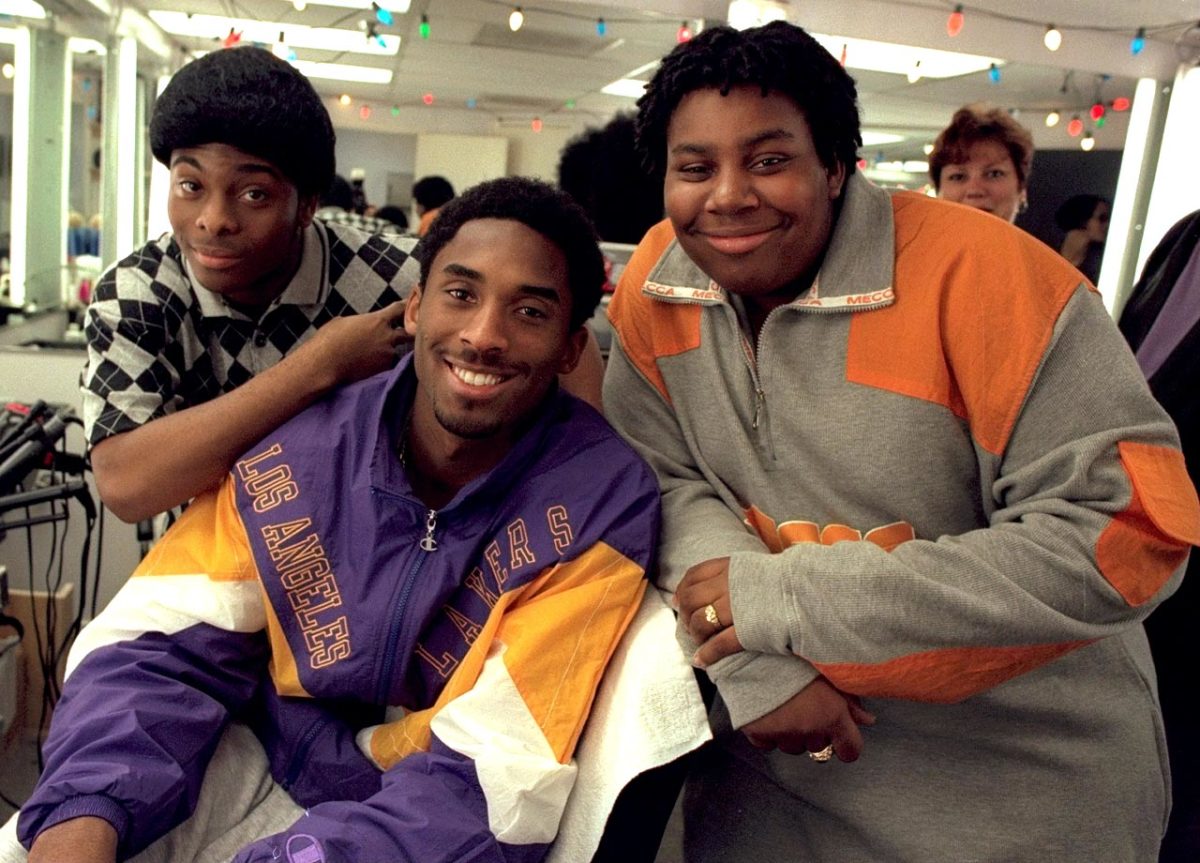
Jan. 16, 1998 — All That
Kobe Bryant with his sisters, Shaya and Sharia
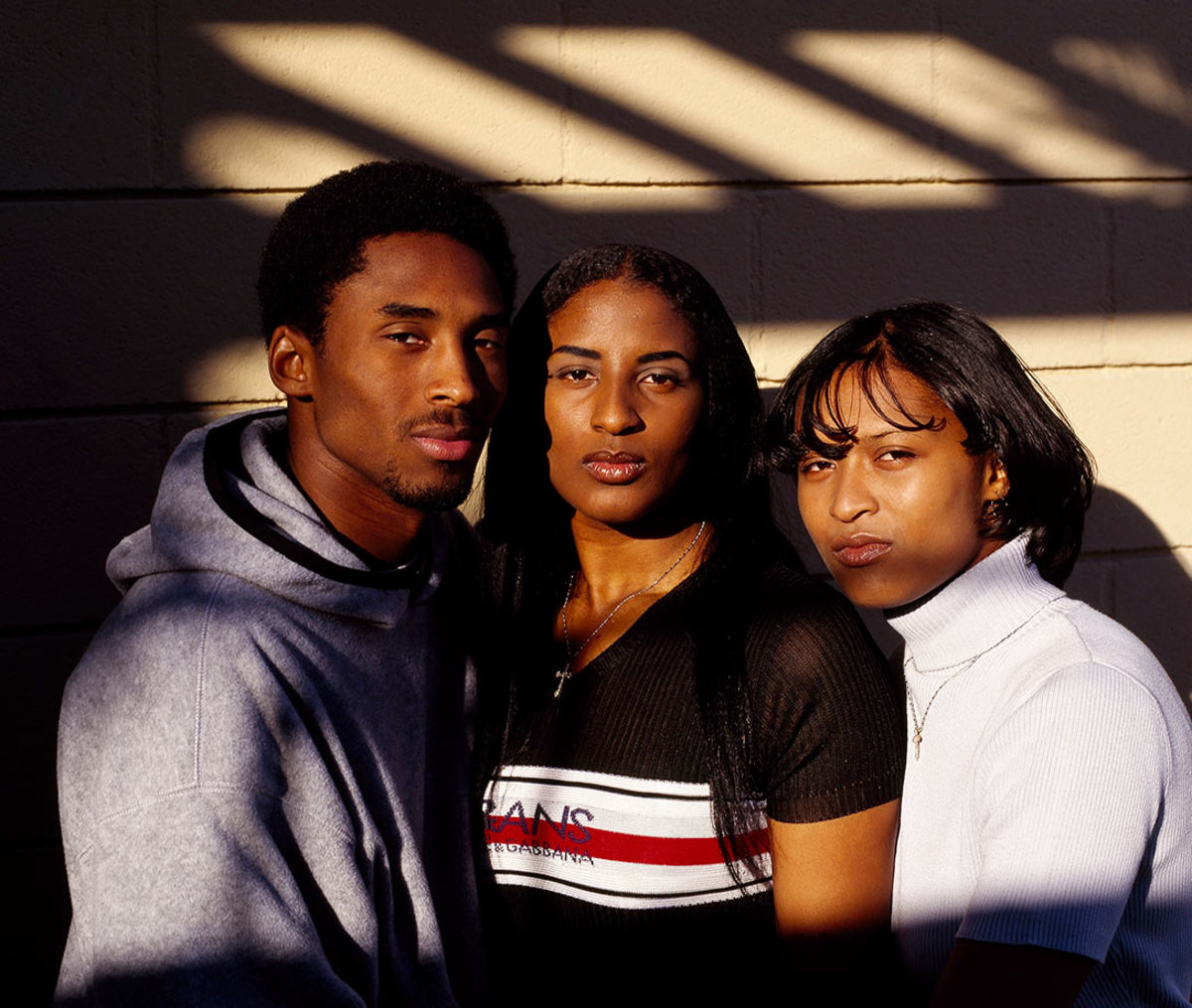
Feb. 1, 1998
Kobe Bryant
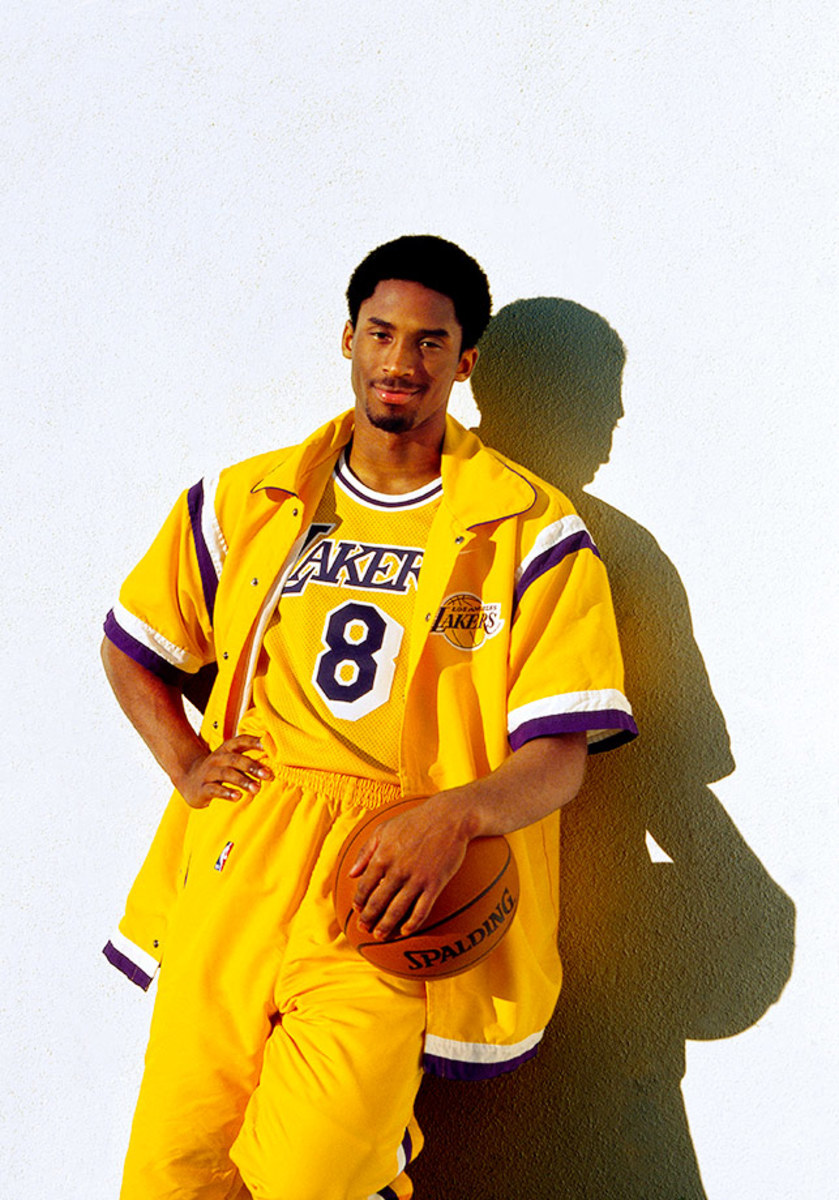
Feb. 1, 1998
Kobe Bryant
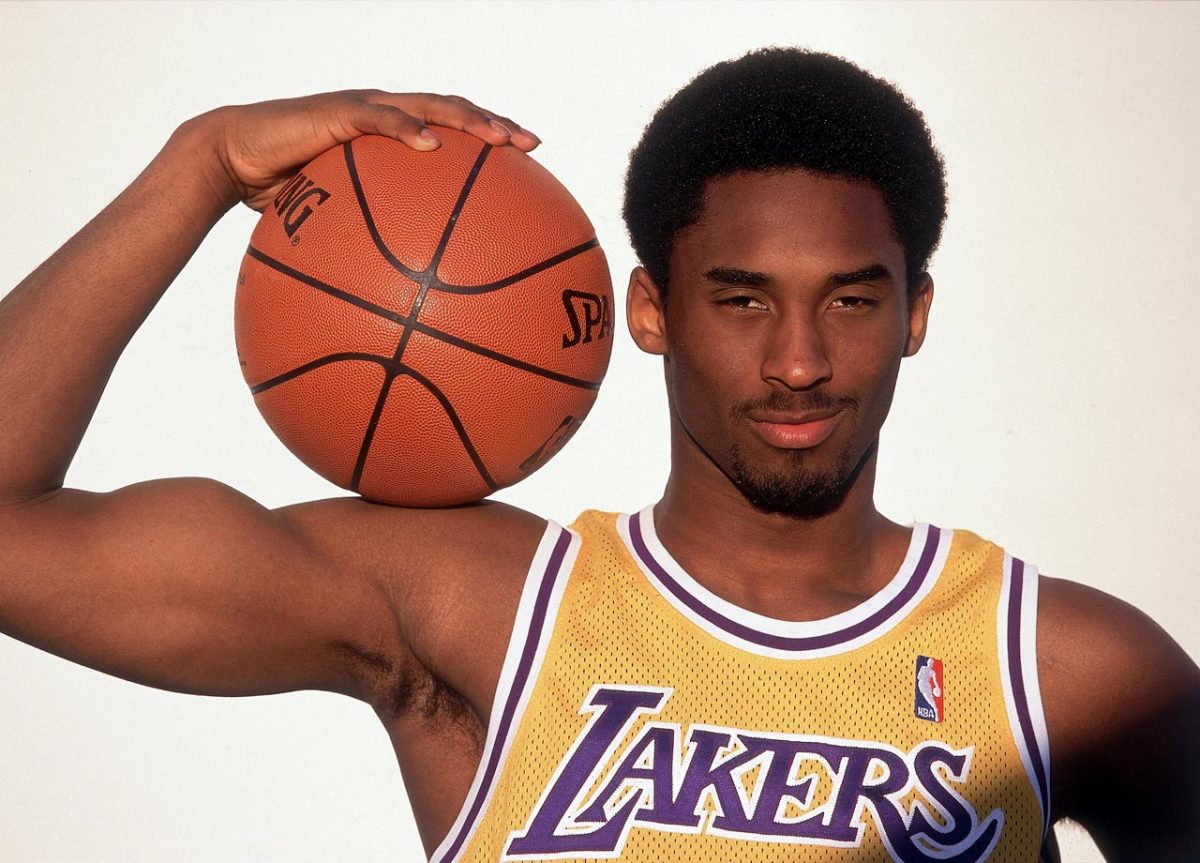
Feb. 1, 1998
Kobe Bryant
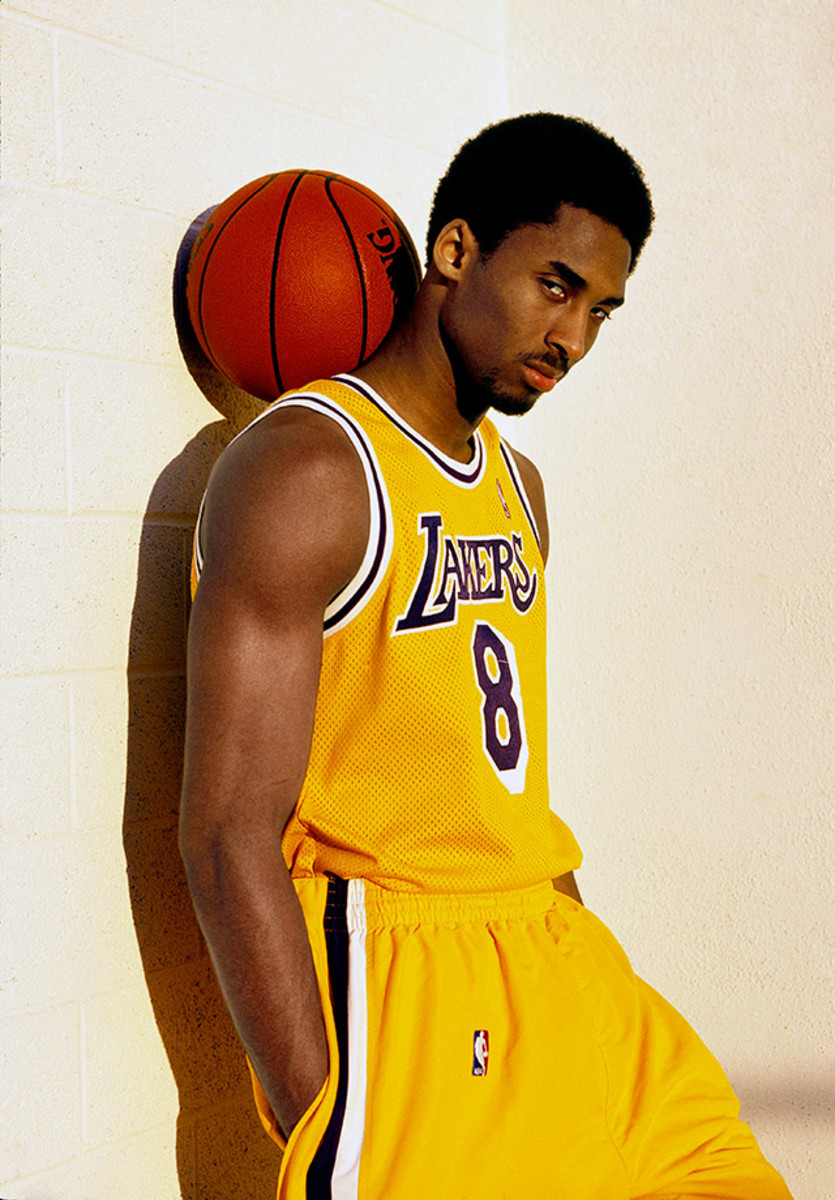
Feb. 1, 1998
Magic Johnson and Kobe Bryant
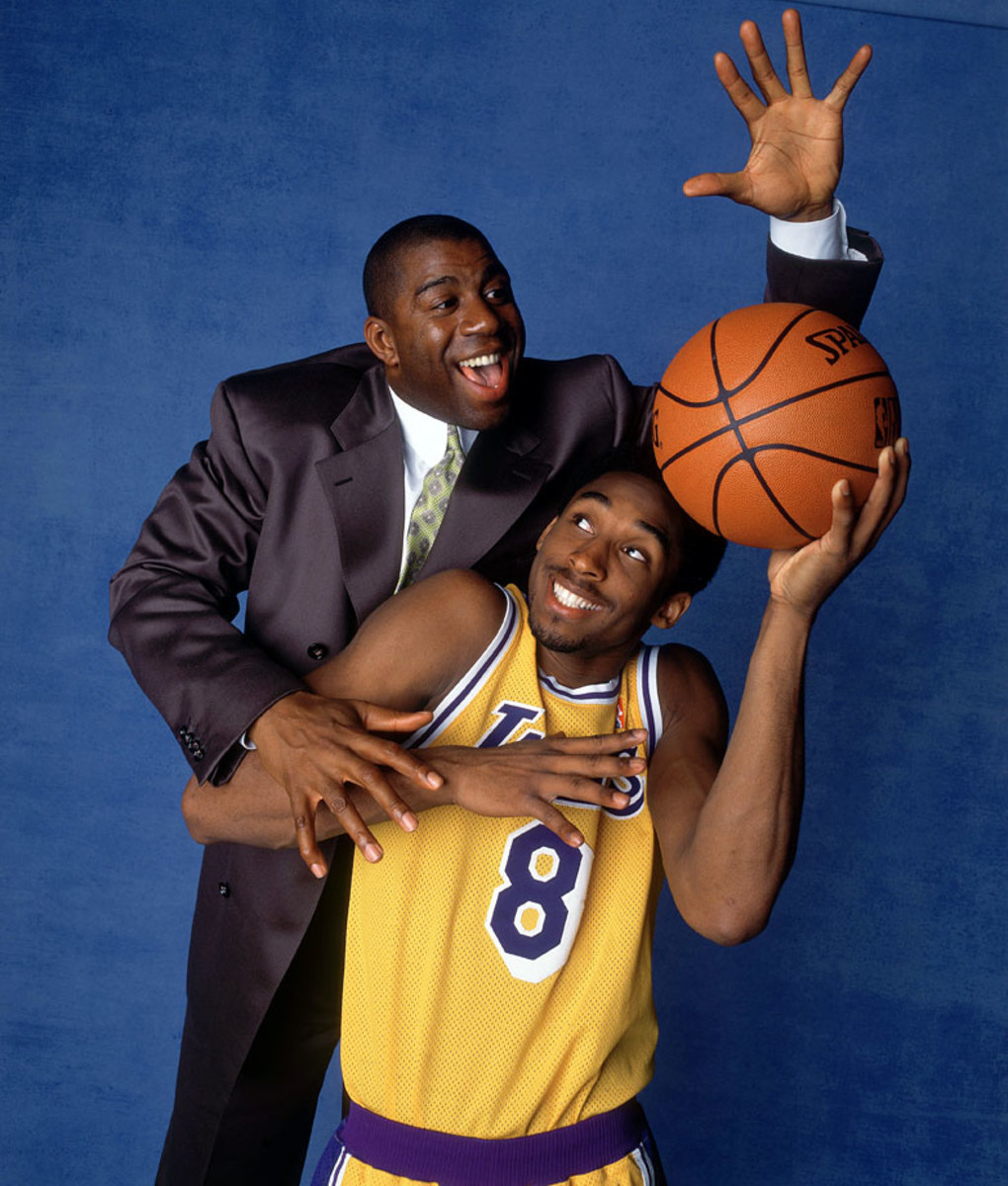
Feb. 1, 1998
Kobe Bryant and Michael Jordan
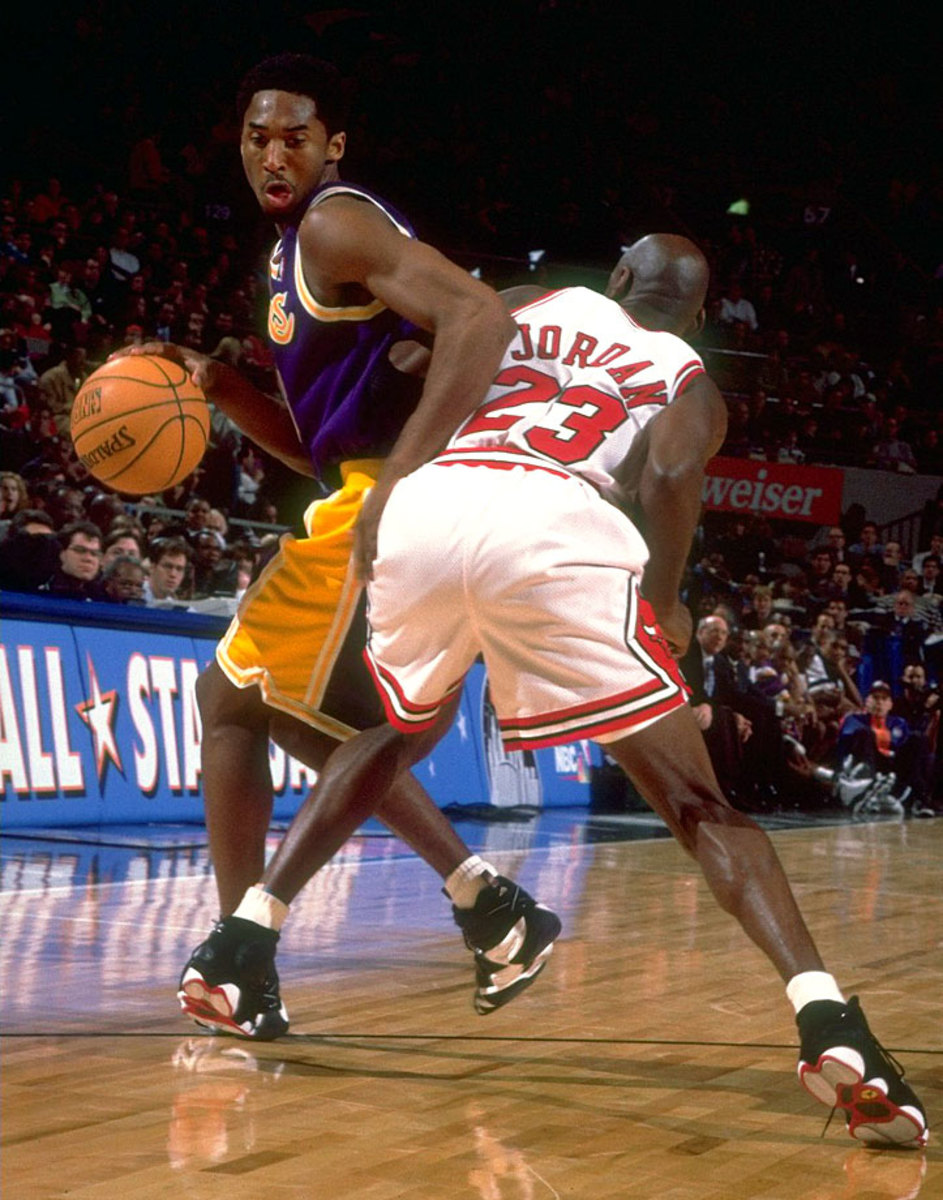
Feb. 8, 1998
Kobe Bryant
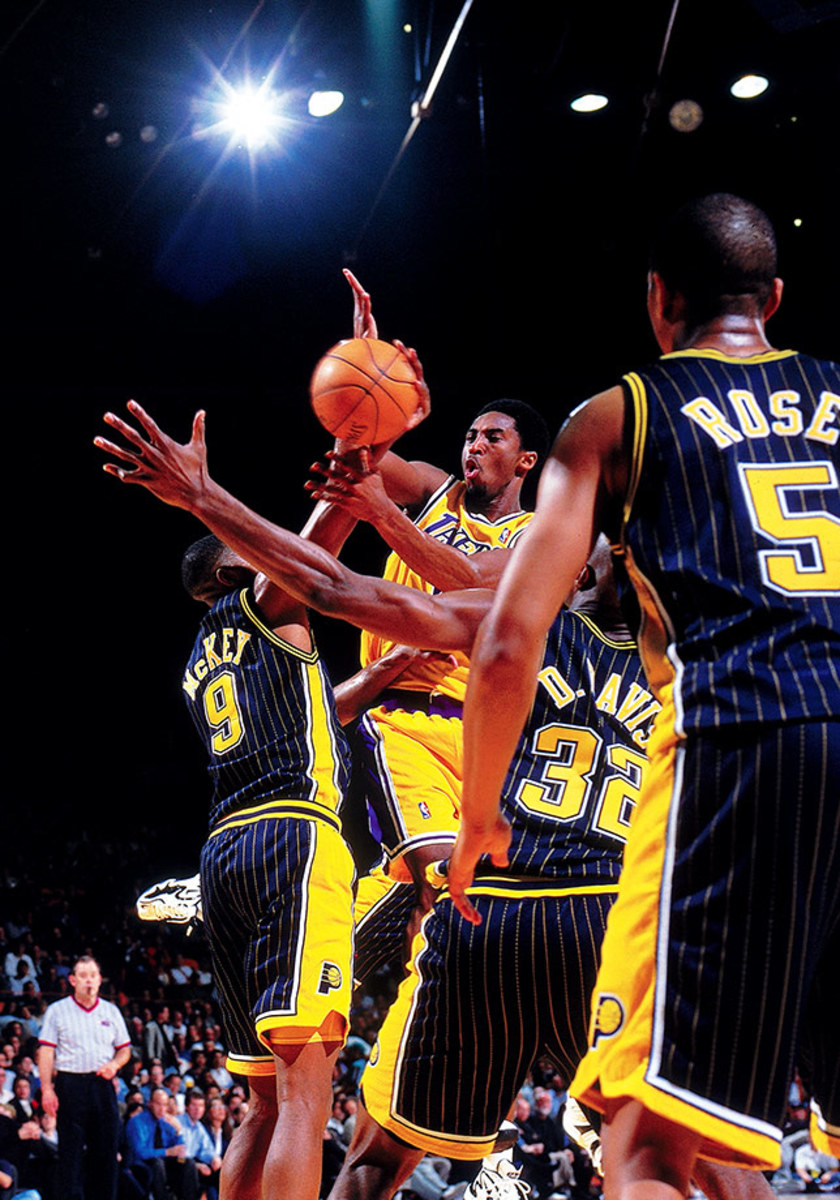
March 4, 1998
Kobe Bryant and John Stockton
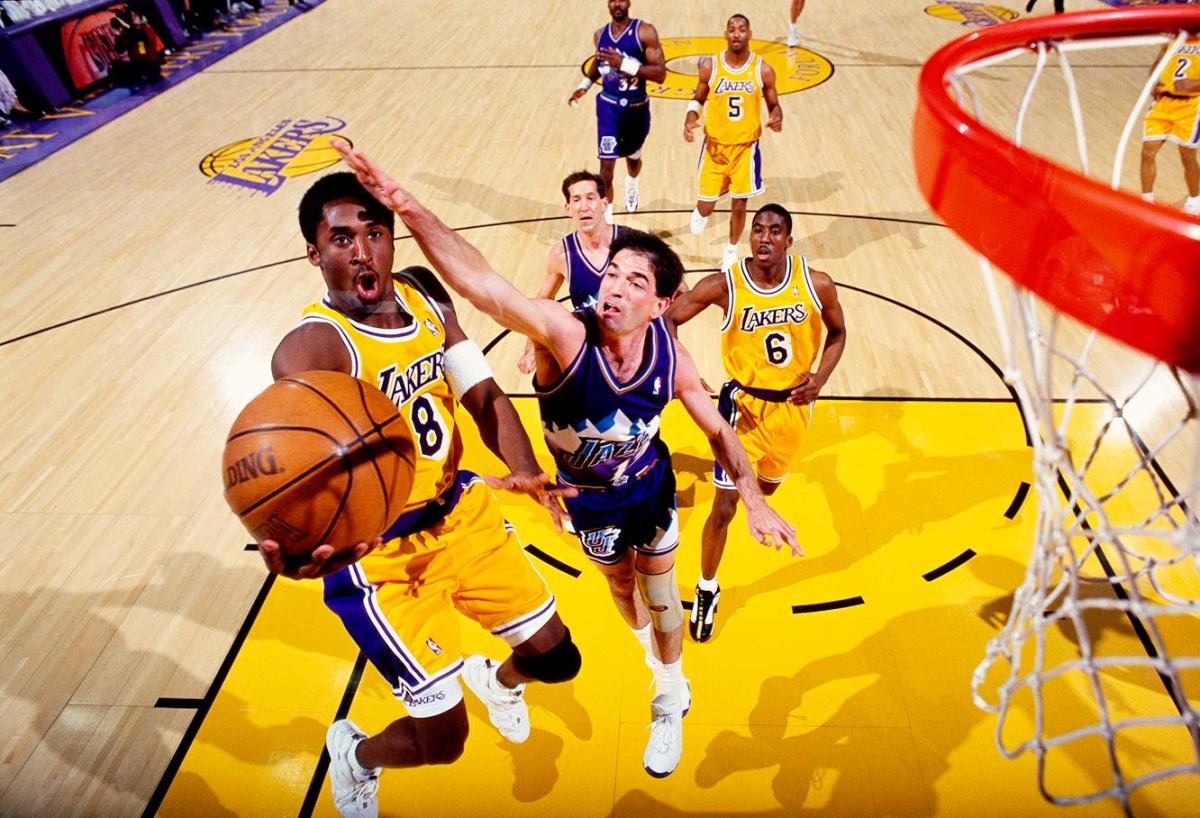
April 19, 1998
Kobe Bryant
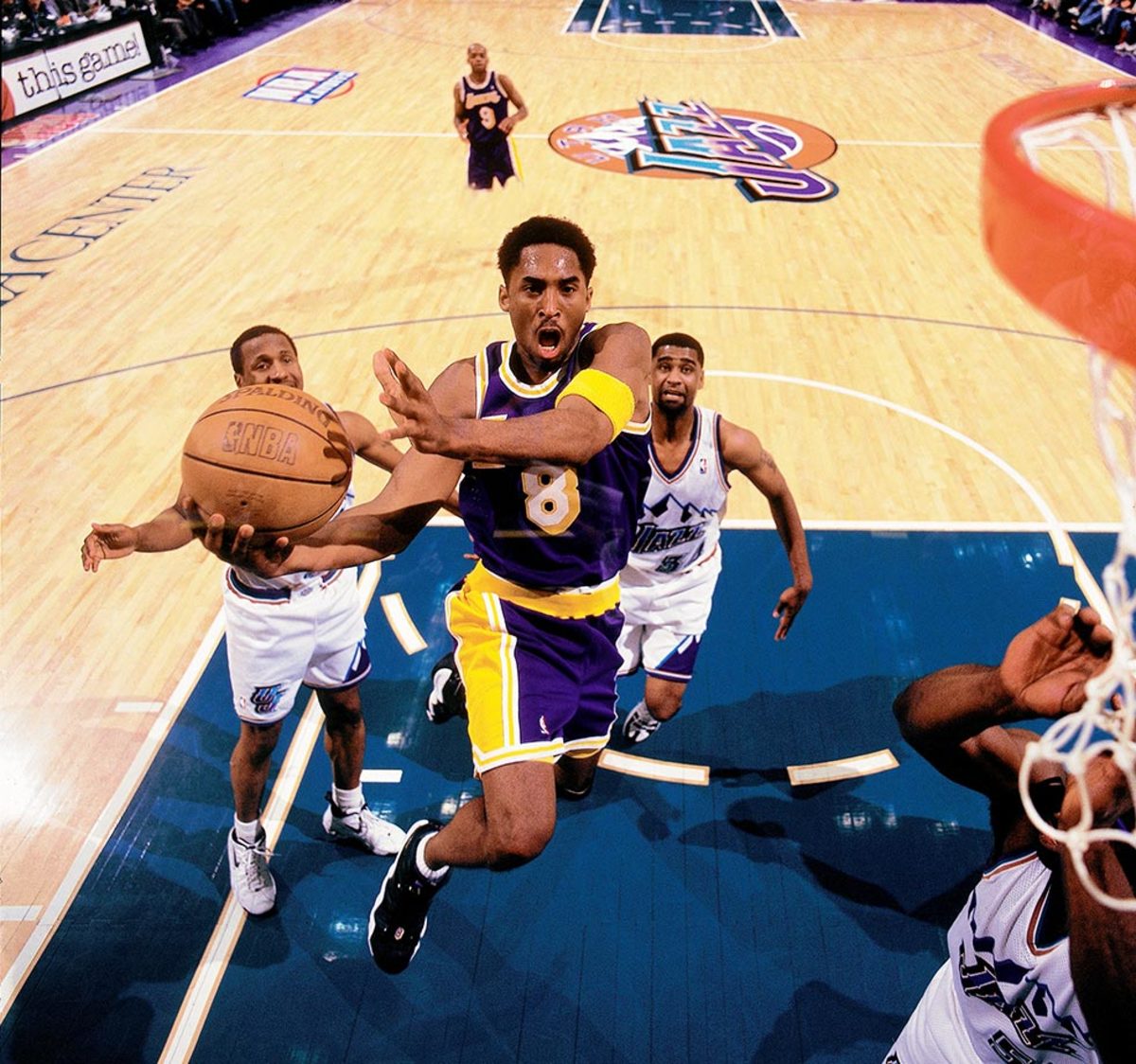
May 18, 1998 — Western Conference Finals, Game 2
Kobe Bryant
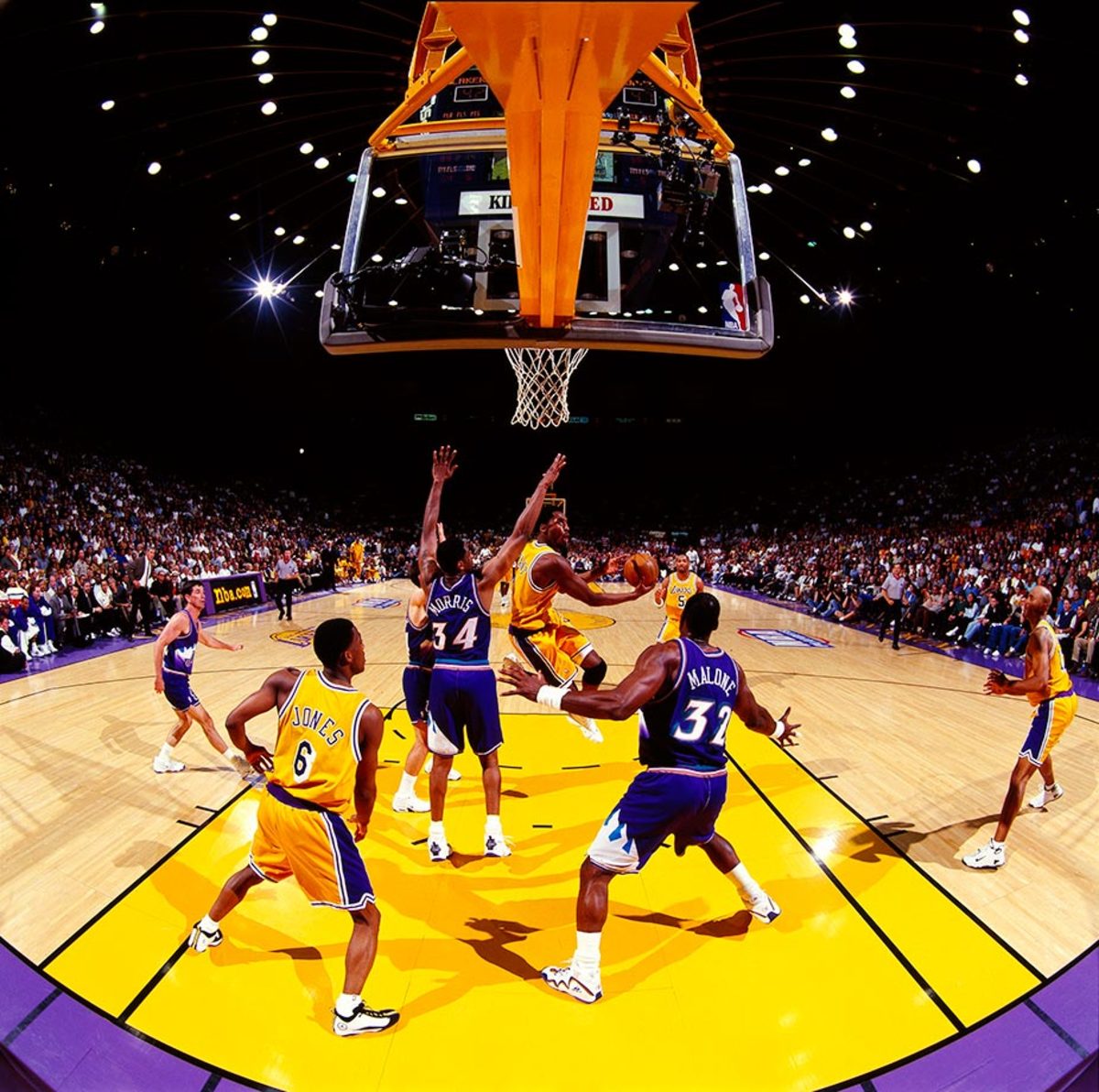
May 22, 1998 — Western Conference Finals, Game 3
Kobe Bryant and Scottie Pippen
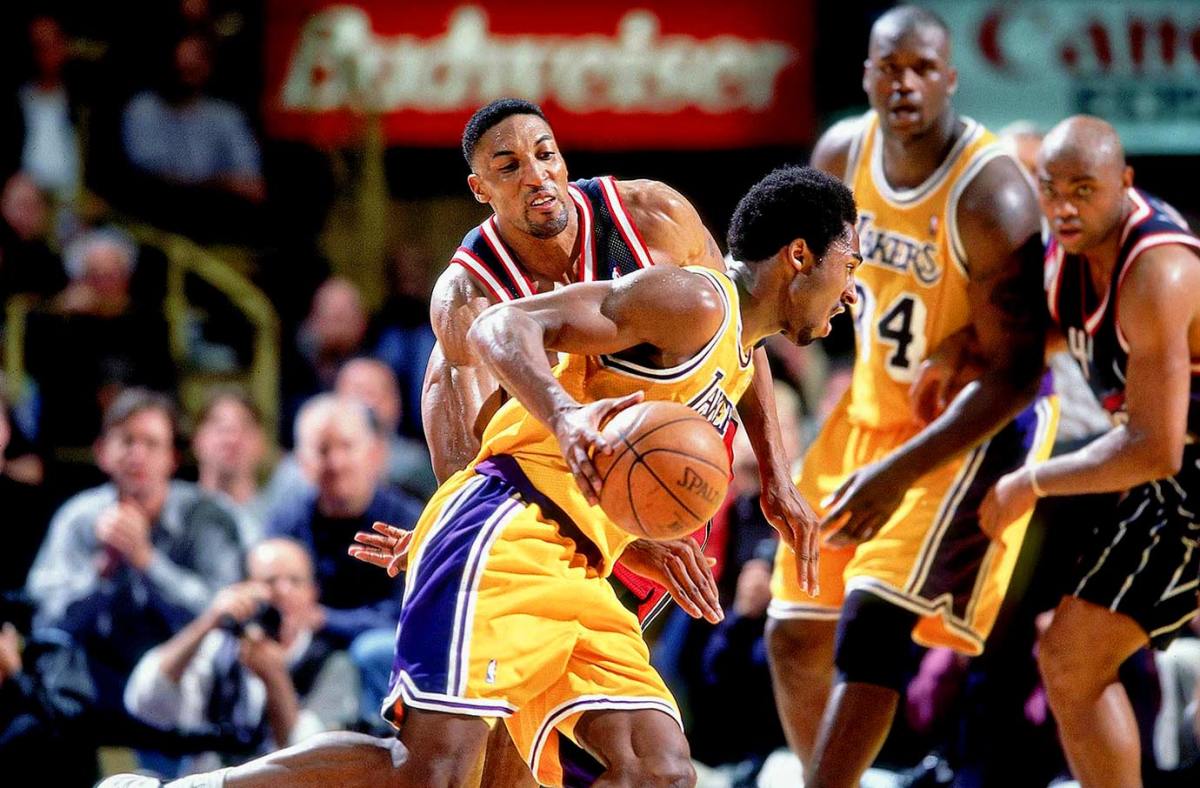
Feb. 5, 1999
Kobe Bryant
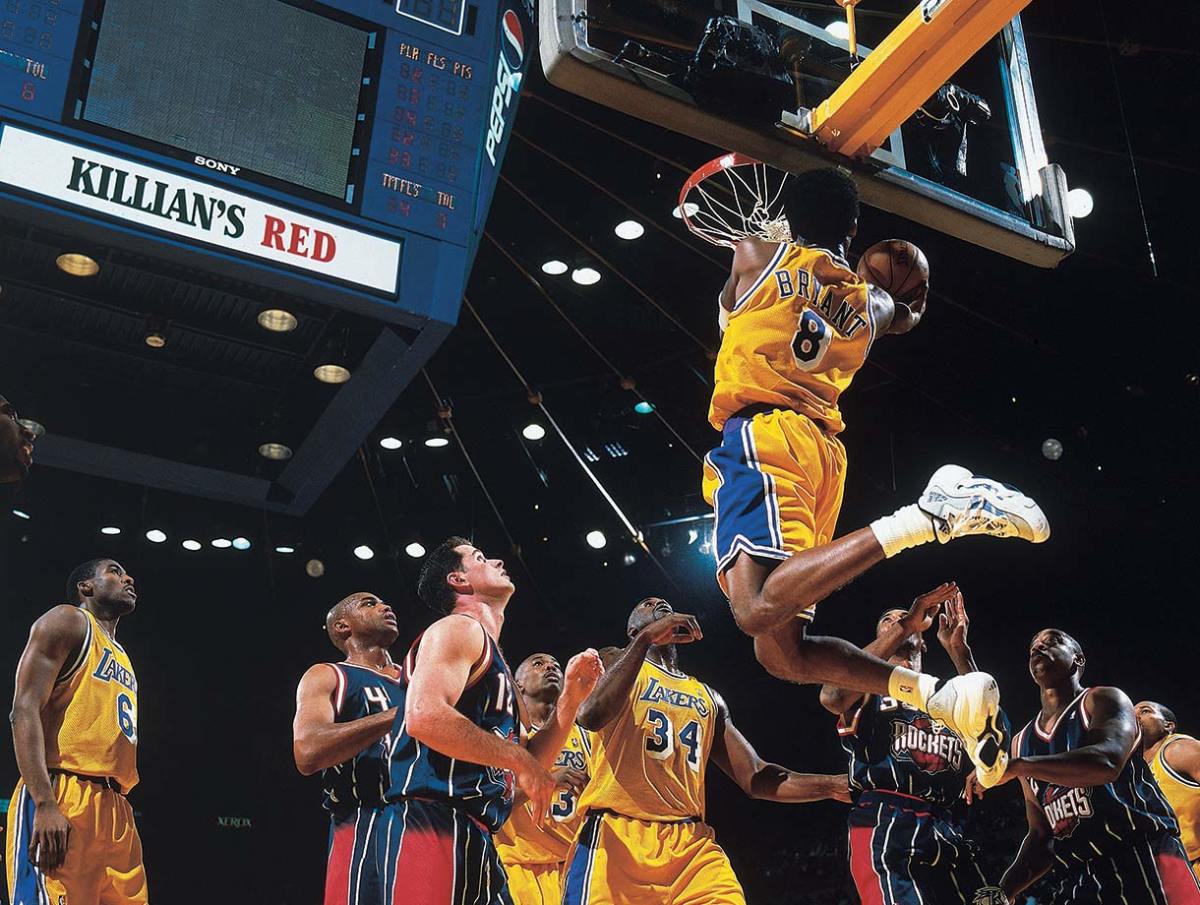
Feb. 5, 1999
Kobe Bryant and Hakeem Olajuwon
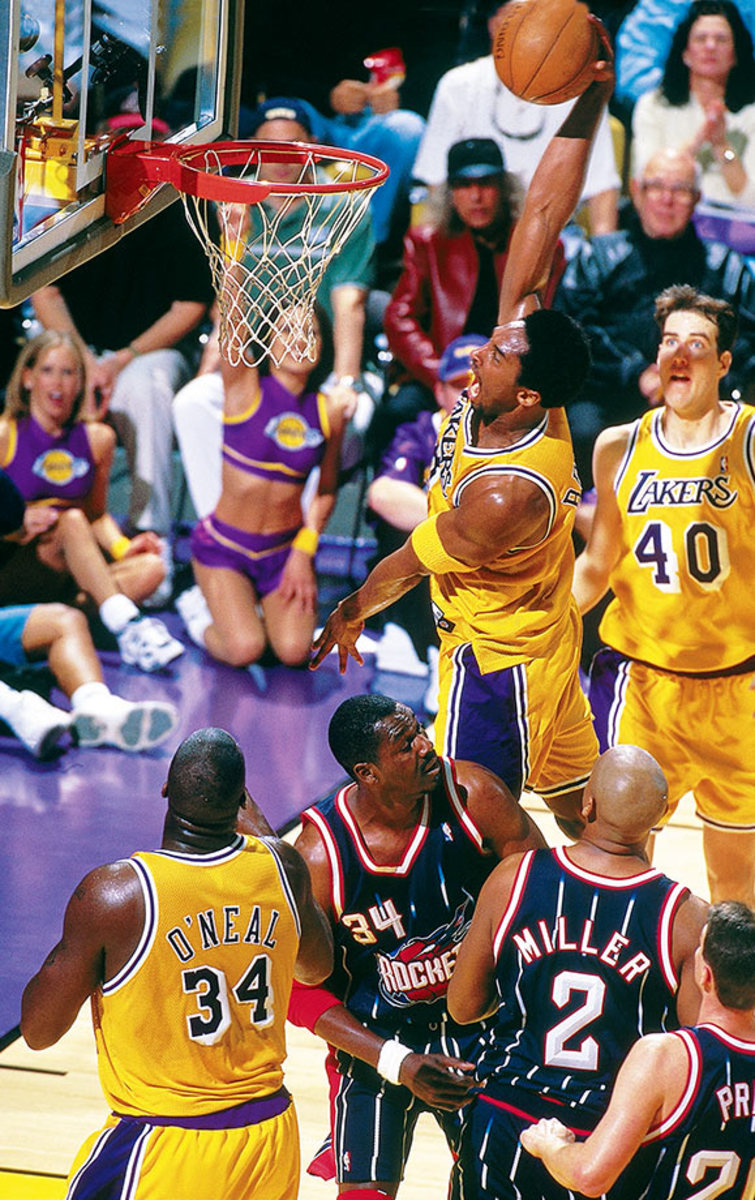
Feb. 28, 1999
Kobe Bryant
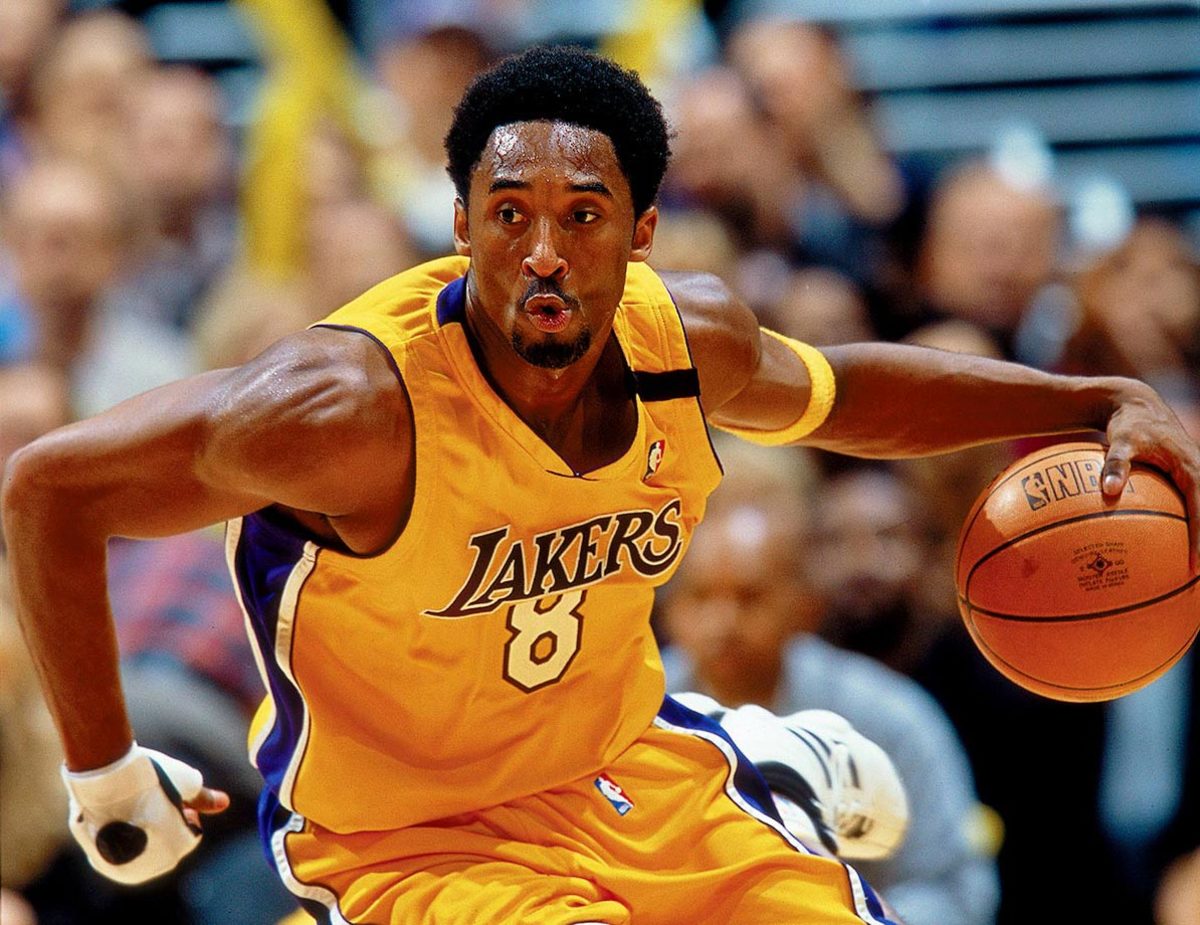
Dec. 3, 1999
Kobe Bryant
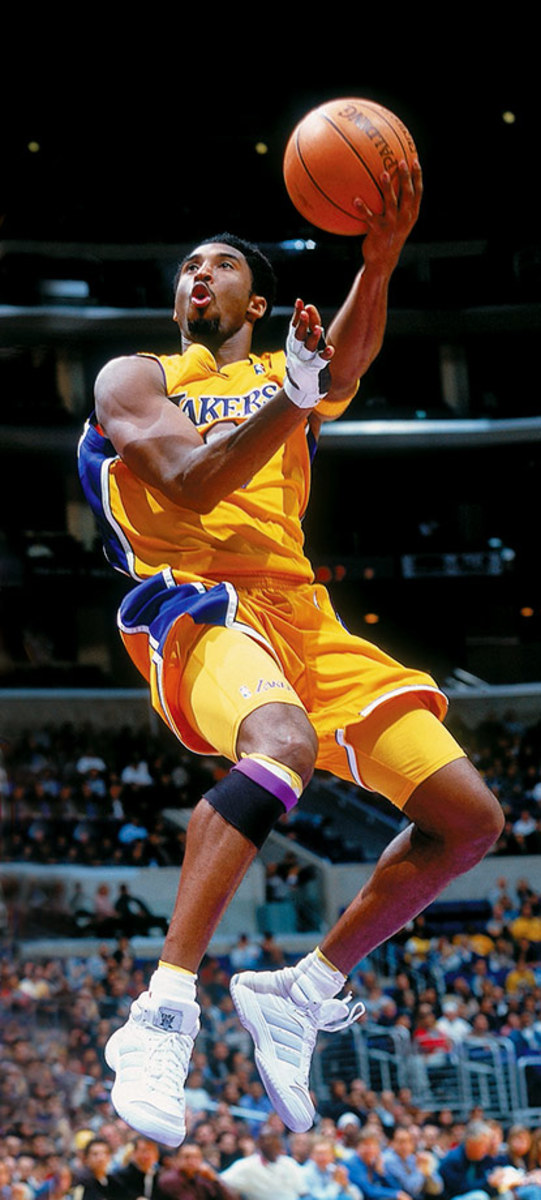
Dec. 14, 1999
Kobe Bryant
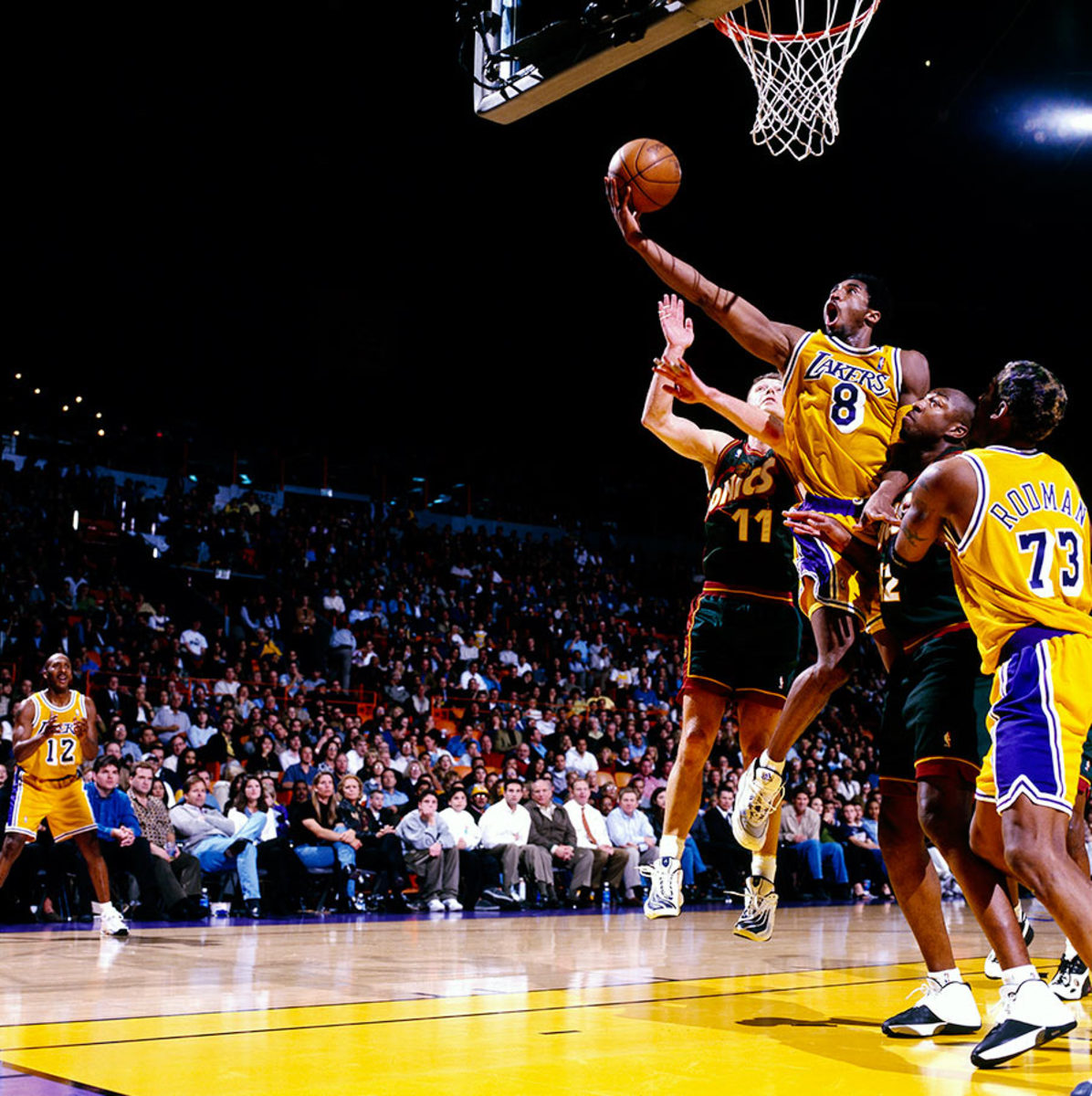
Dec. 26, 1999
Kobe Bryant
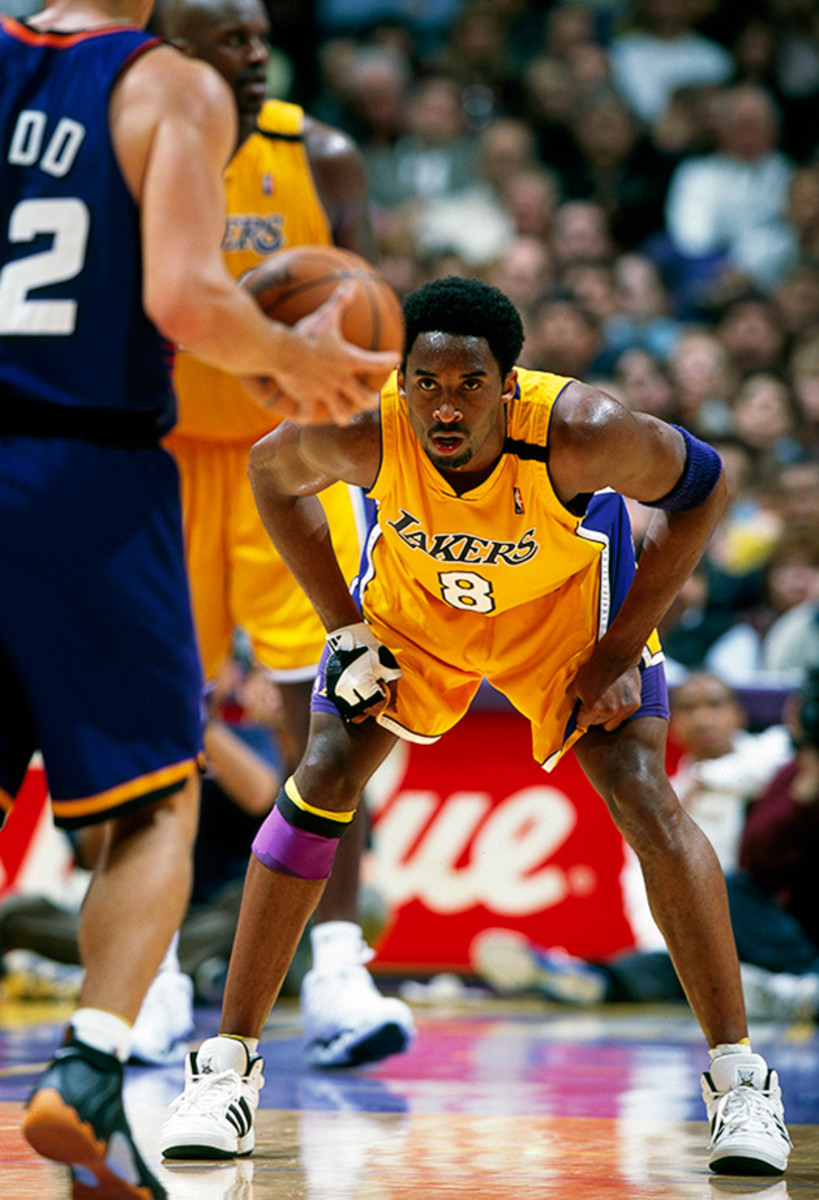
Jan. 17, 2000
Kobe Bryant
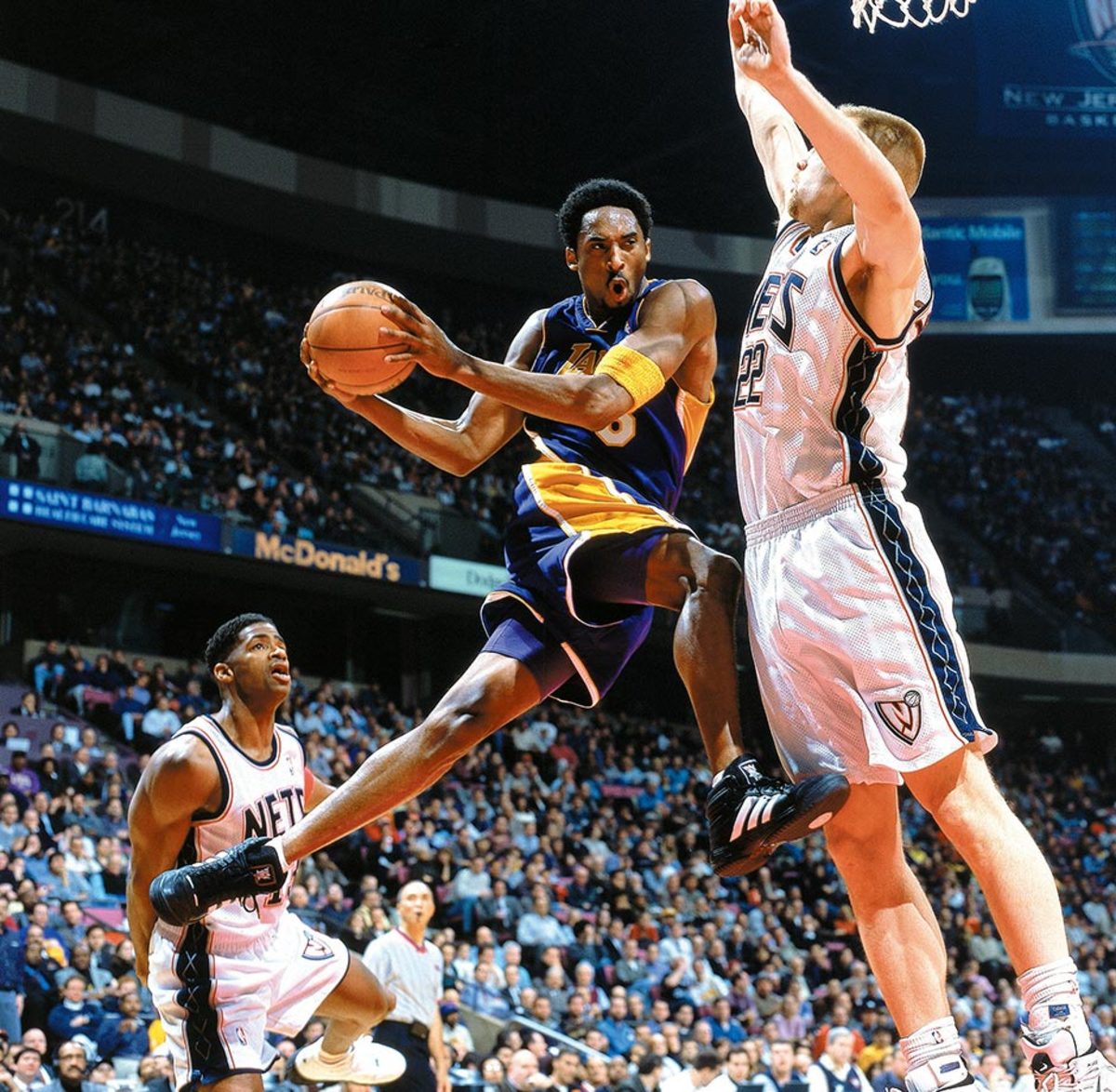
Feb. 22, 2000
Kobe Bryant
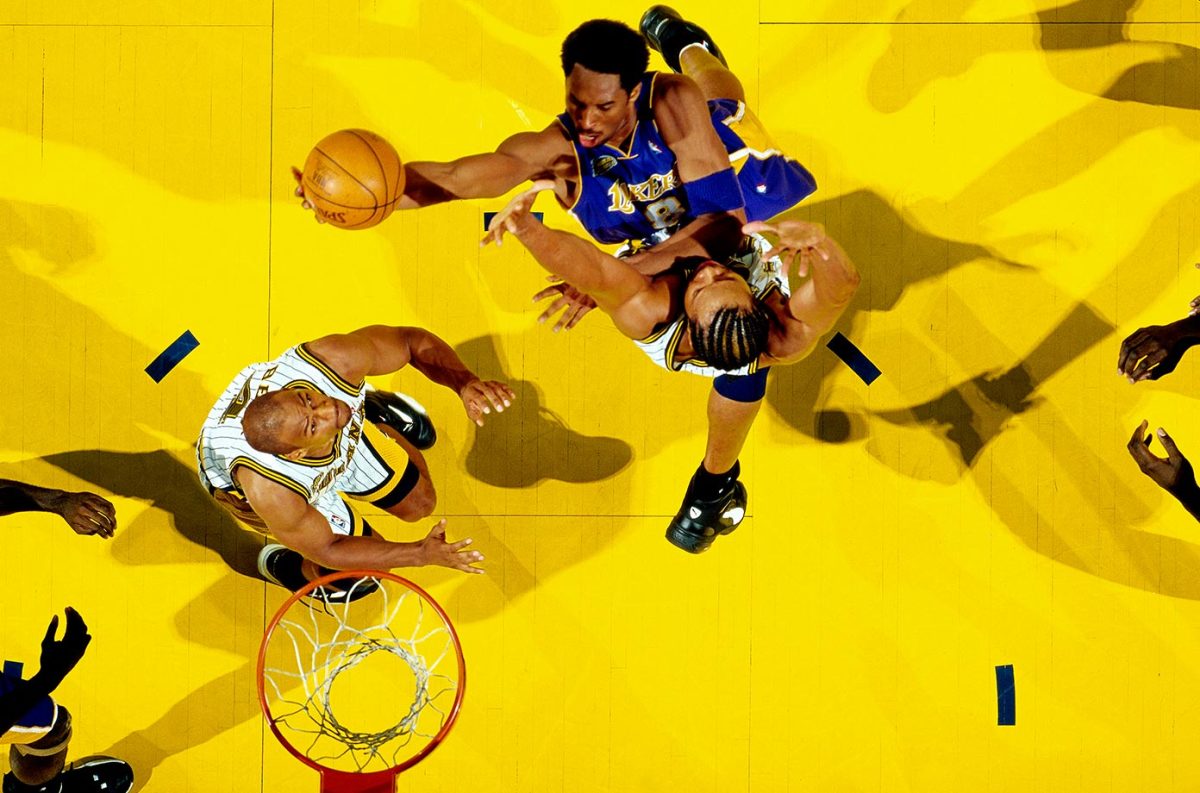
Feb. 26, 2000
Shaquille O'Neal, Kobe Bryant and Allen Iverson
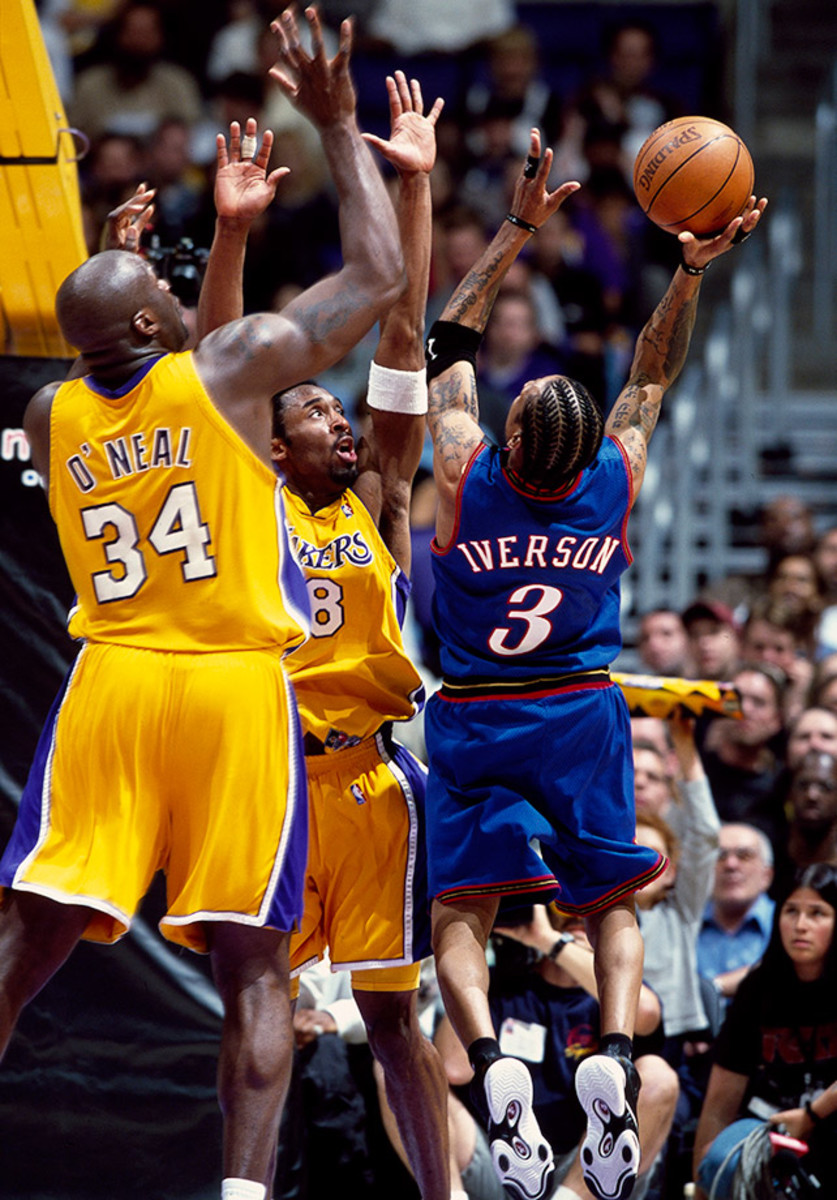
March 31, 2000
Kobe Bryant
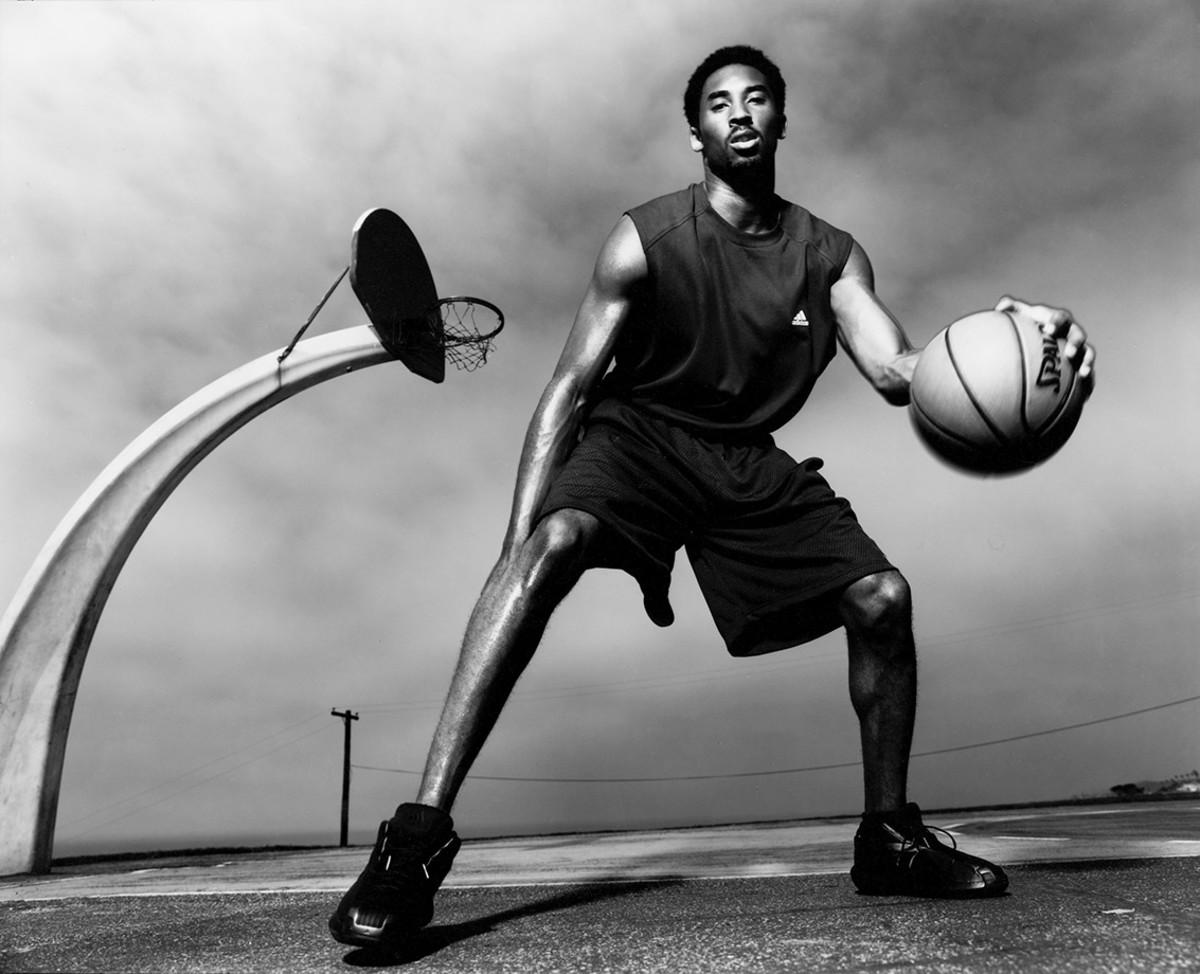
April 12, 2000
Kobe Bryant
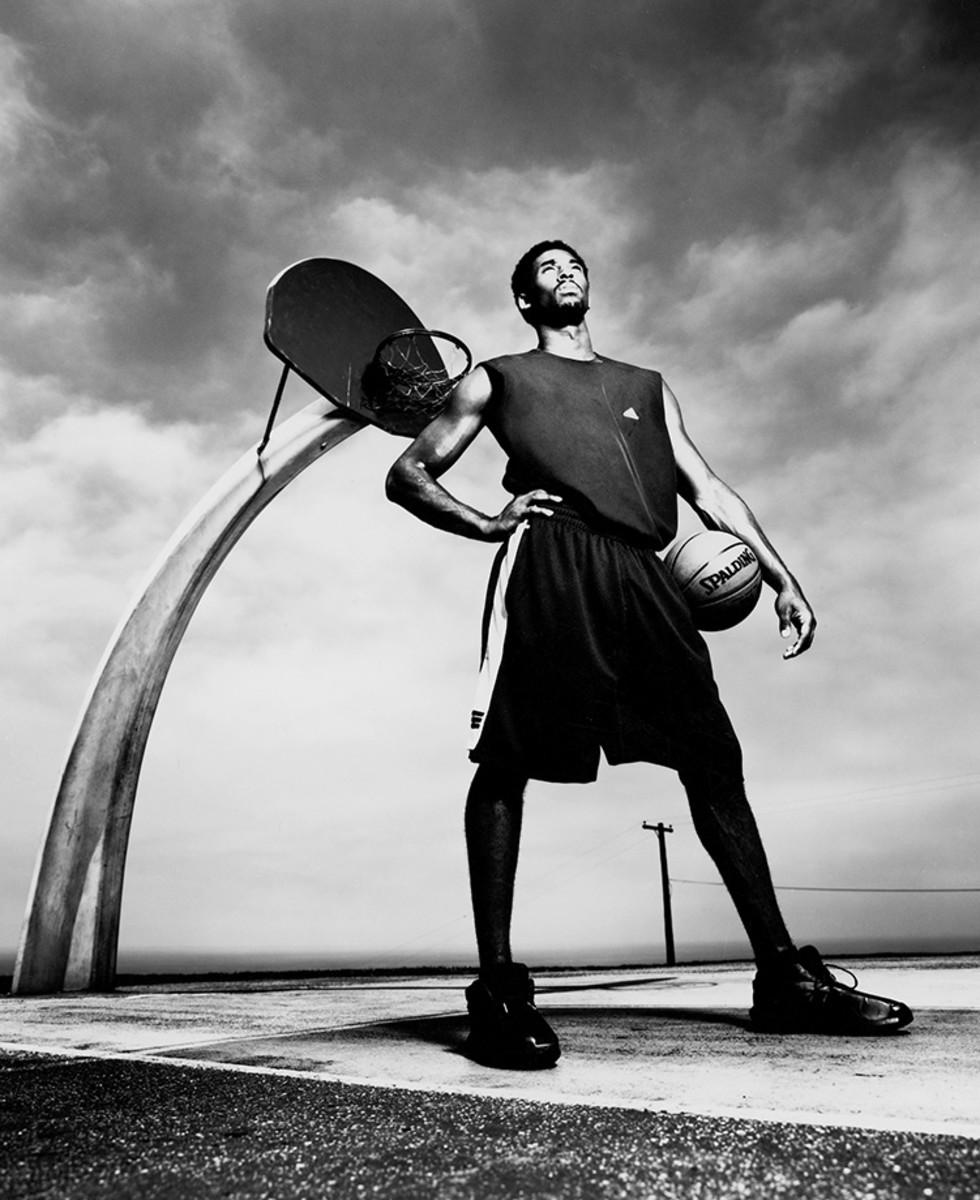
April 12, 2000
Kobe Bryant
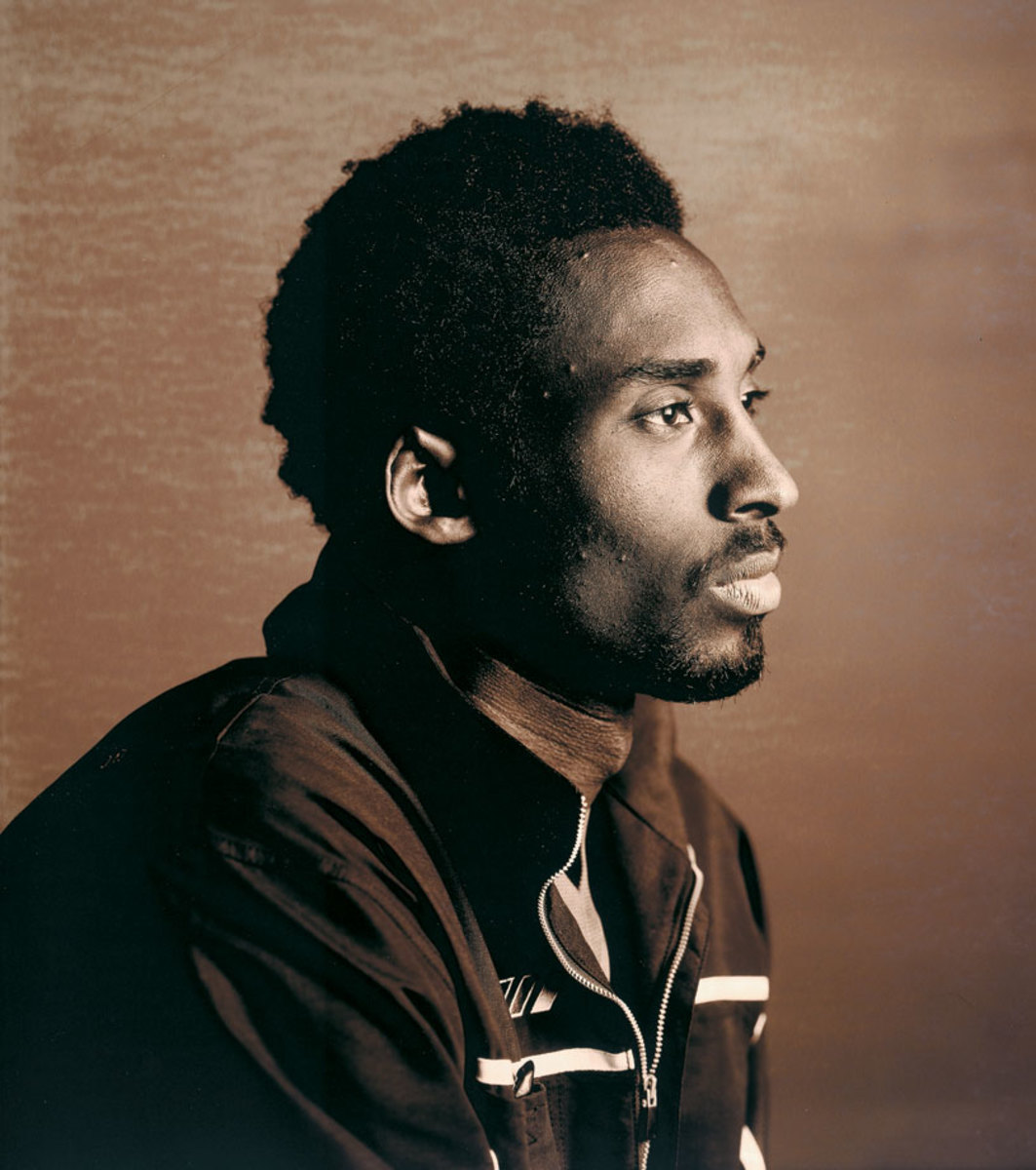
April 12, 2000
Kobe Bryant
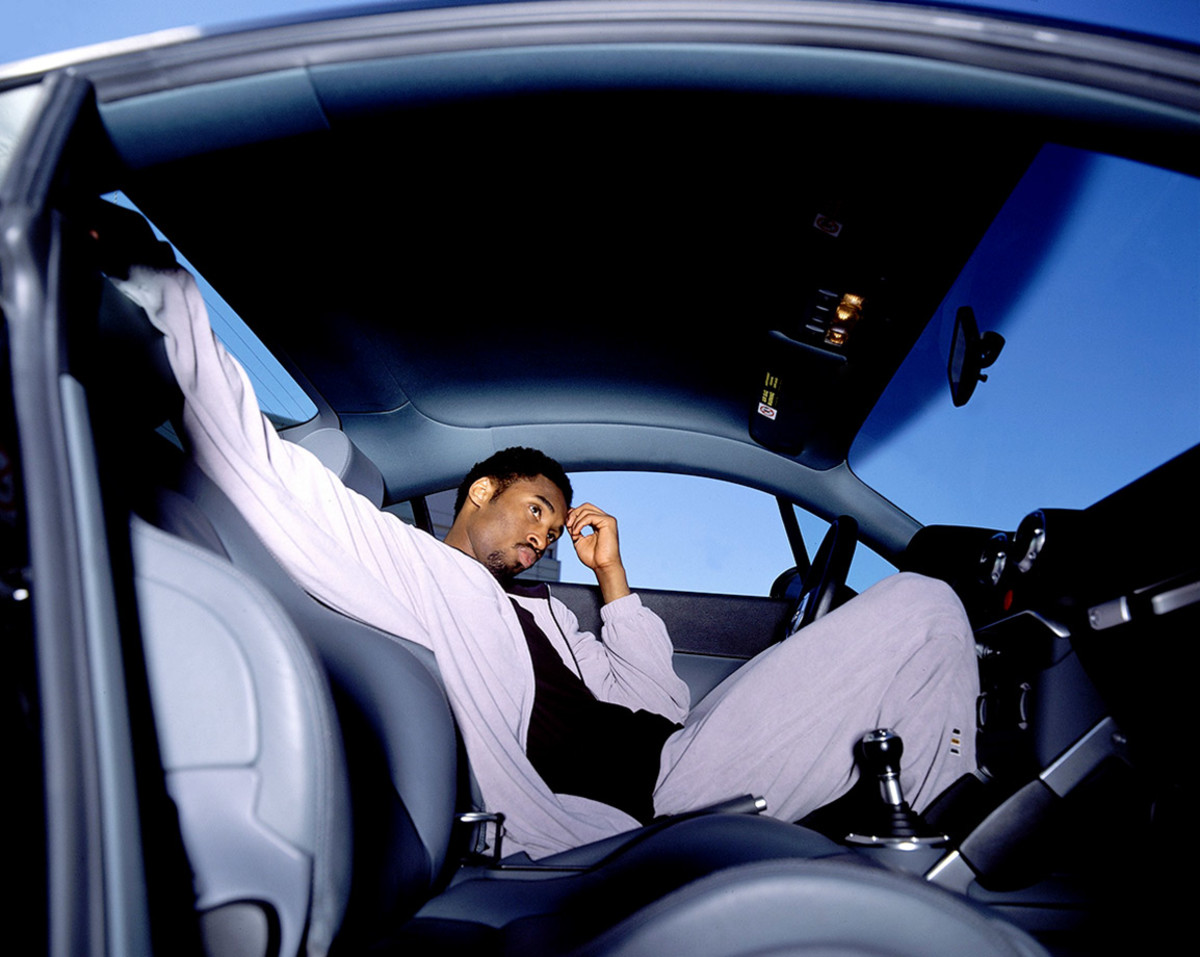
April 12, 2000
Kobe Bryant
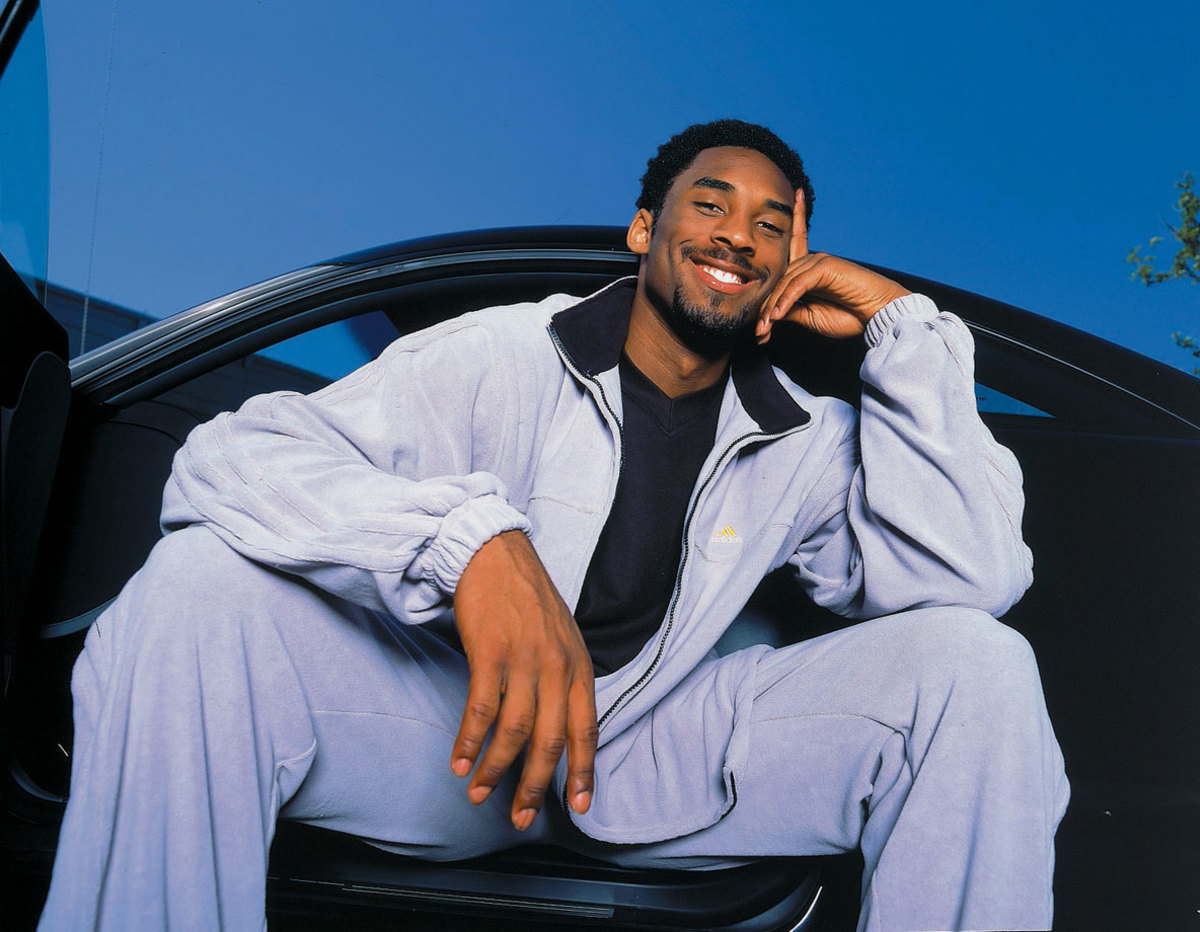
April 12, 2000
Kobe Bryant
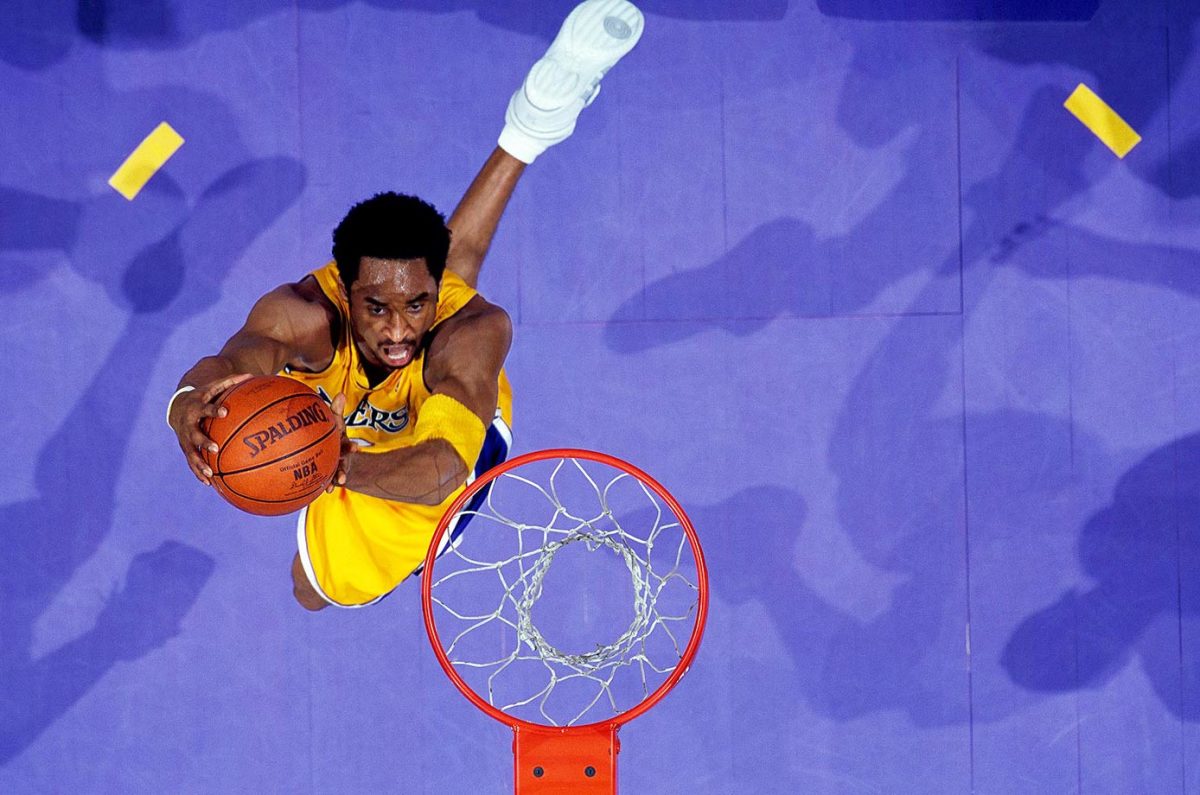
April 27, 2000 — Western Conference First Round, Game 2
Kobe Bryant
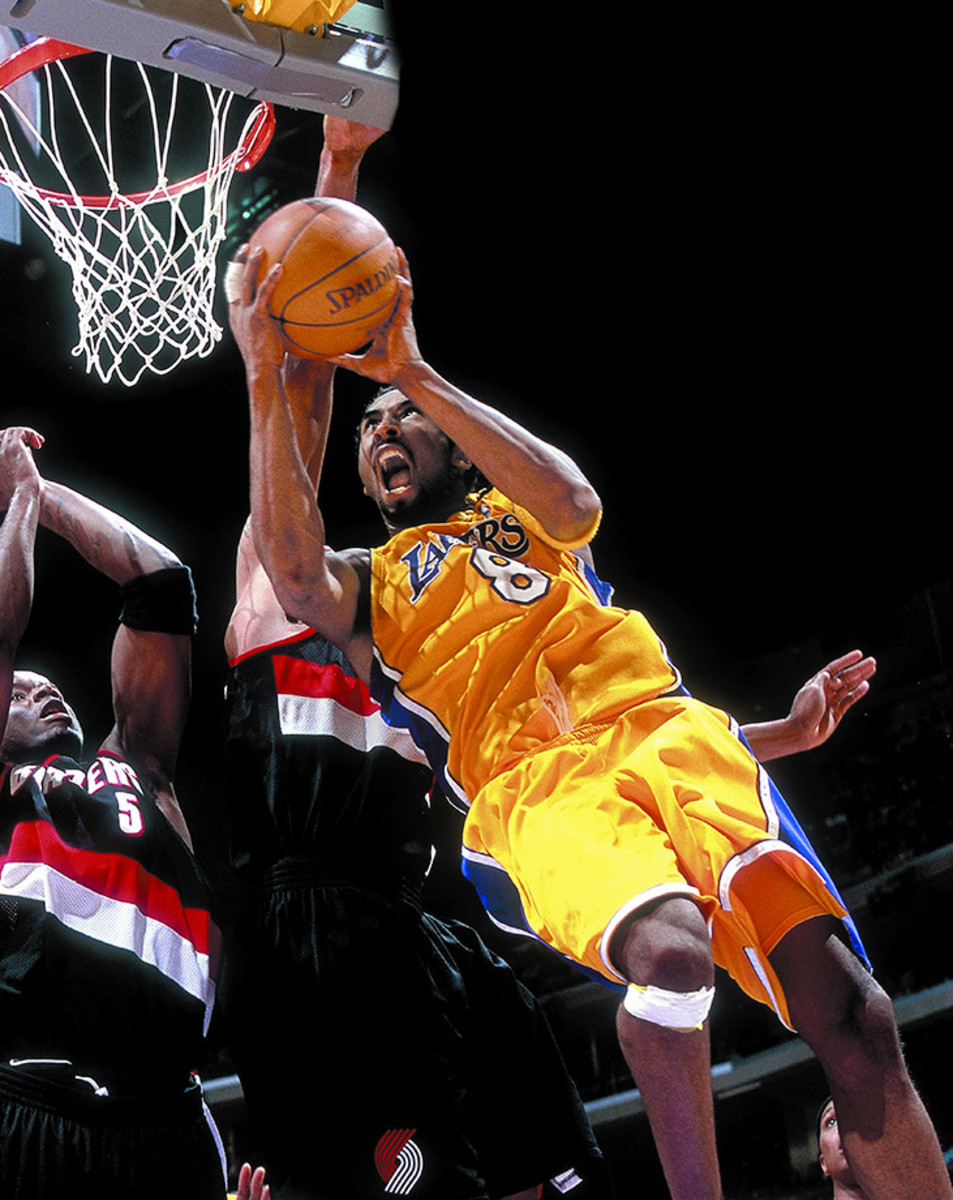
June 4, 2000 — Western Conference Finals, Game 7
Kobe Bryant and Mark Jackson
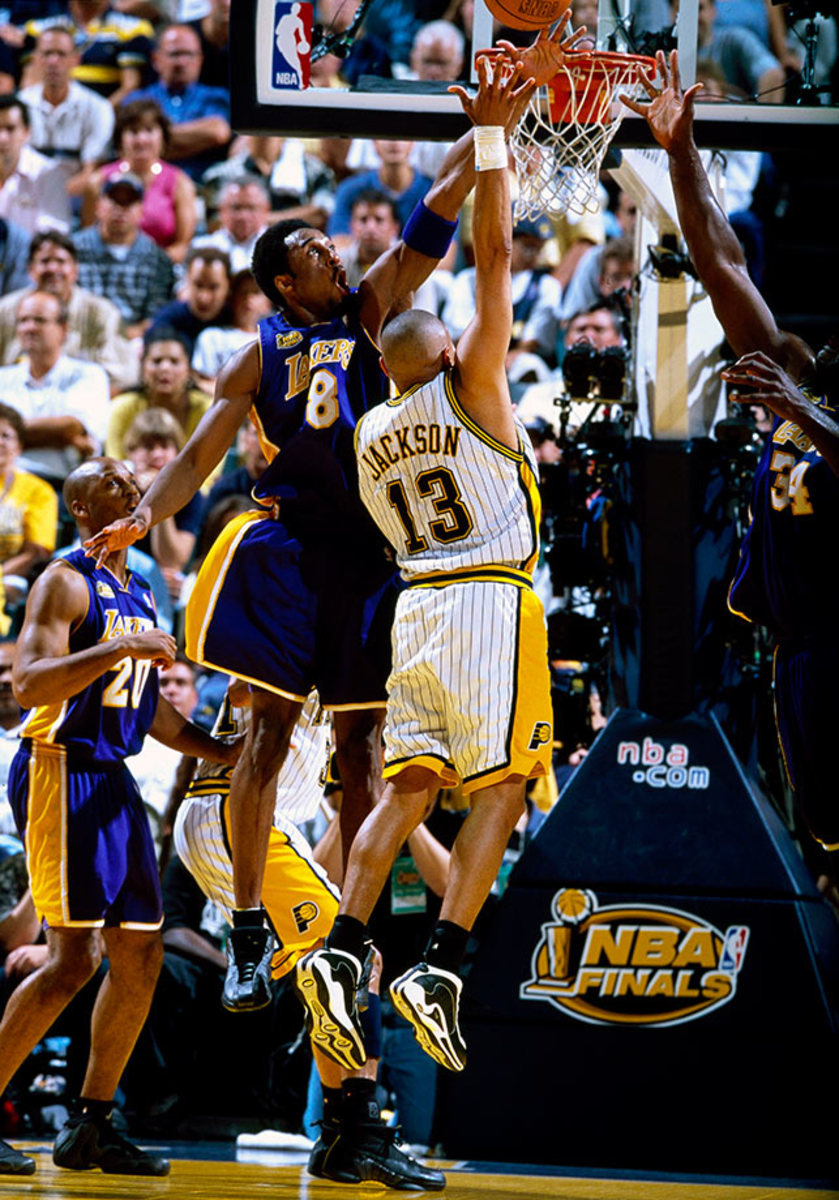
June 14, 2000 — NBA Finals, Game 4
Kobe Bryant
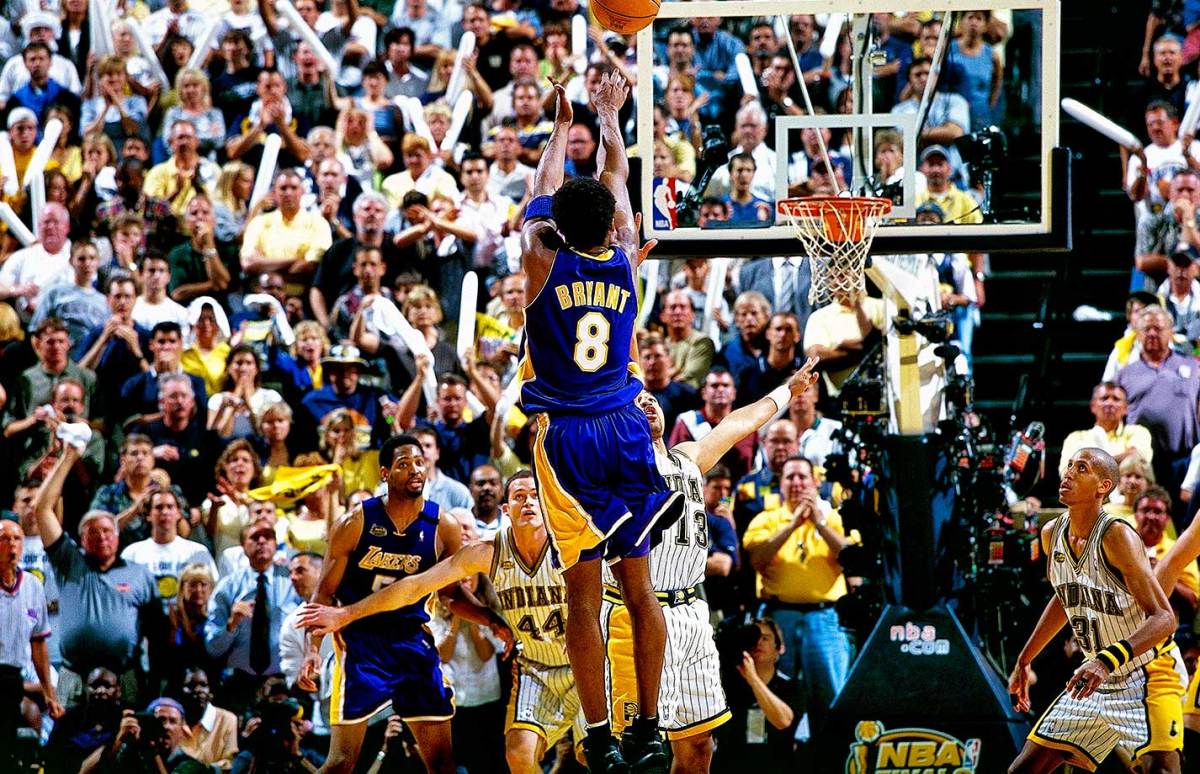
June 14, 2000 — NBA Finals, Game 4
Kobe Bryant and Dale Davis
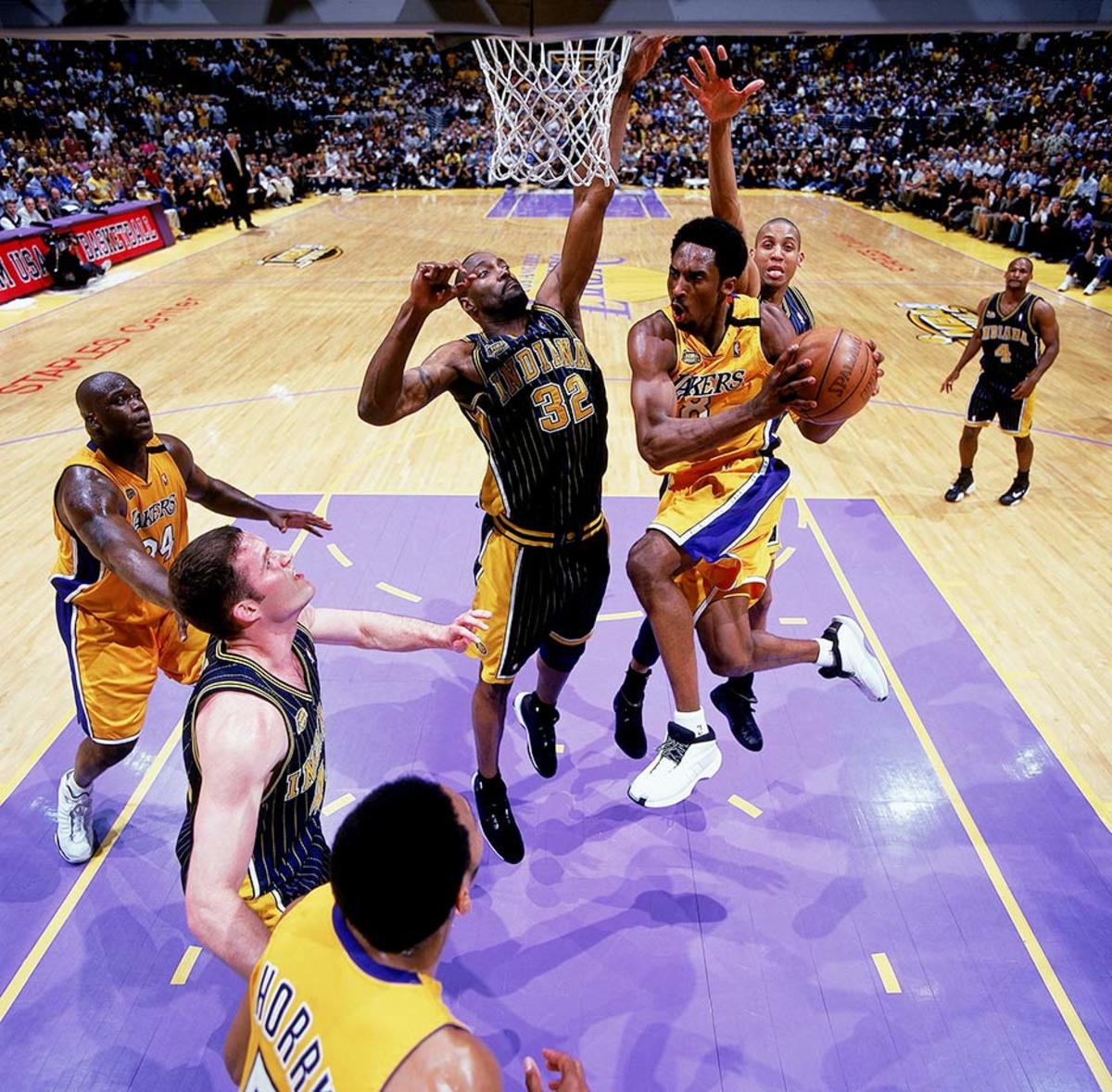
June 19, 2000 — NBA Finals, Game 6
Kobe Bryant and Shaquille O'Neal
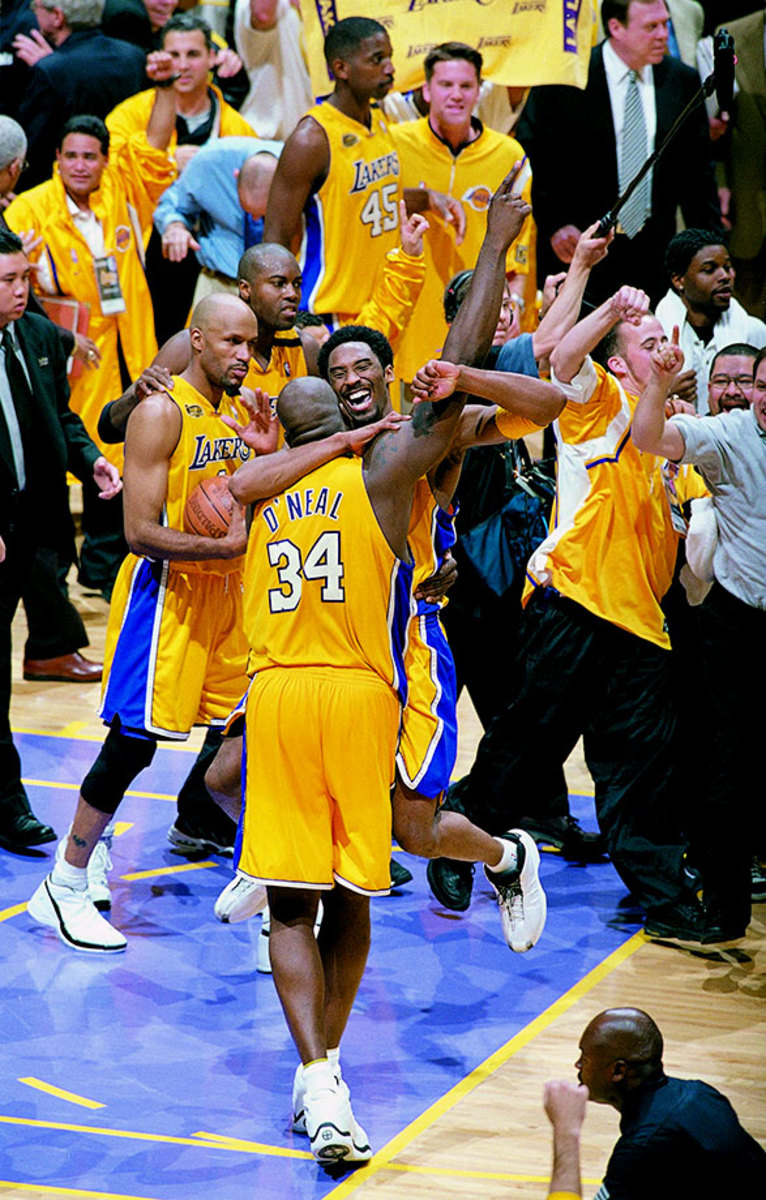
June 19, 2000 — NBA Finals, Game 6
Kobe Bryant and Shaquille O'Neal
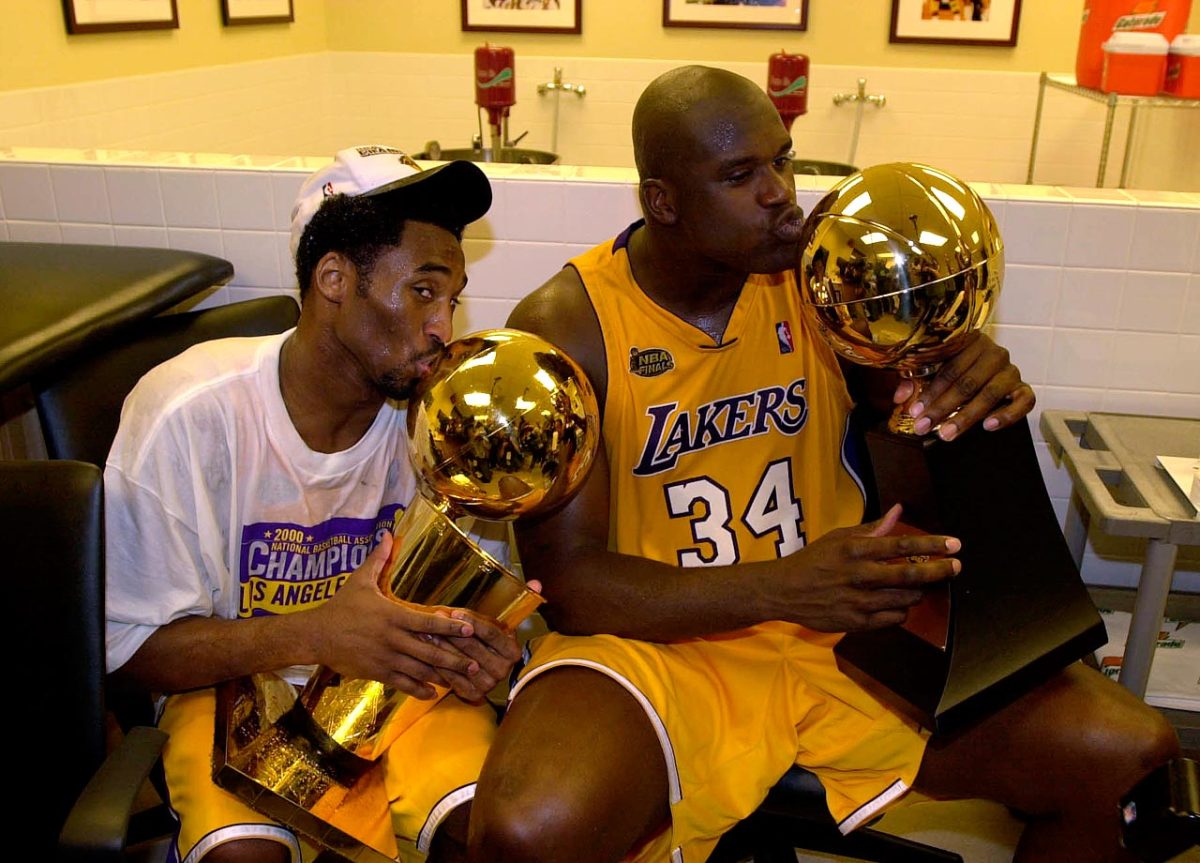
June 19, 2000 — NBA Finals, Game 6
Kobe Bryant
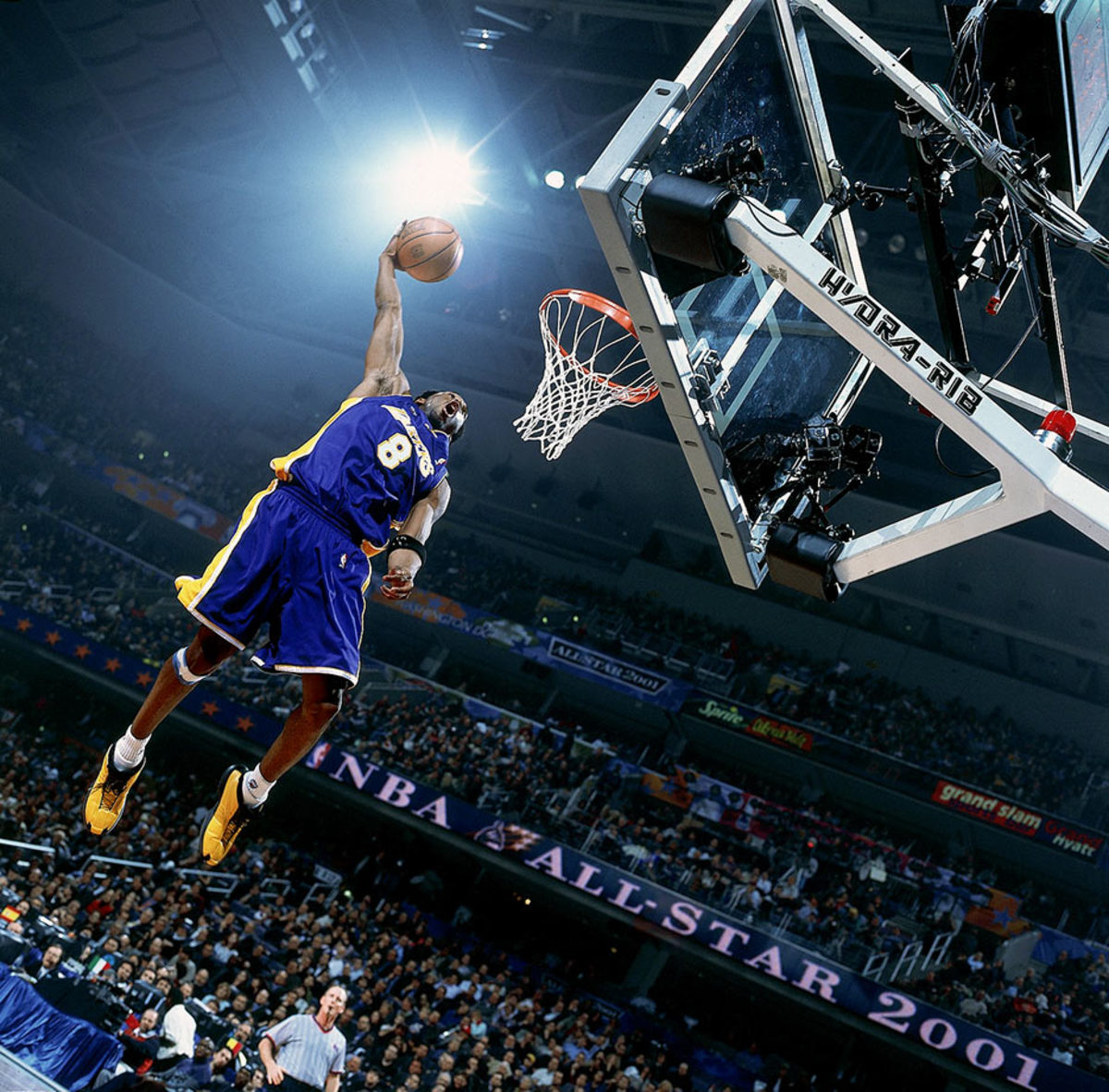
Feb. 10, 2001 — NBA All-Star Game
Kobe Bryant and Scottie Pippen
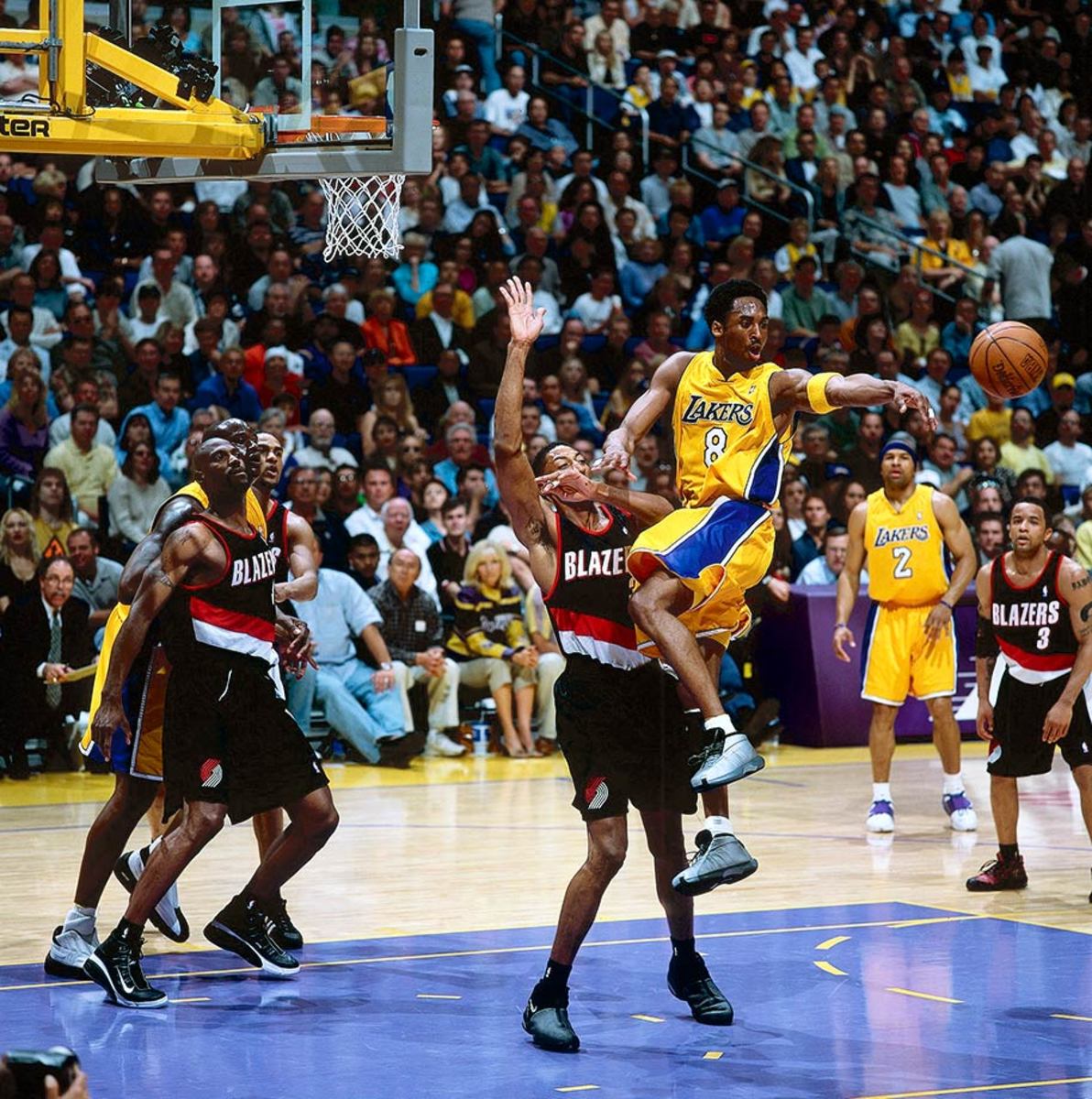
April 22, 2001 — Western Conference First Round, Game 1
Kobe Bryant, Rasheed Wallace, Stacey Augmon and Shaquille O'Neal
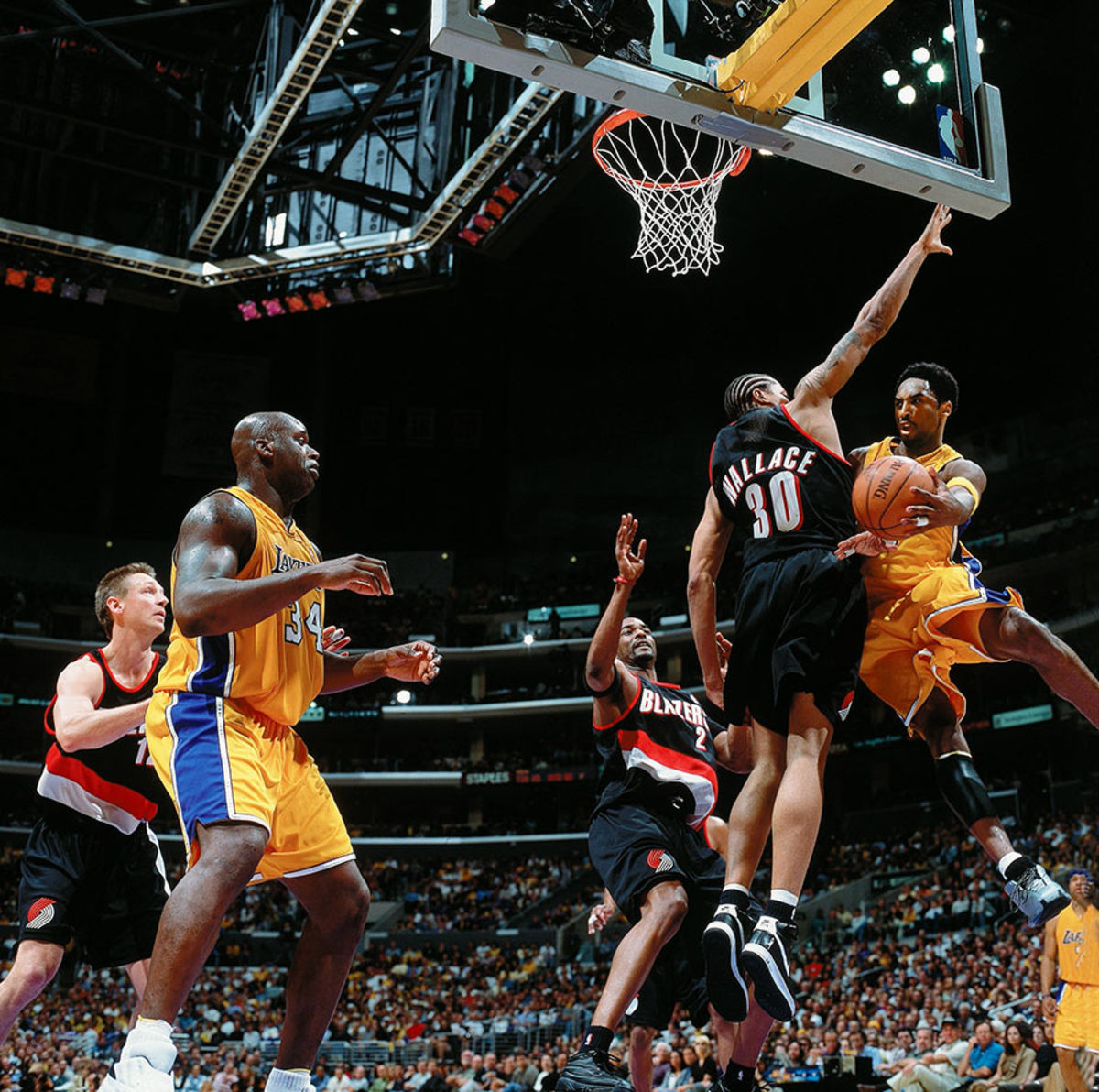
April 22, 2001 — Western Conference First Round, Game 1
Kobe Bryant and Phil Jackson
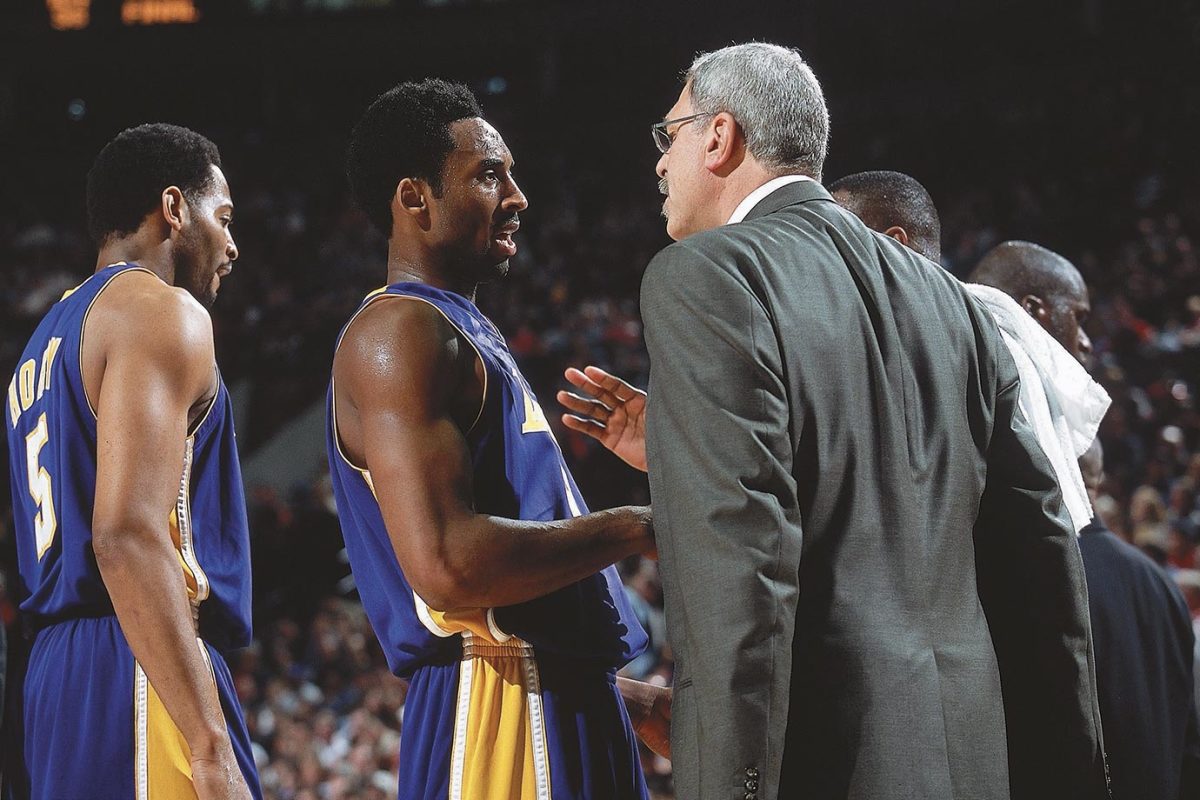
April 29, 2001 — Western Conference First Round, Game 3
Kobe Bryant and Doug Christie
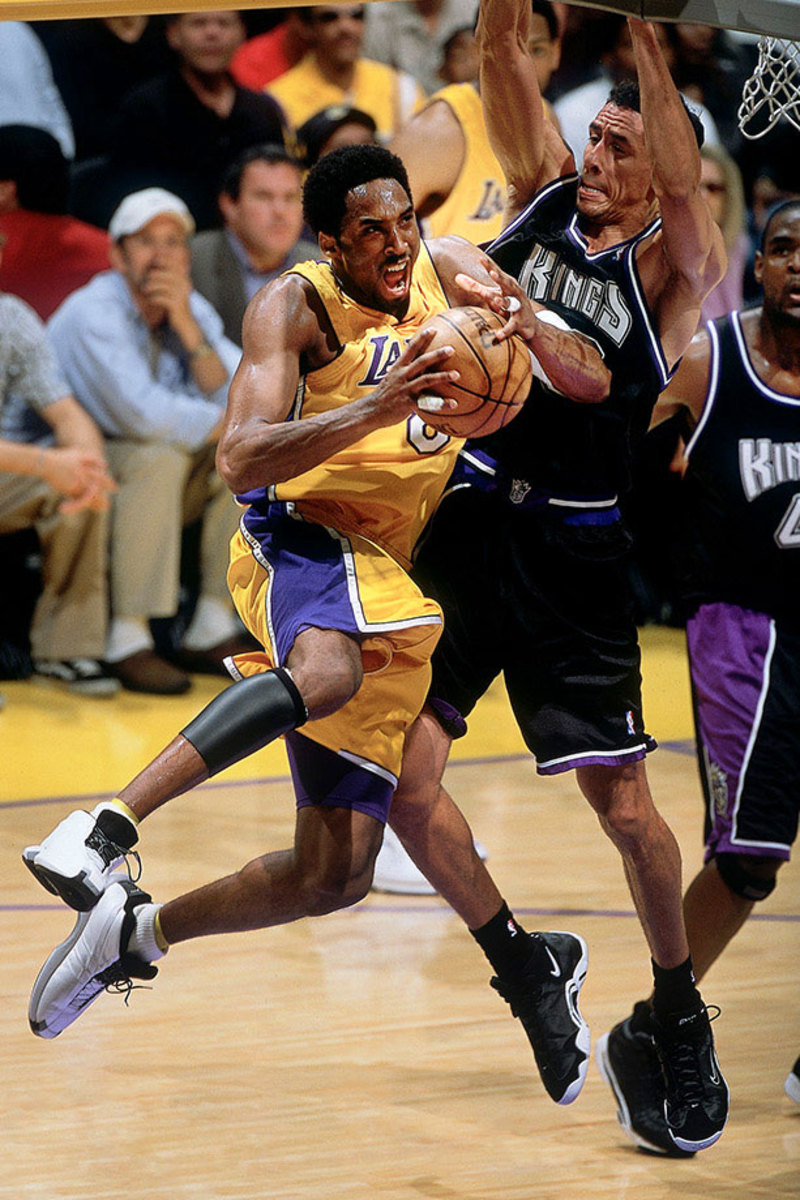
May 8, 2001 — Western Conference Semifinals, Game 2
Kobe Bryant and David Robinson
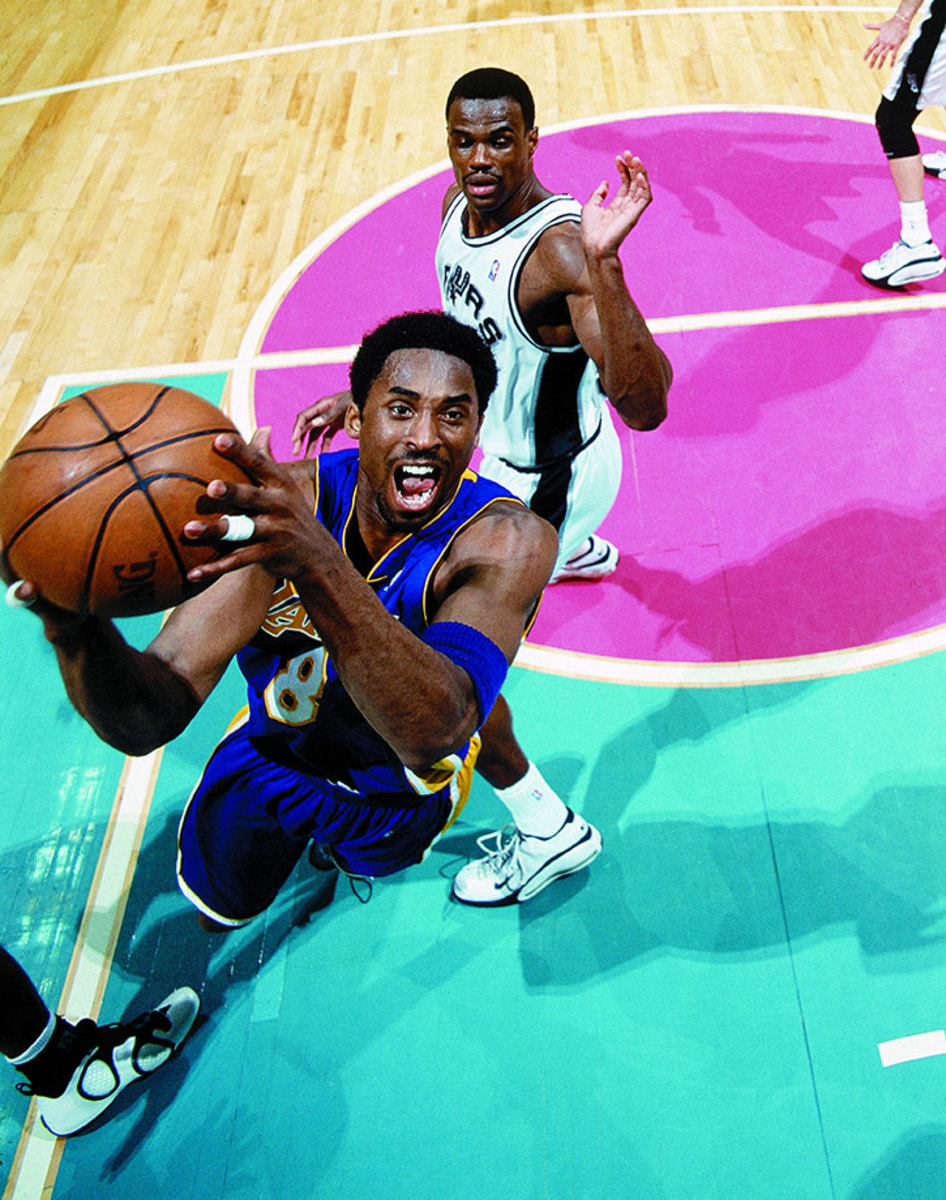
May 19, 2001 — Western Conference Finals, Game 1
Shaquille O'Neal and Kobe Bryant
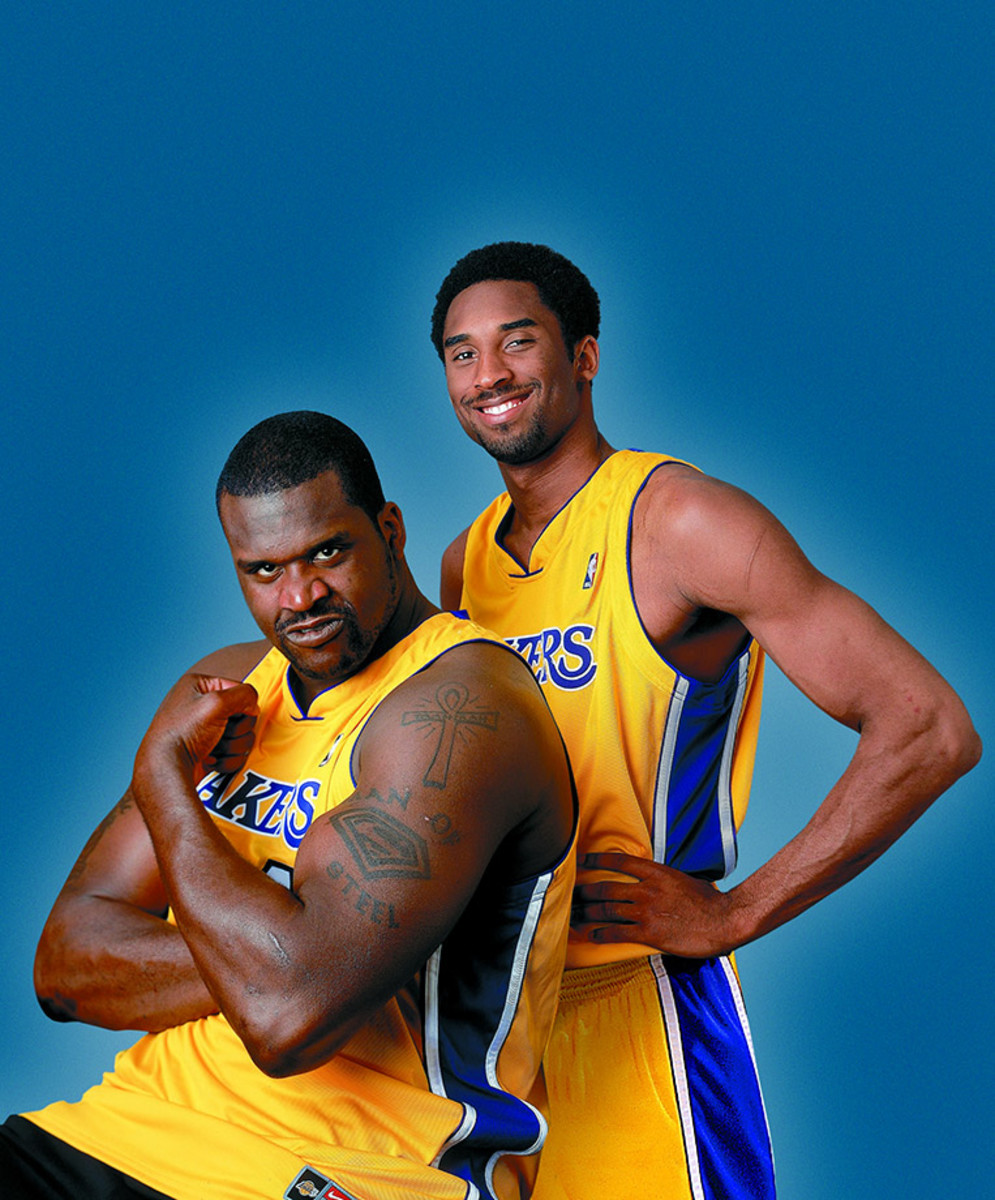
June 1, 2001
Kobe Bryant and Dikembe Mutombo
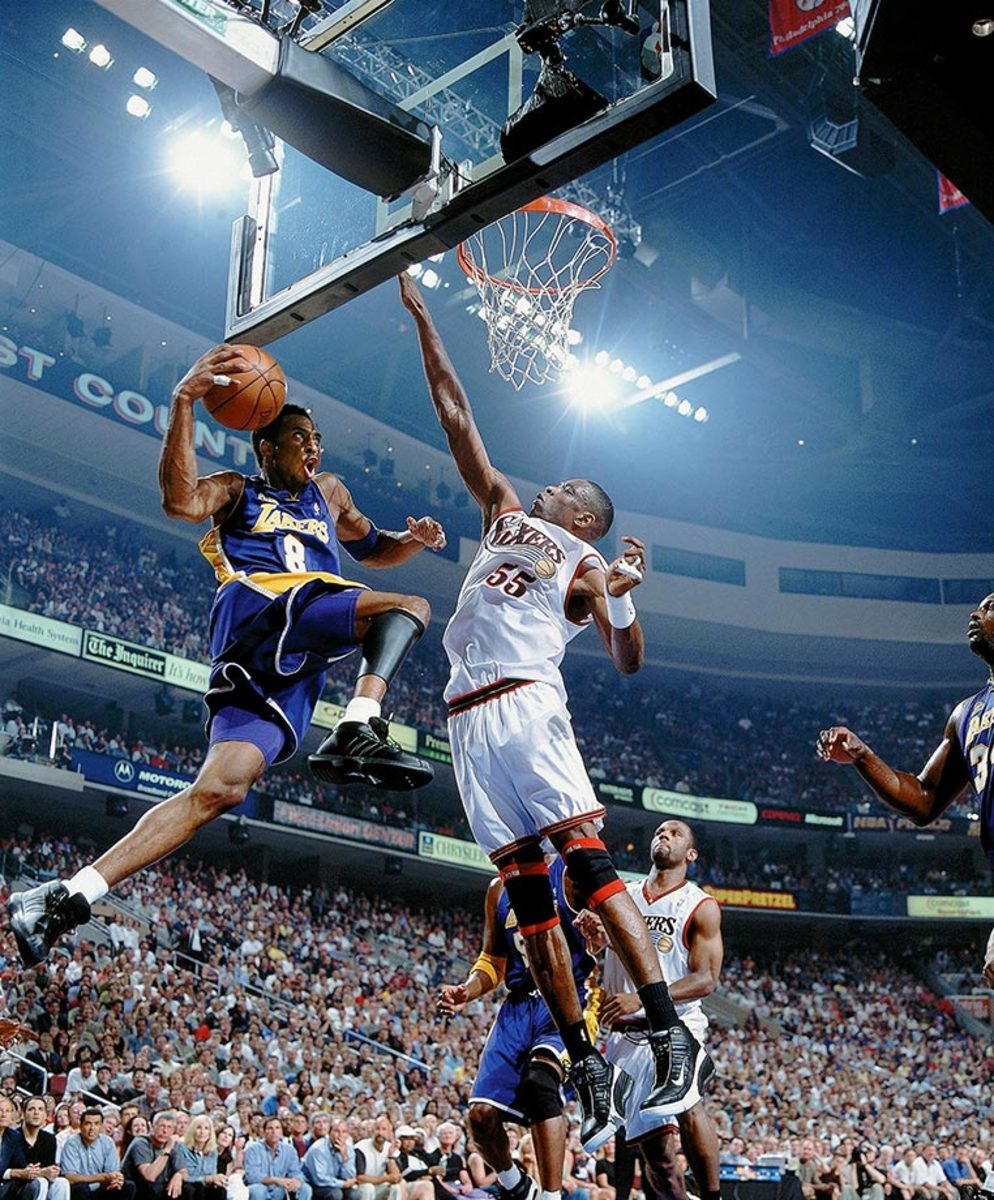
June 13, 2001 — NBA Finals, Game 4
Kobe Bryant and Chris Kaman
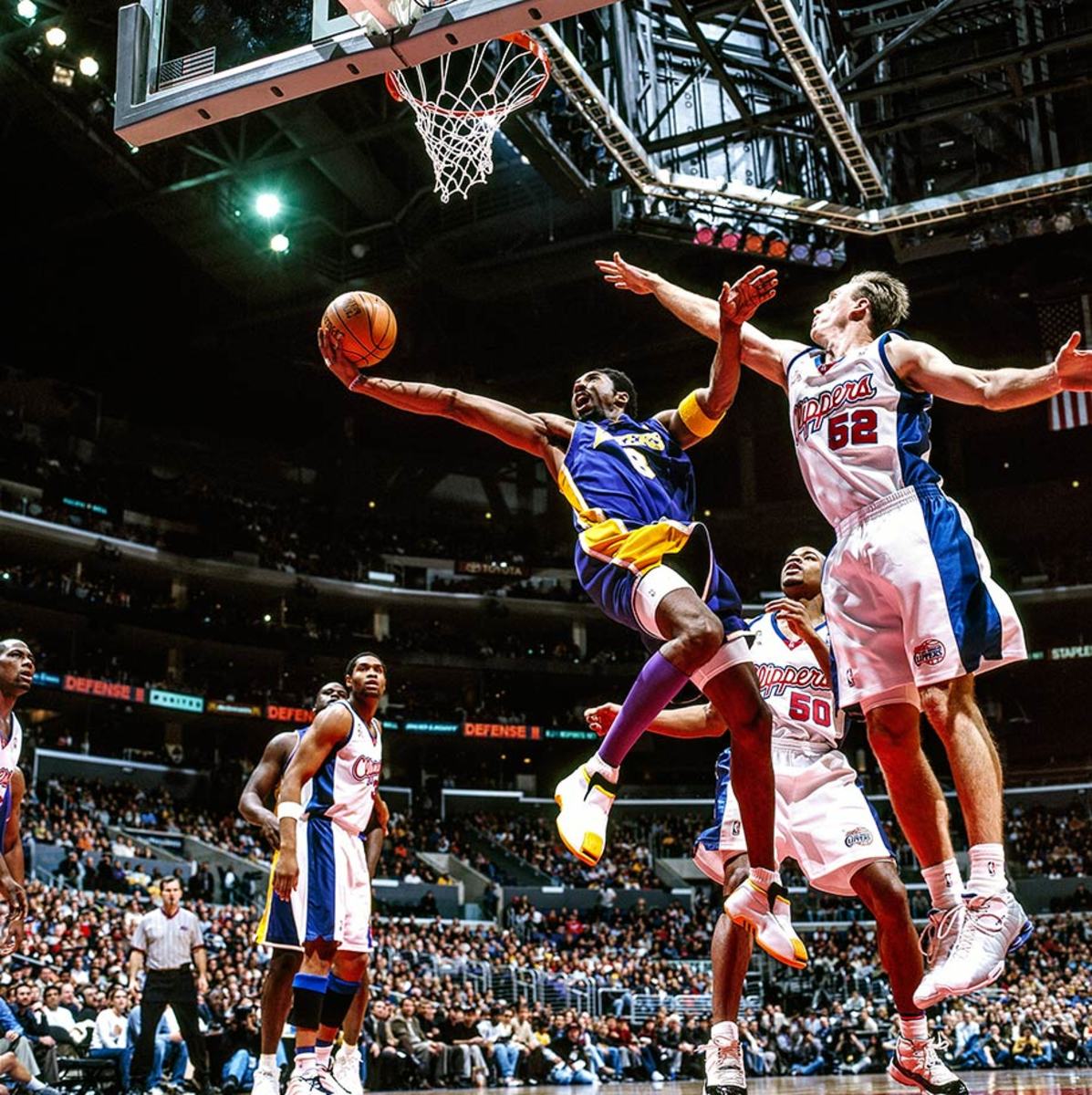
Feb. 4, 2002
Kobe Bryant
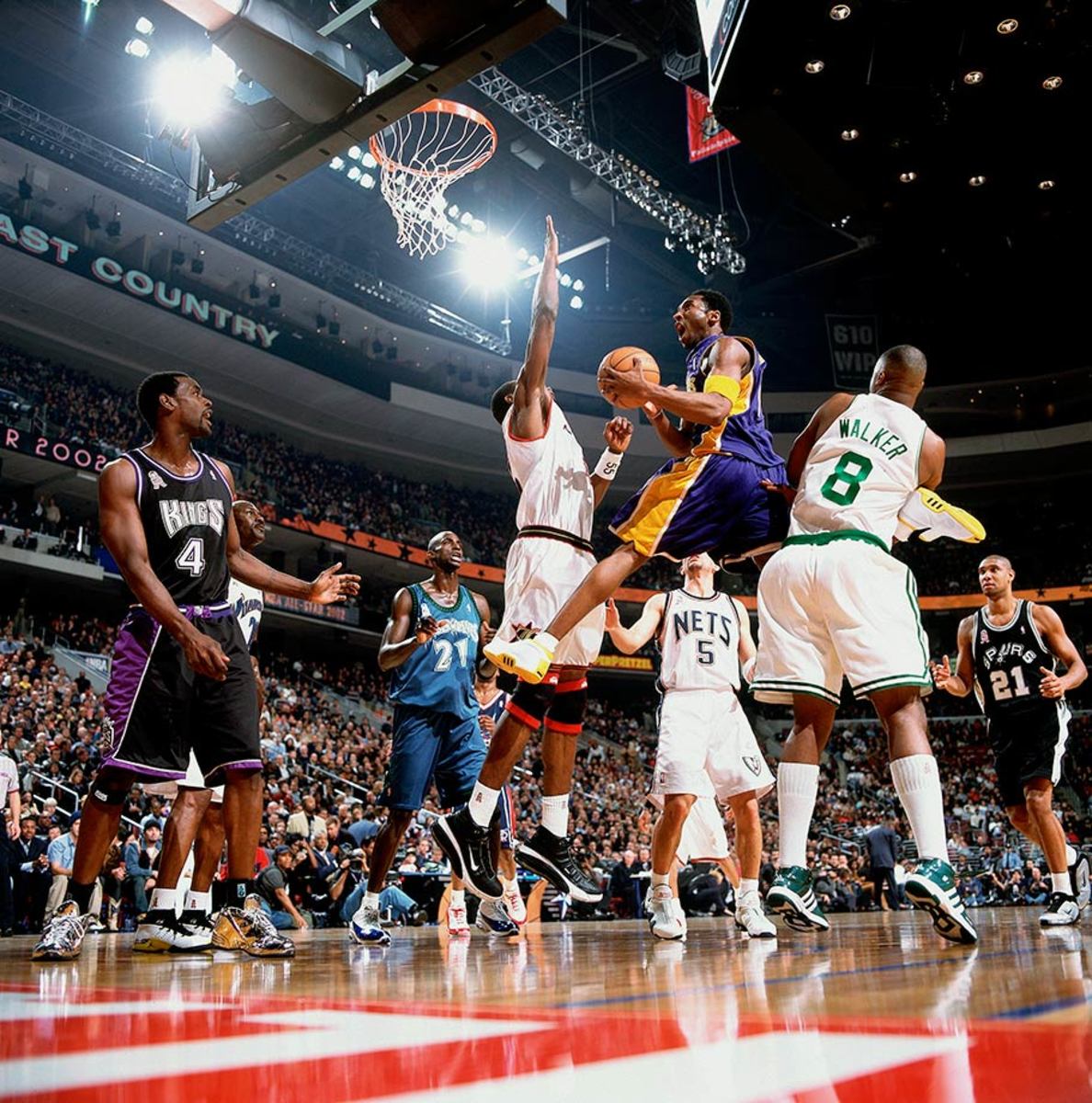
Feb. 10, 2002 — NBA All-Star Game
Kobe Bryant
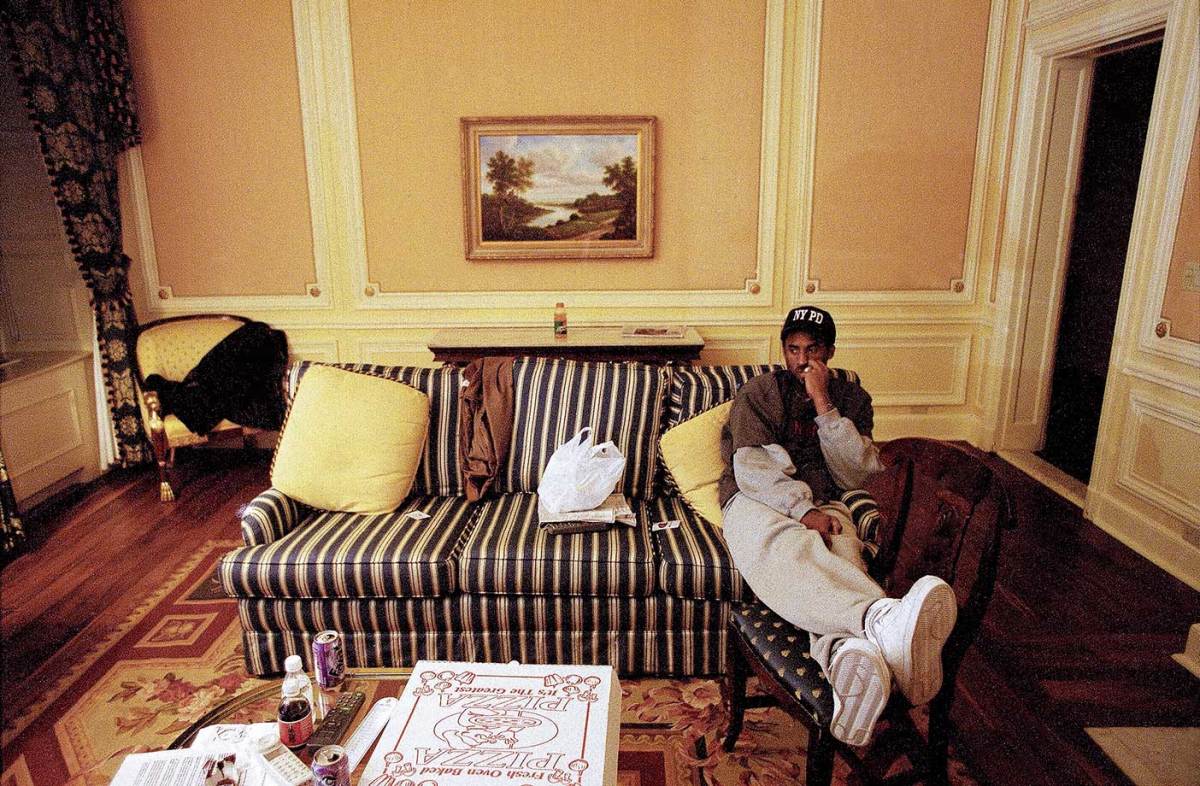
Feb. 24, 2002
Shaquille O'Neal and Kobe Bryant
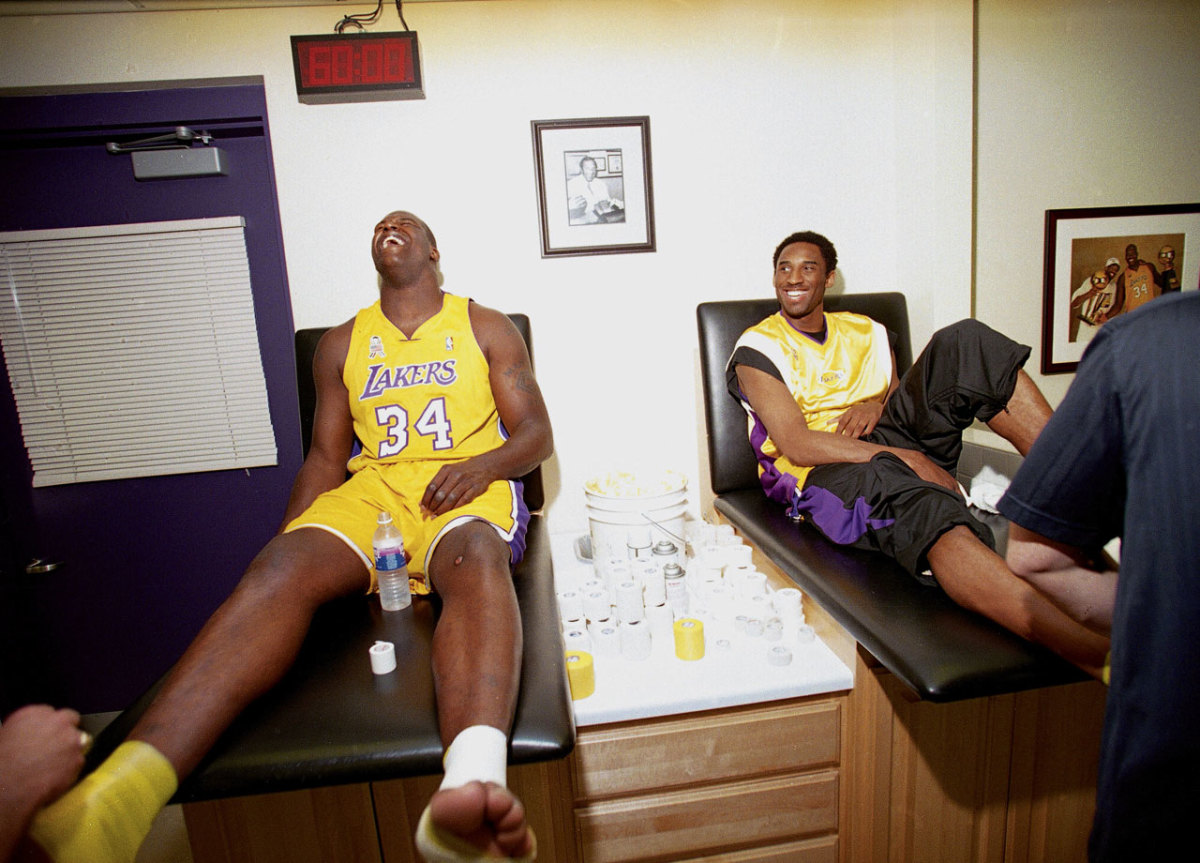
March 1, 2002
Kobe Bryant and Derek Anderson
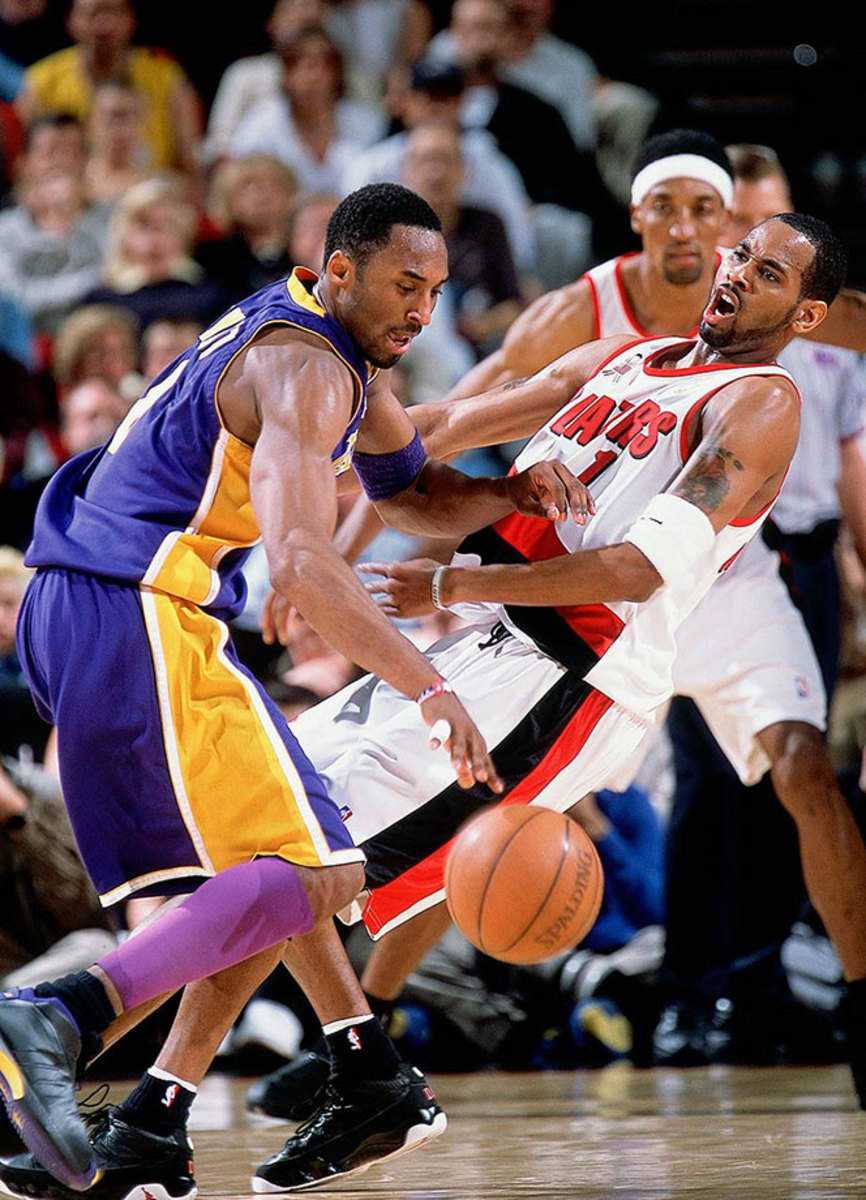
April 28, 2002 — Western Conference First Round, Game 1
Kobe Bryant and Bobby Jackson
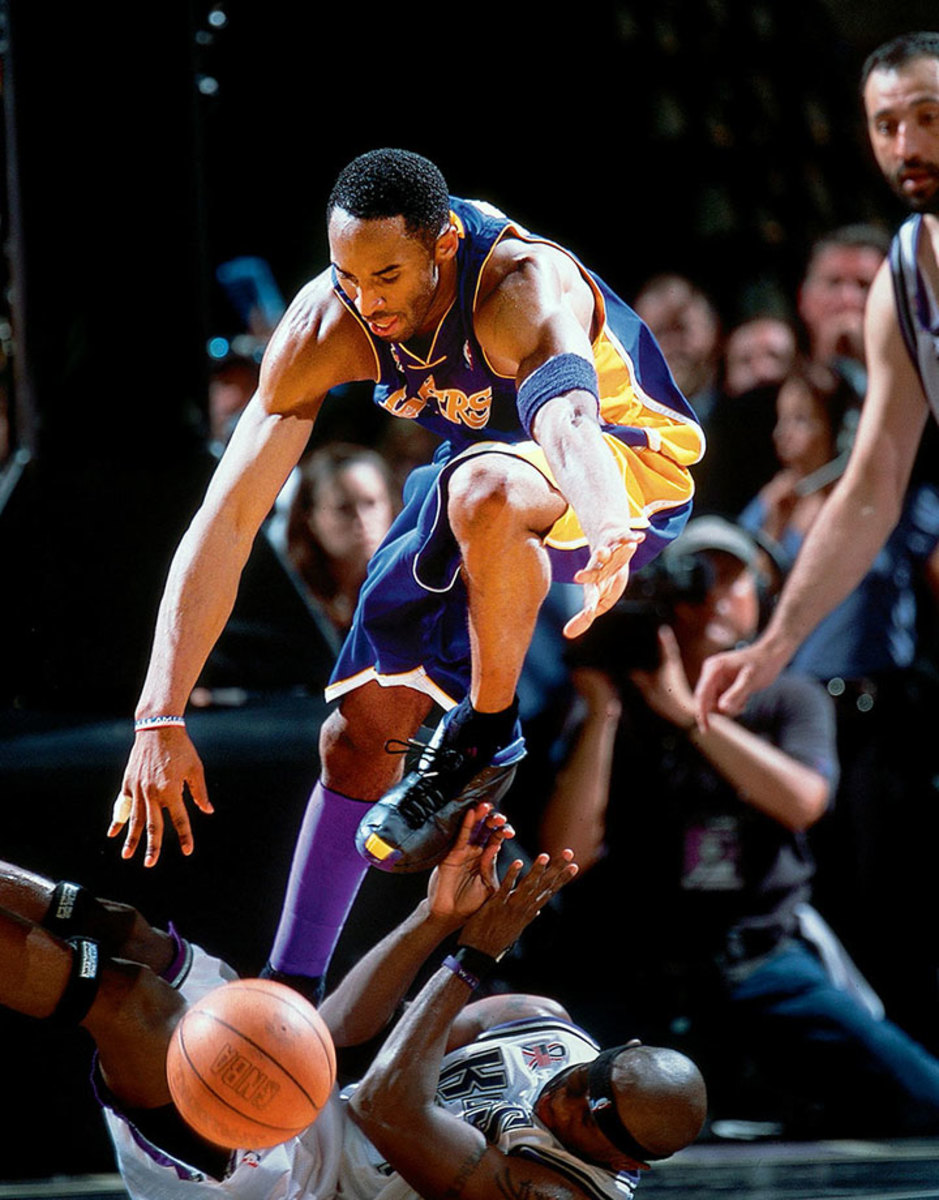
June 2, 2002 — Western Conference Finals, Game 7
Kobe Bryant and Aaron Williams
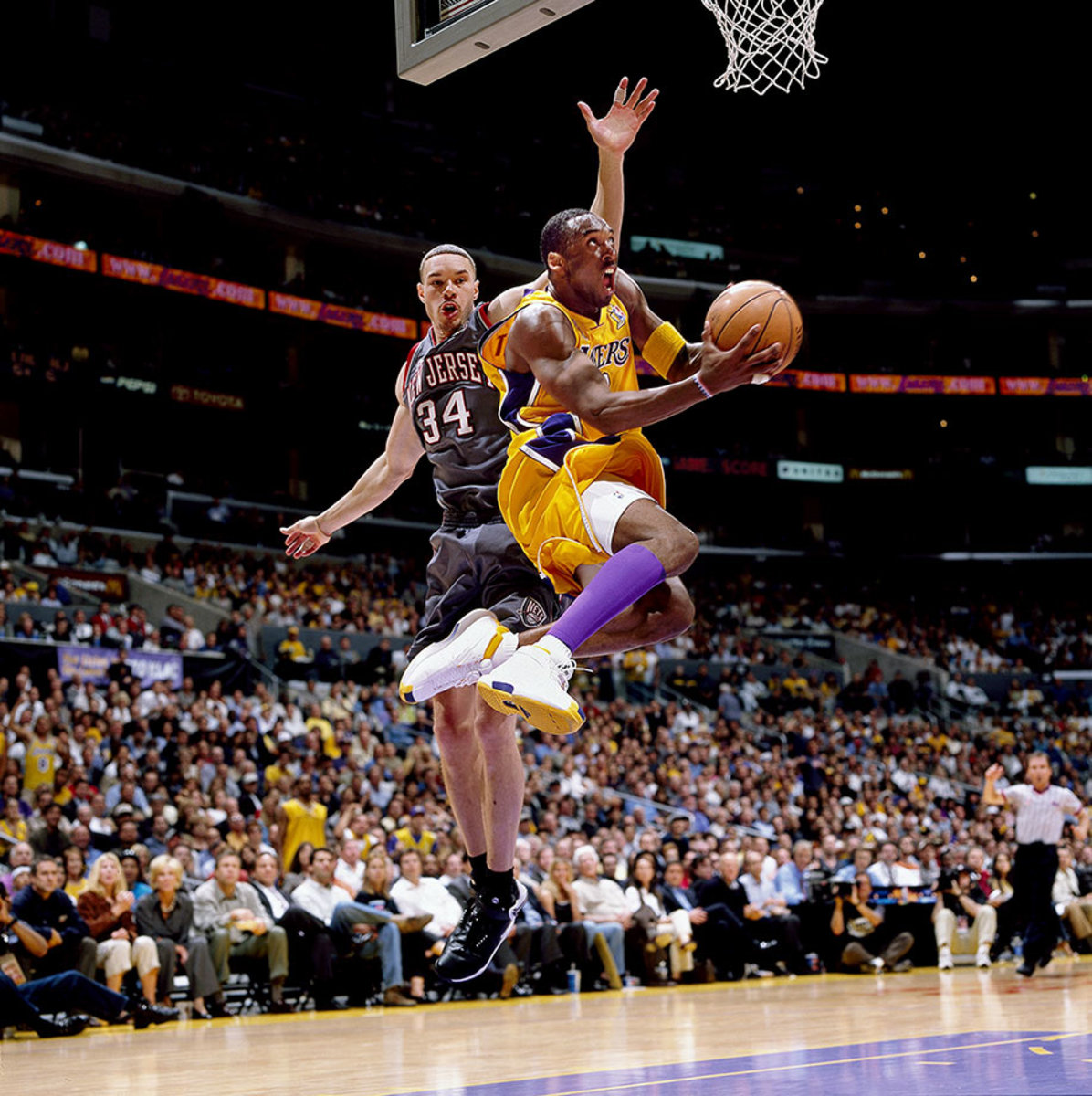
June 5, 2002 — NBA Finals, Game 1
Kobe Bryant
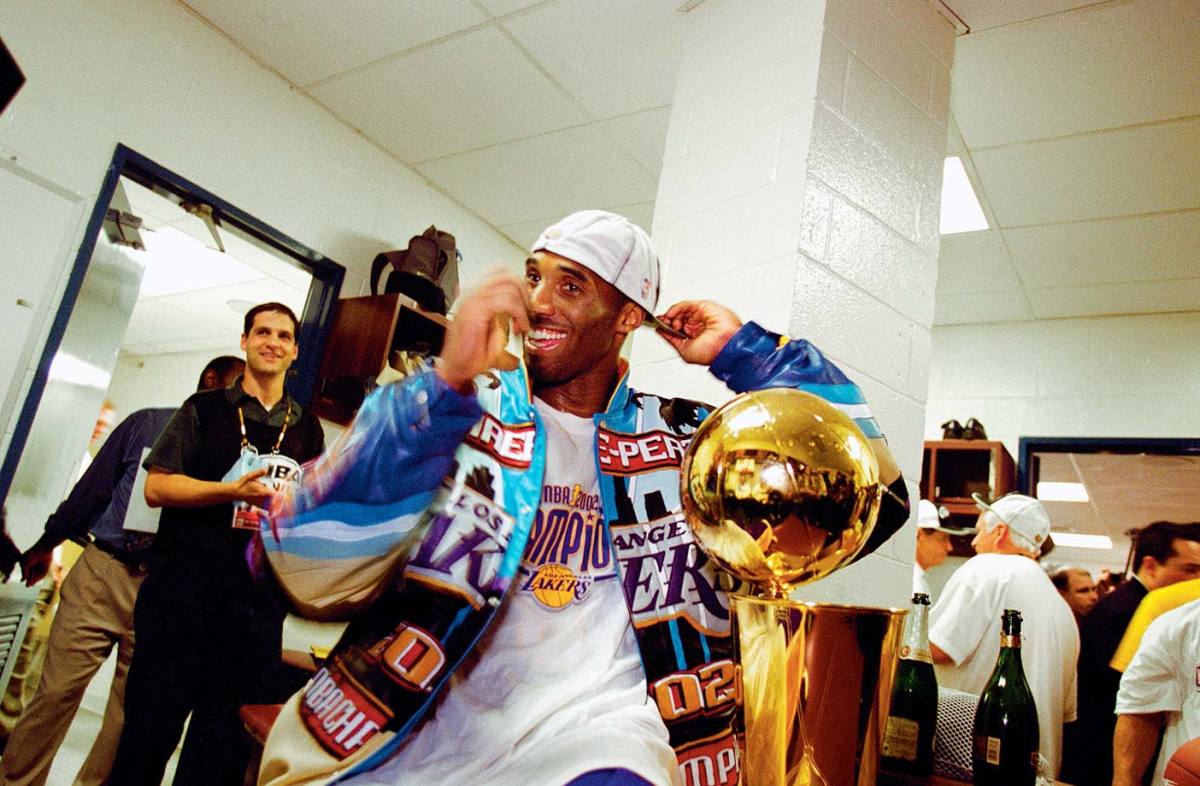
June 12, 2002 — NBA Finals, Game 4
Kobe Bryant and Shaquille O'Neal
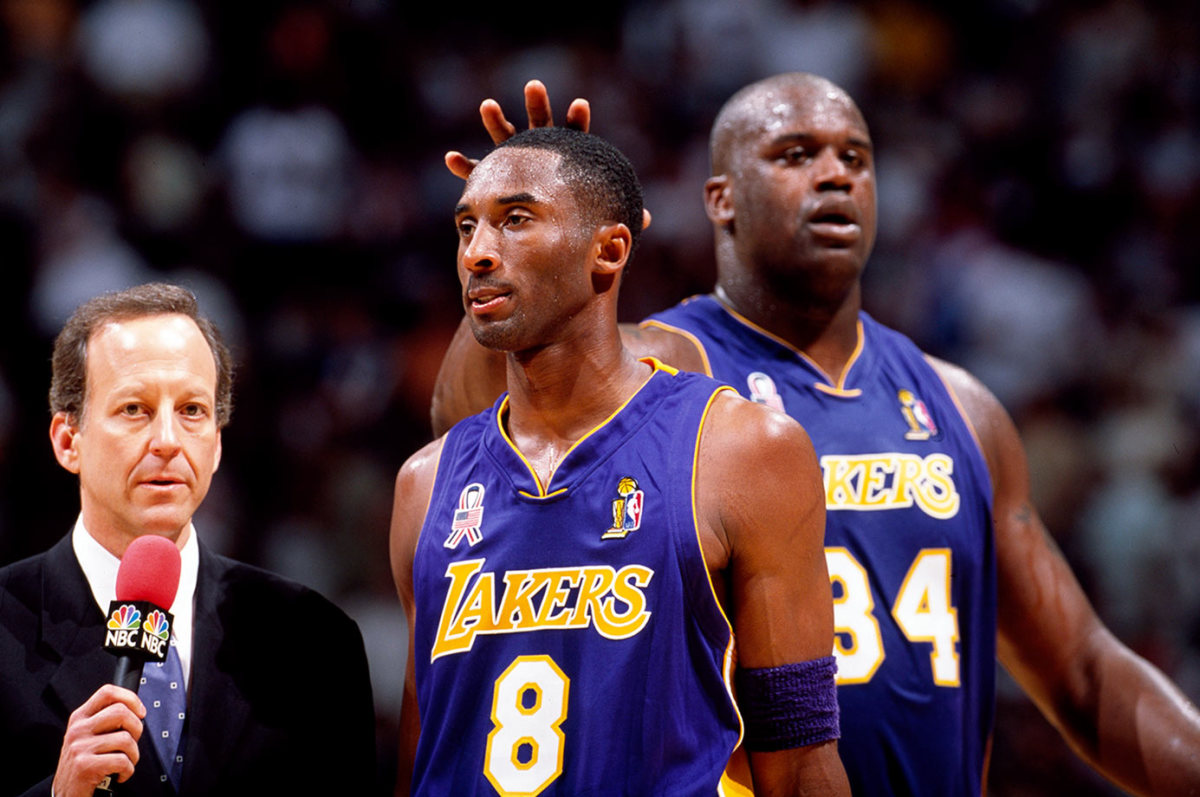
June 9, 2002 — NBA Finals, Game 3
Kobe Bryant
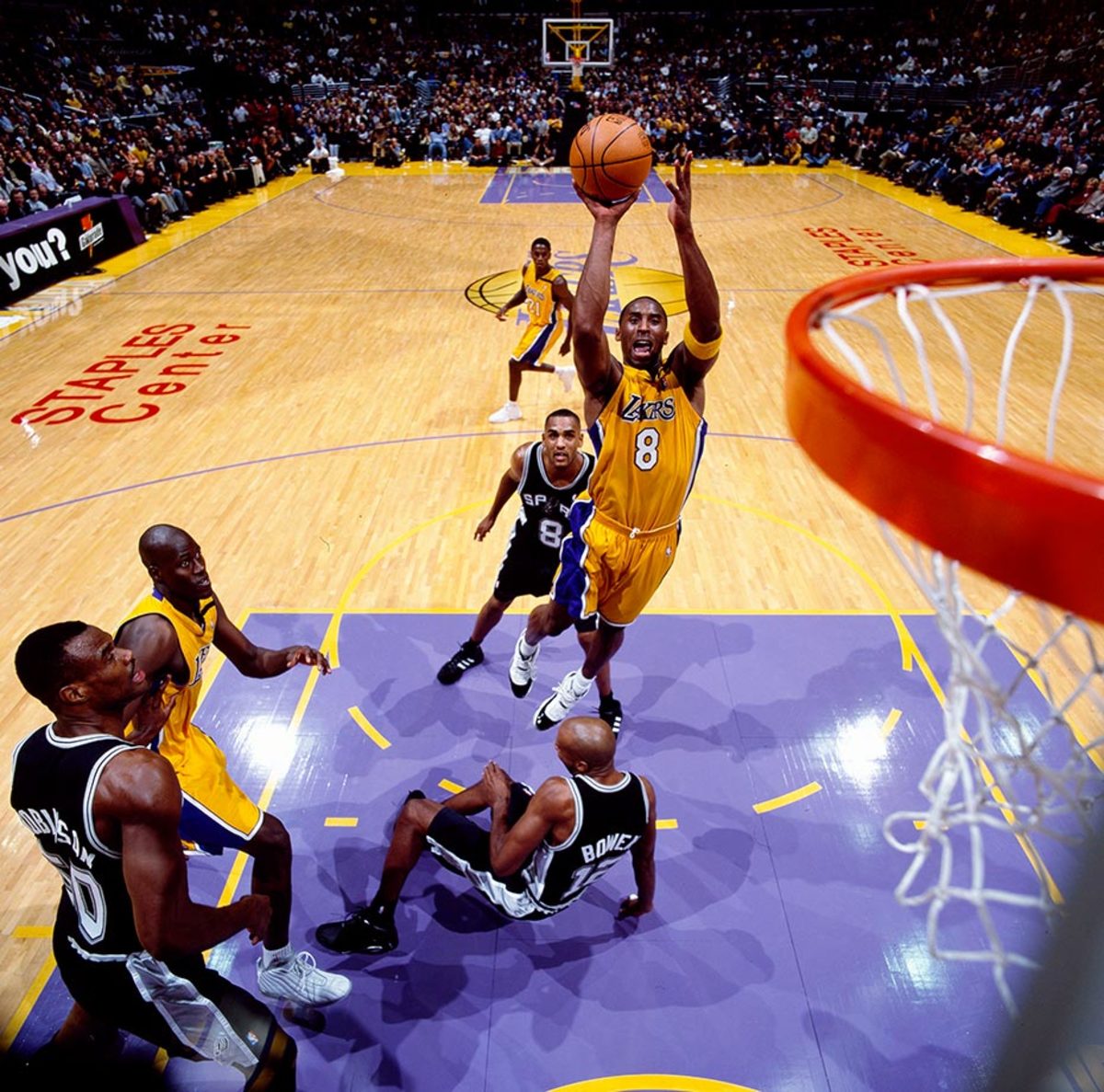
Nov. 11, 2002
Kobe Bryant and Yao Ming
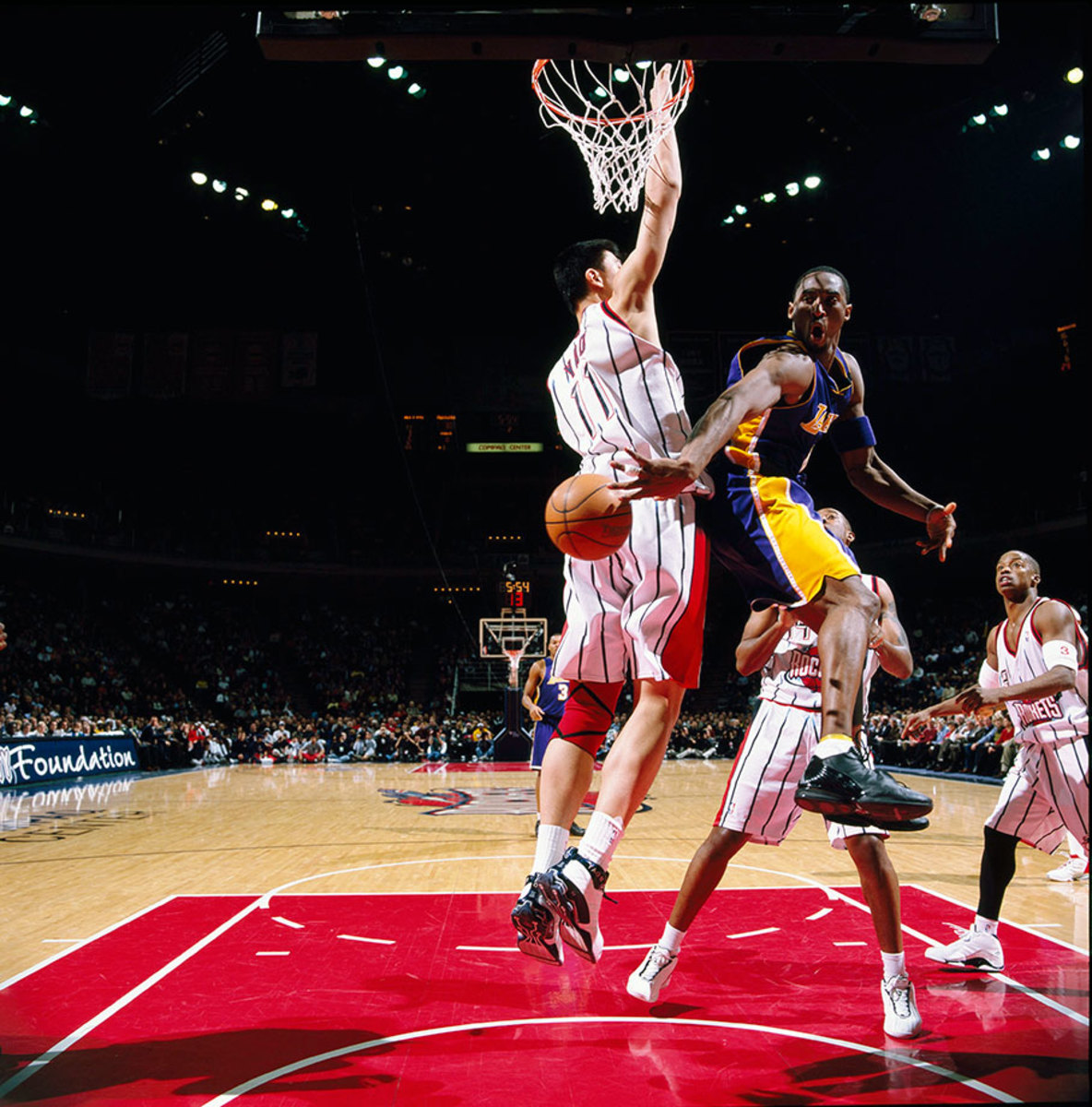
Jan. 27, 2003
Chauncey Billups, Derek Fisher, Tayshaun Prince, Kobe Bryant, Devean George, Richard Hamilton, Karl Malone and Rasheed Wallace
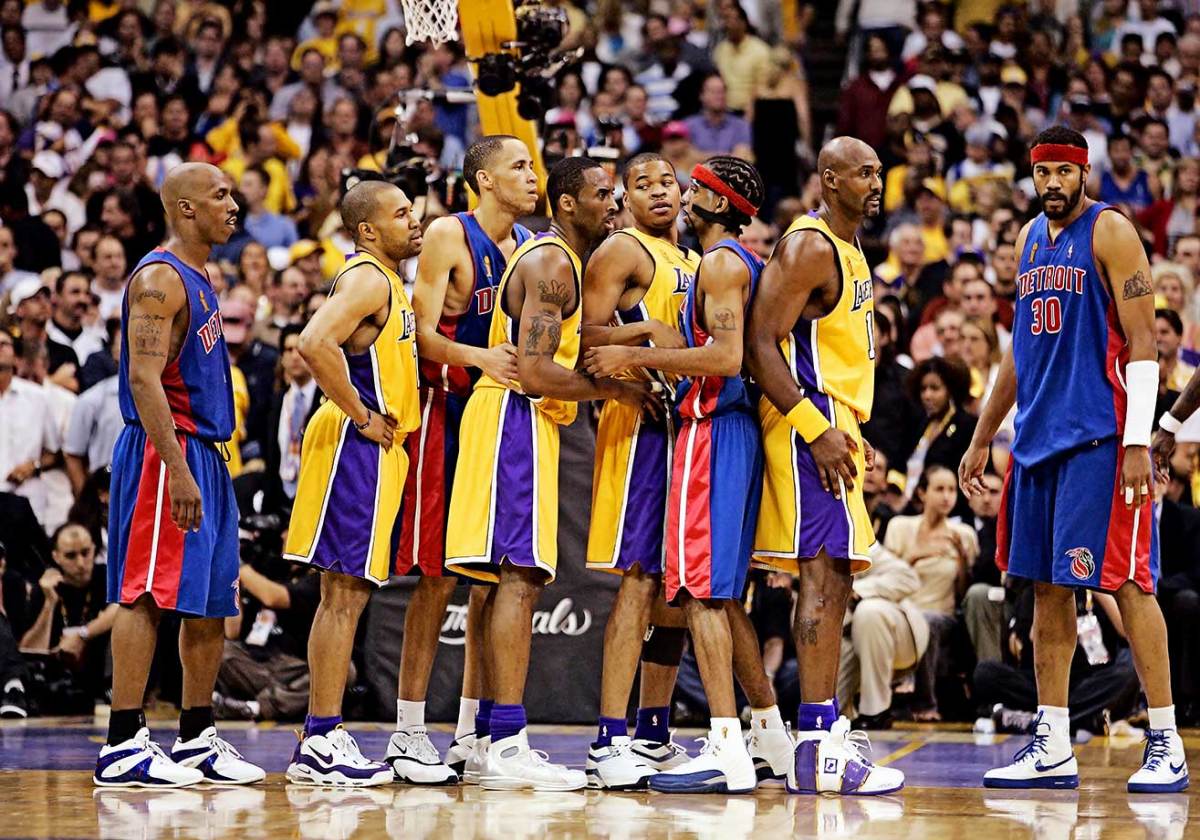
June 8, 2004 — NBA Finals, Game 2
Kobe Bryant
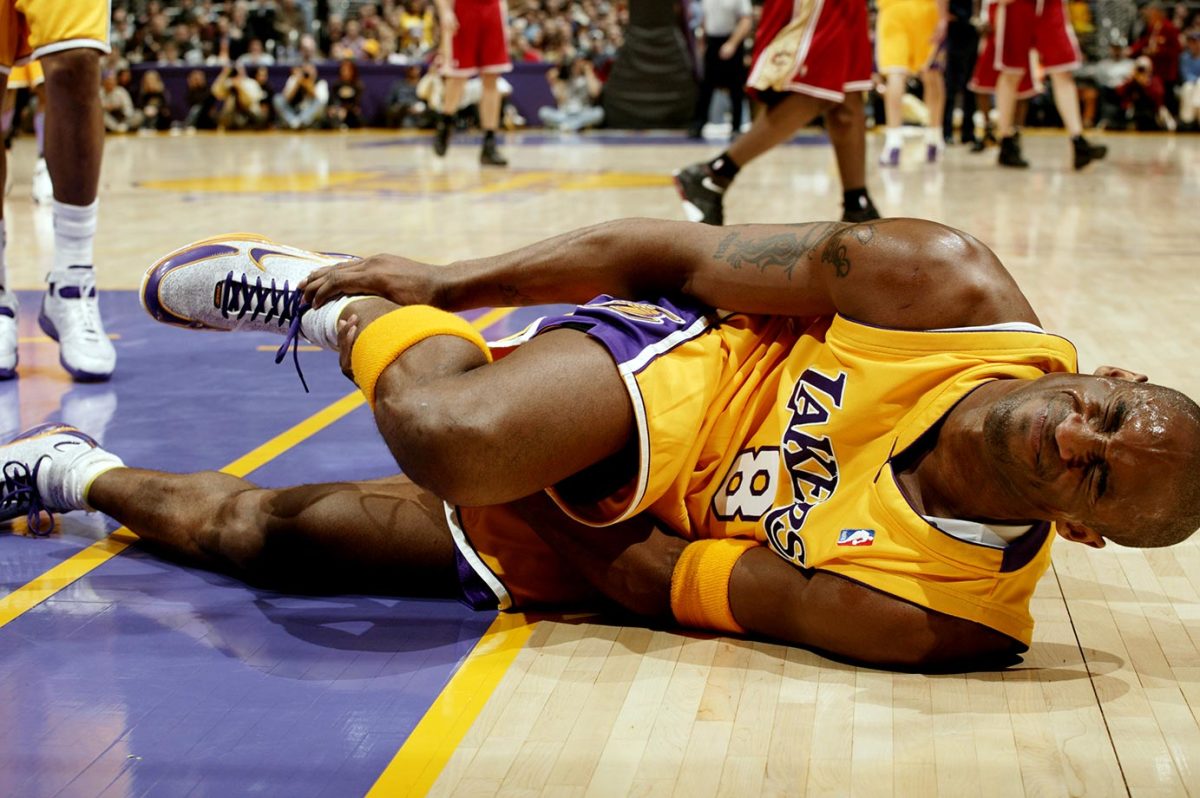
Jan. 13, 2005
Kobe Bryant and Jermaine O'Neal
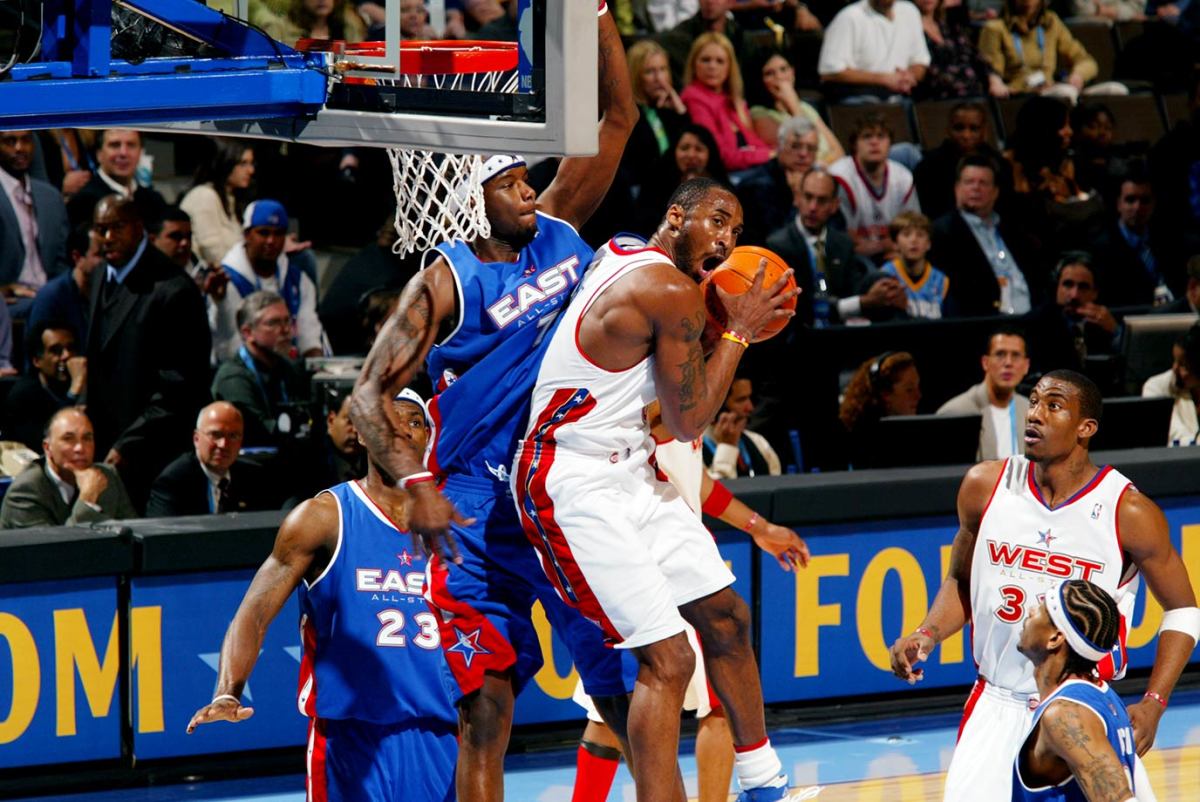
Feb. 20, 2005 — NBA All-Star Game
Kobe Bryant, Chris Kaman, Sam Cassell and Cuttino Mobley
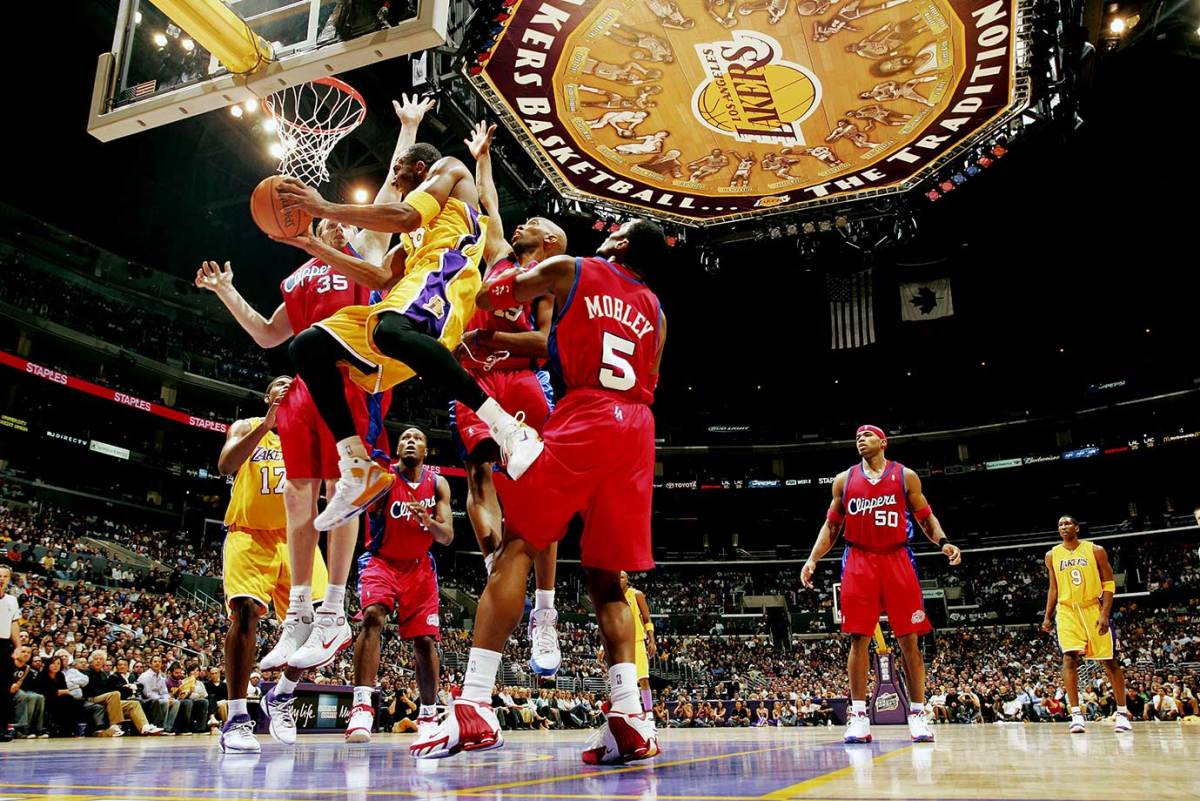
Nov. 18, 2005
Kobe Bryant and DeSagana Diop
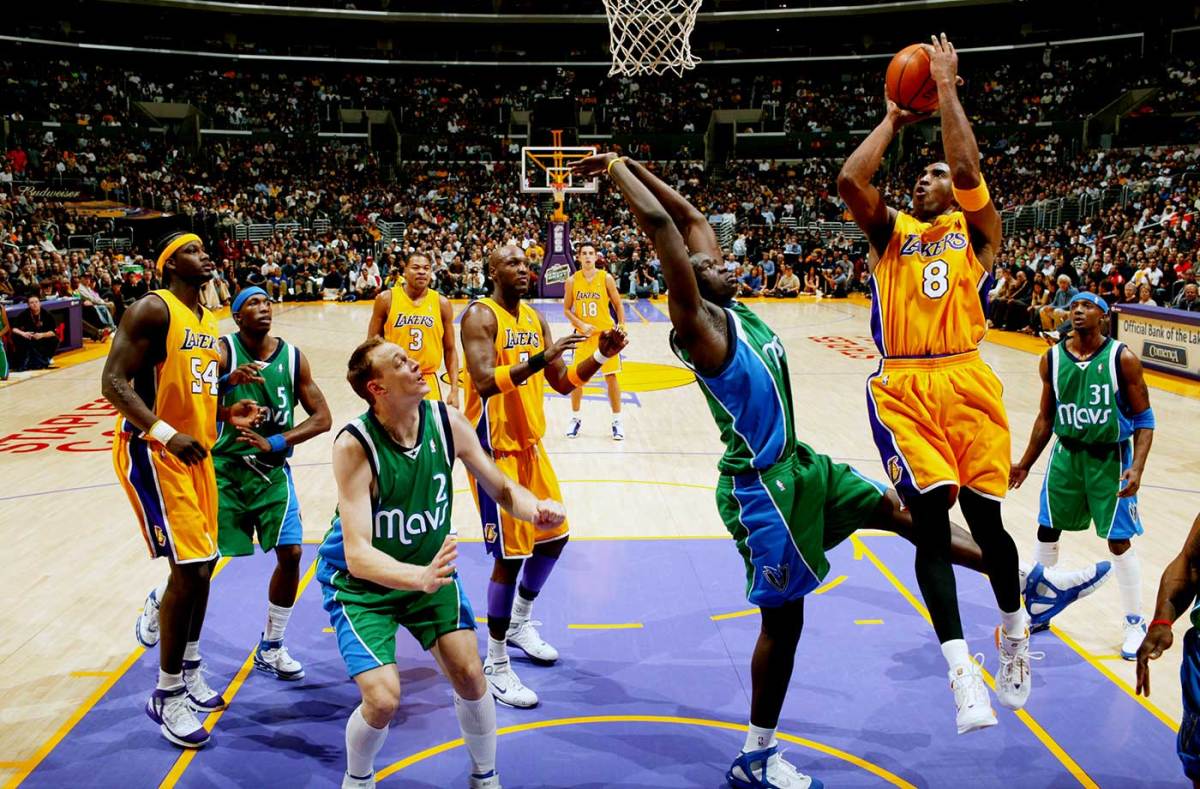
Dec. 20, 2005
Kobe Bryant and Shaquille O'Neal
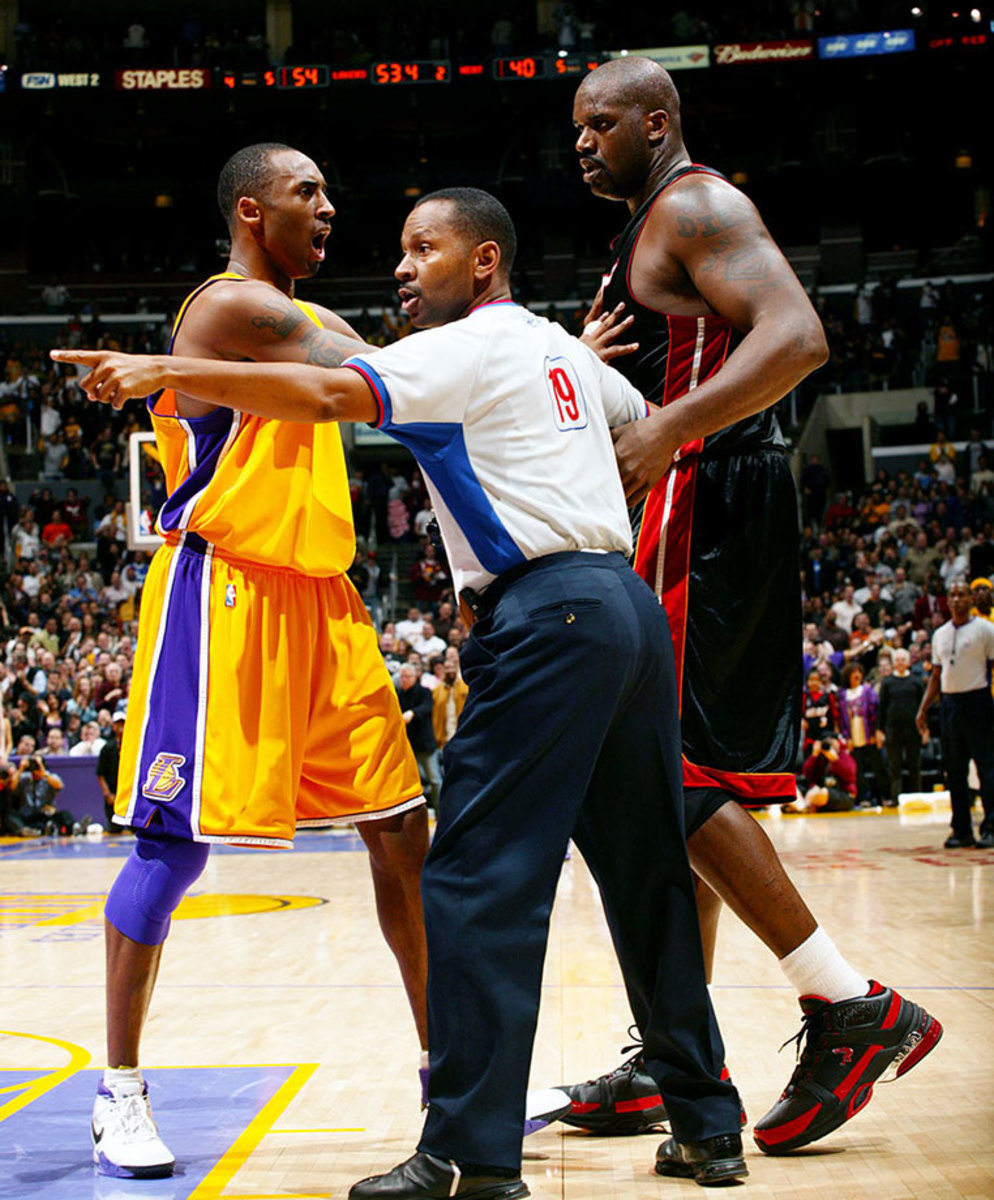
Jan. 16, 2006
Kobe Bryant and Tim Duncan
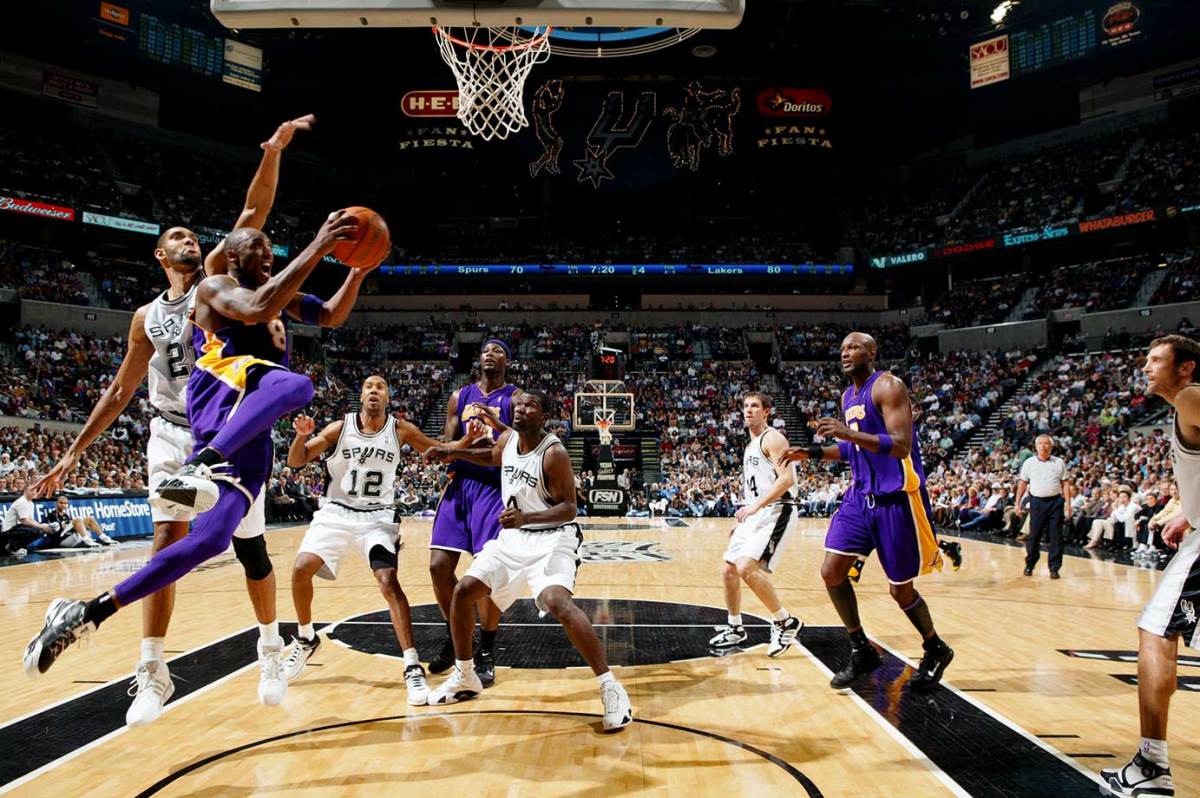
March 10, 2006
Kobe Bryant
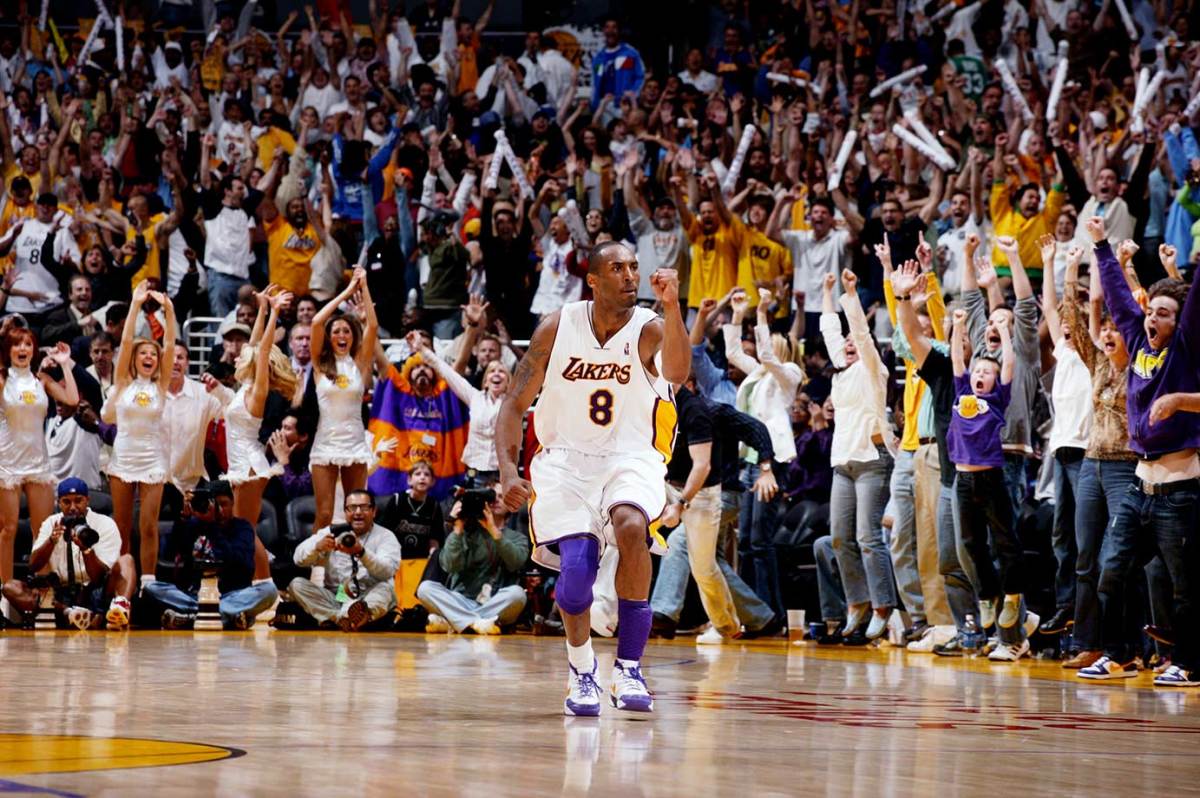
April 30, 2006 — Western Conference First Round, Game 4
Kobe Bryant
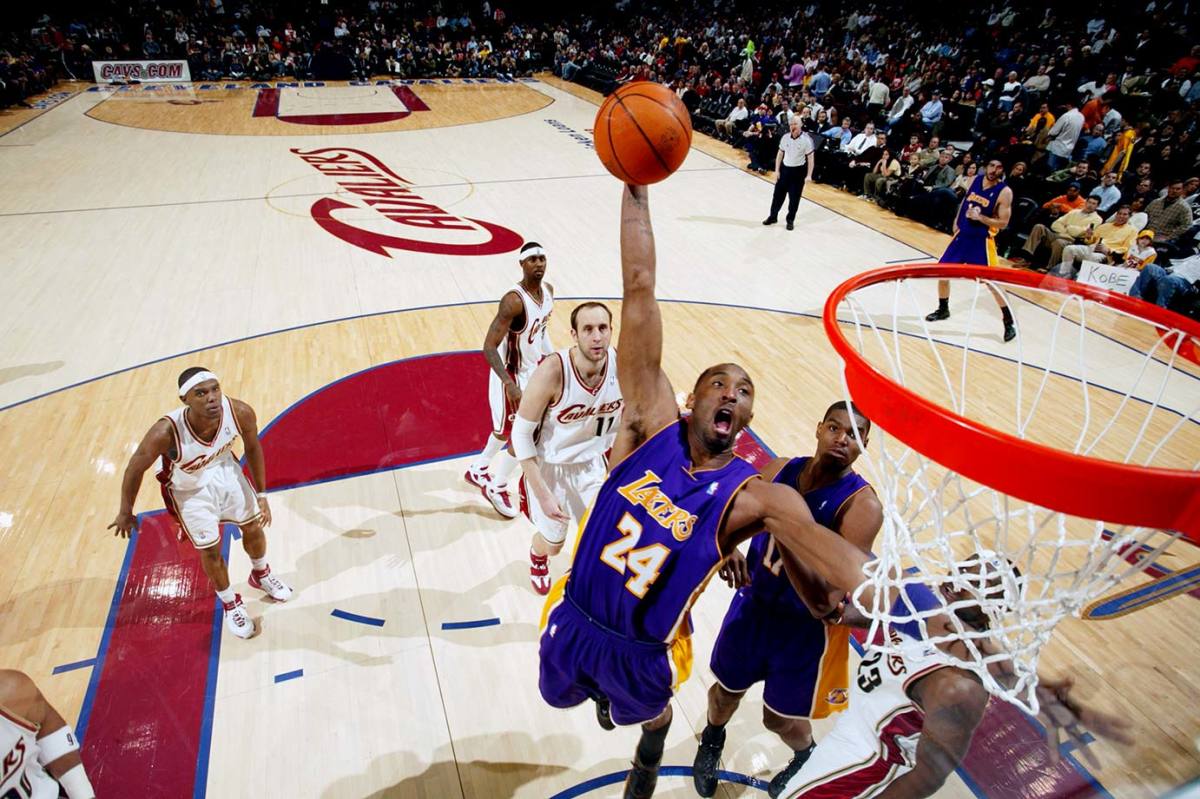
Feb. 11, 2007
Kobe Bryant, Zydrunas Ilgauskas and LeBron James
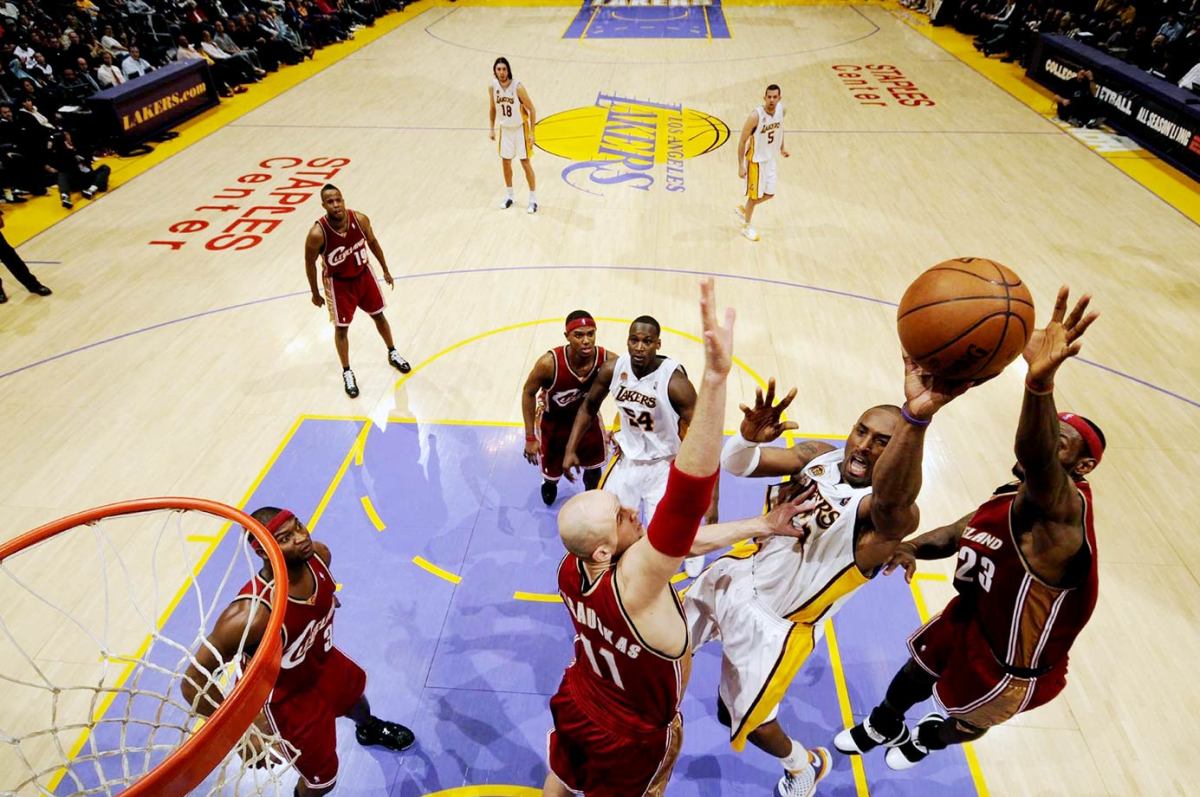
Jan. 27, 2008
Kobe Bryant
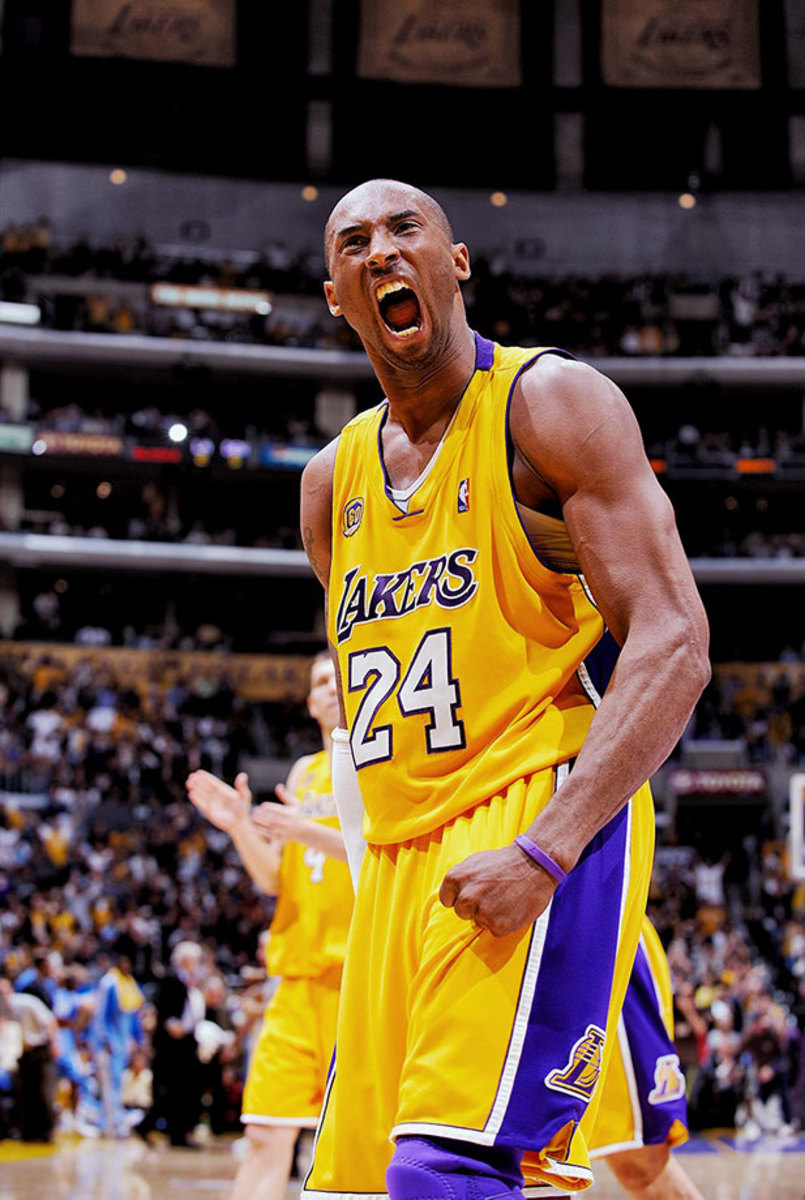
April 23, 2008 — Western Conference First Round, Game 2
Kobe Bryant
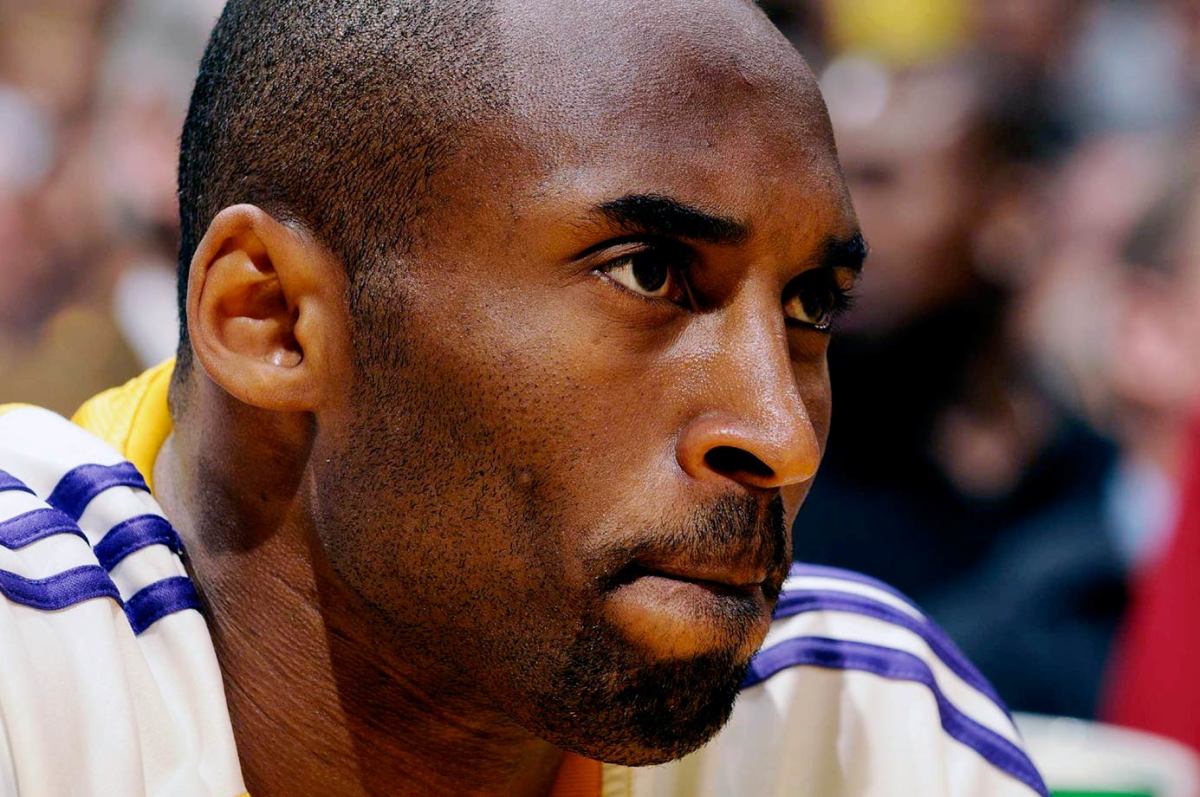
May 23, 2008 — Western Conference Finals, Game 2
Kobe Bryant and LeBron James
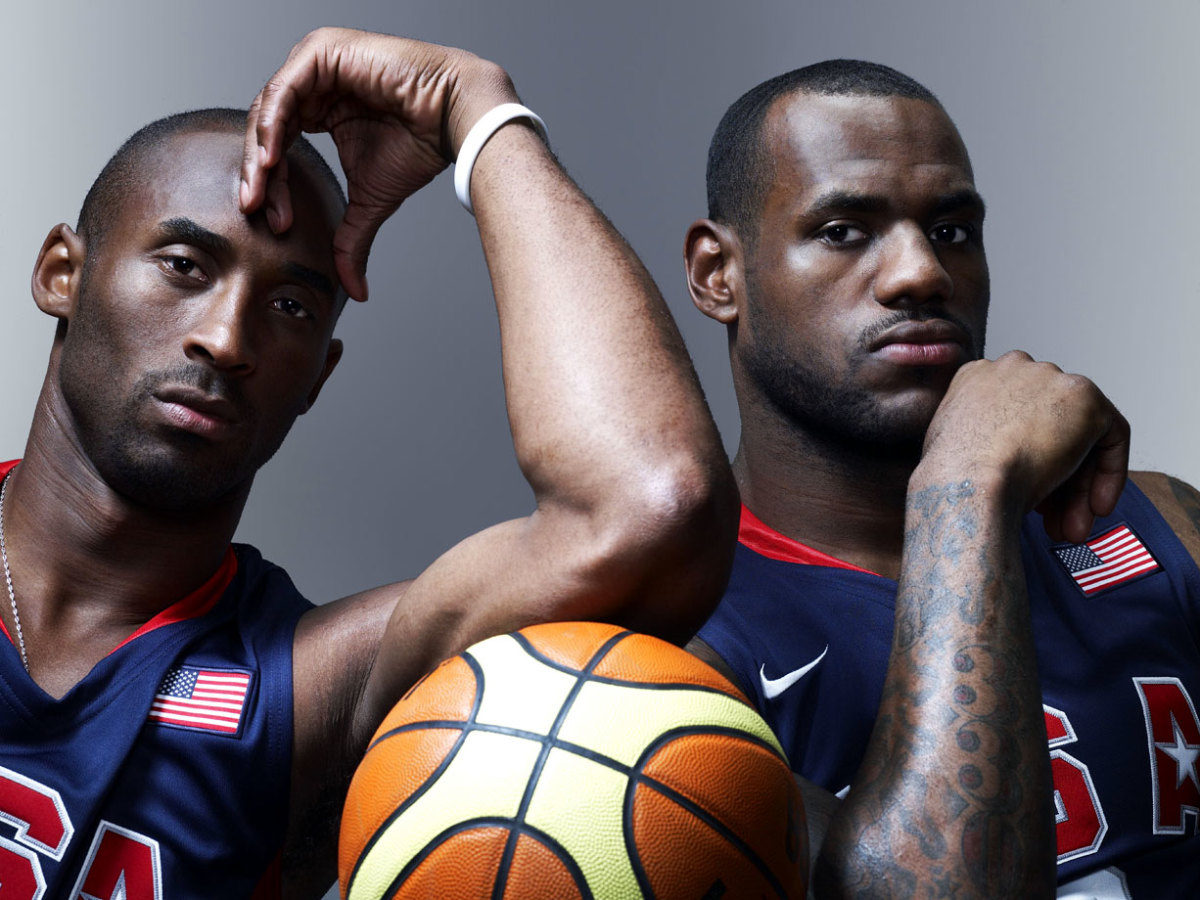
June 30, 2008
Kobe Bryant
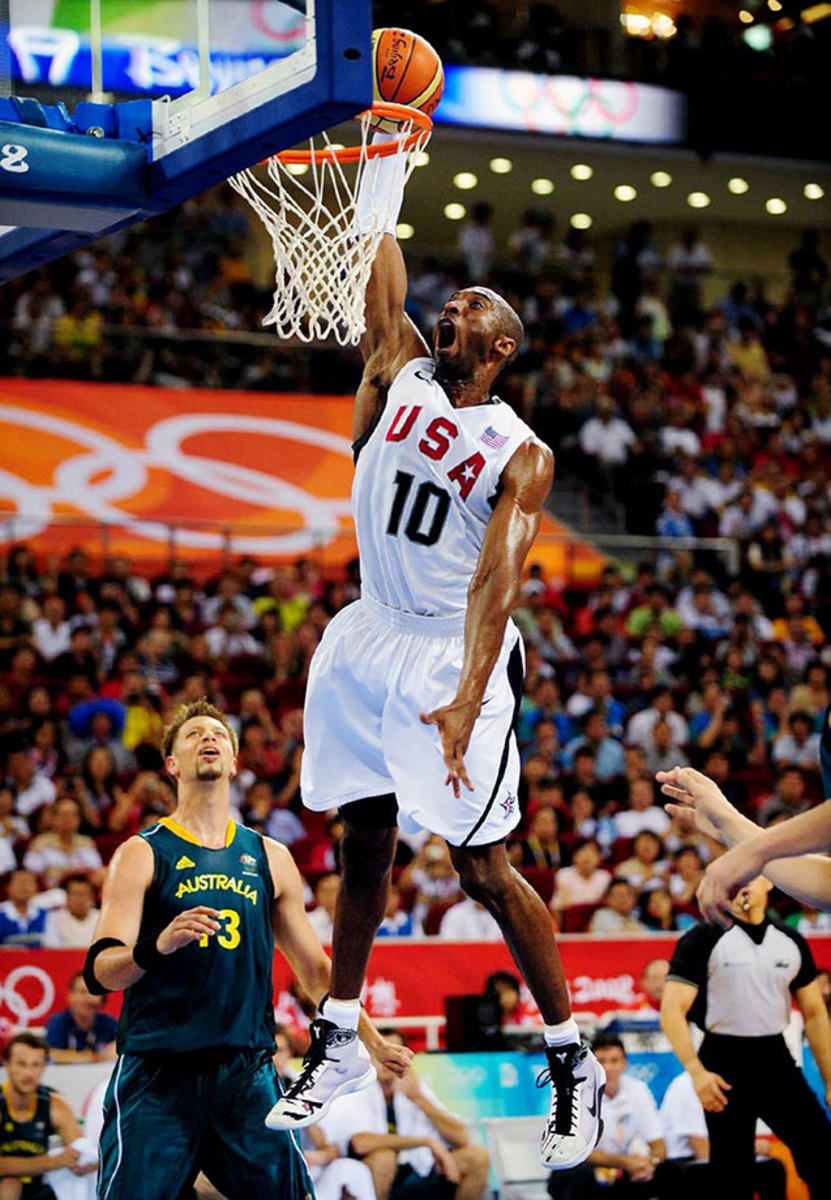
Aug. 20, 2008 — Beijing Olympics
Kobe Bryant, LeBron Jame,s Dwyane Wade and Carmelo Anthony
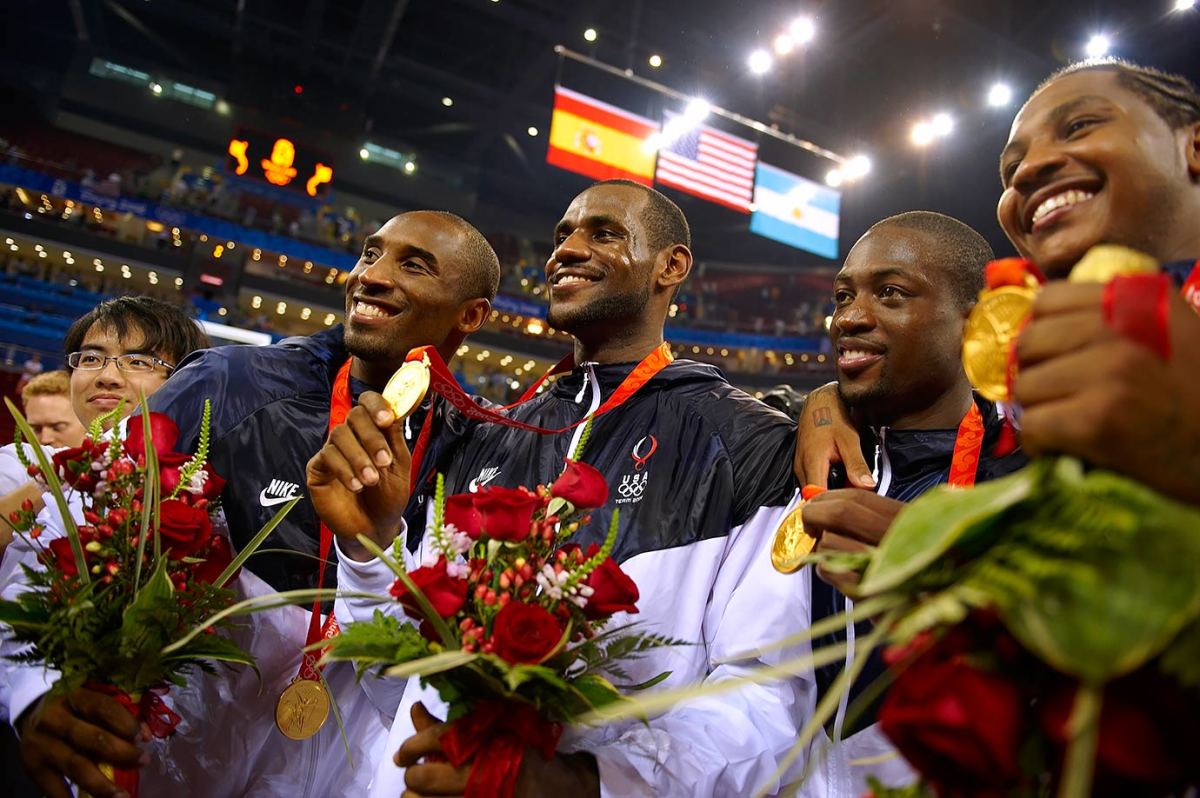
Aug. 24, 2008 — Beijing Olympics
Shaquille O'Neal and Kobe Bryant
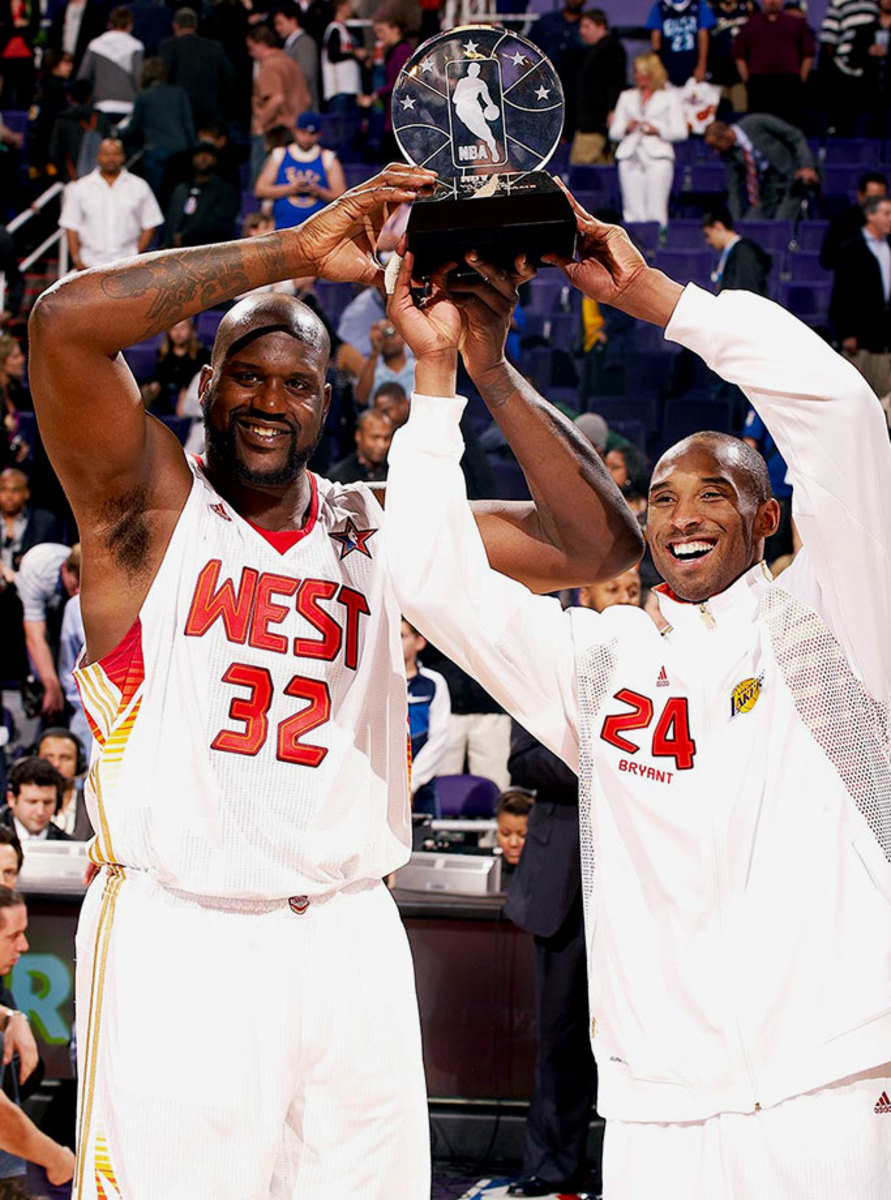
Feb. 15, 2009 — NBA All-Star Game
Kobe Bryant and Derek Fisher
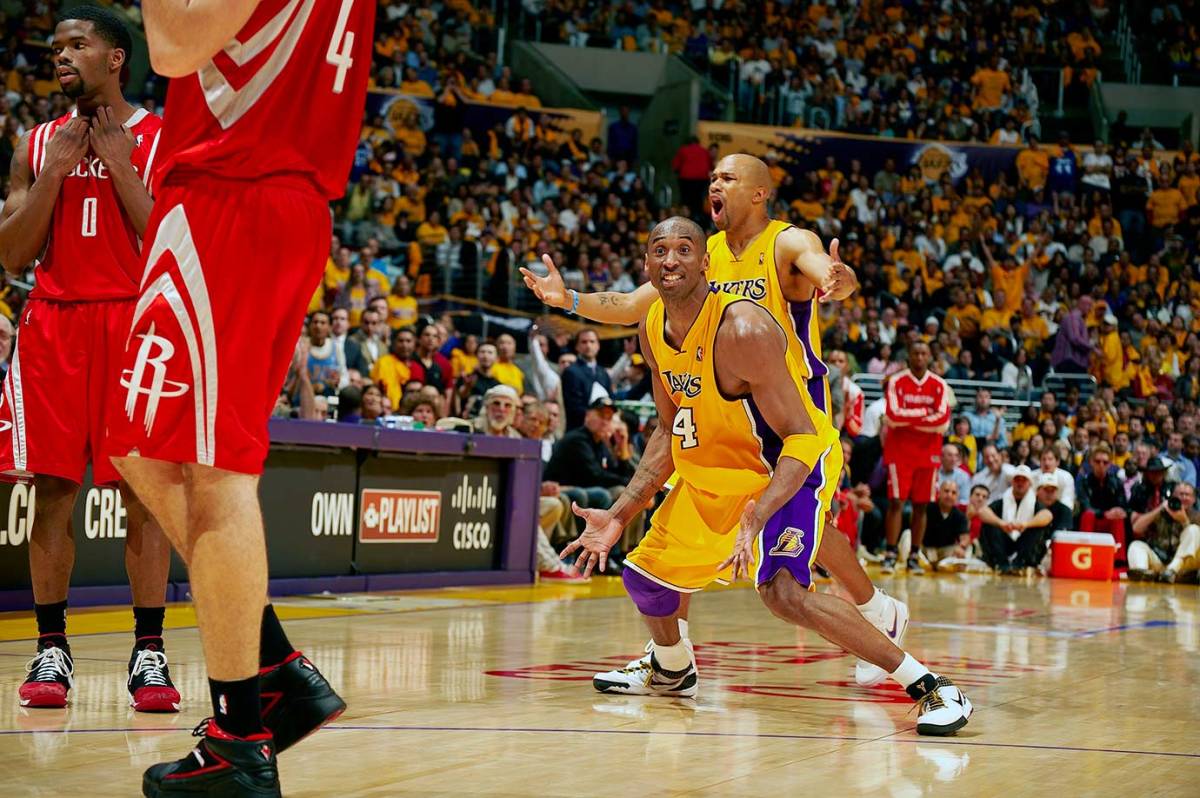
May 4, 2009 — Western Conference Semifinals, Game 1
Yao Ming and Kobe Bryant
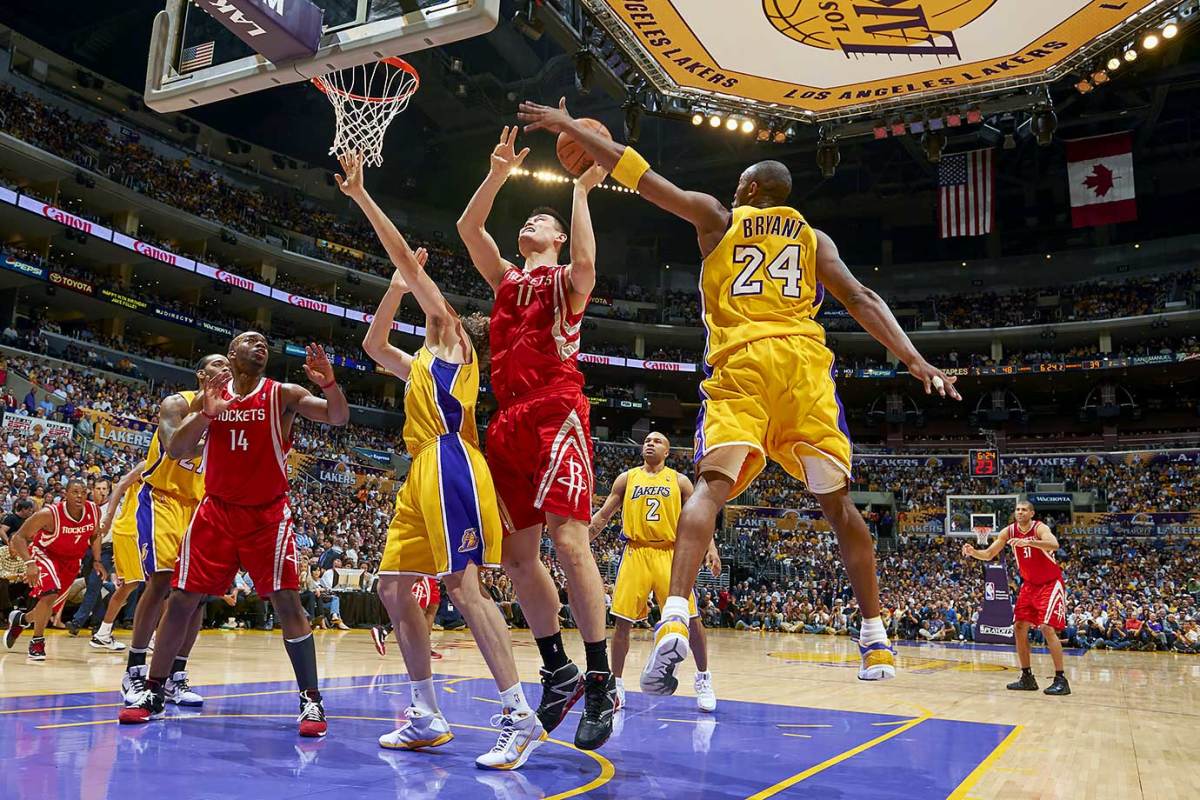
May 6, 2009 — Western Conference Semifinals, Game 2
Kobe Bryant
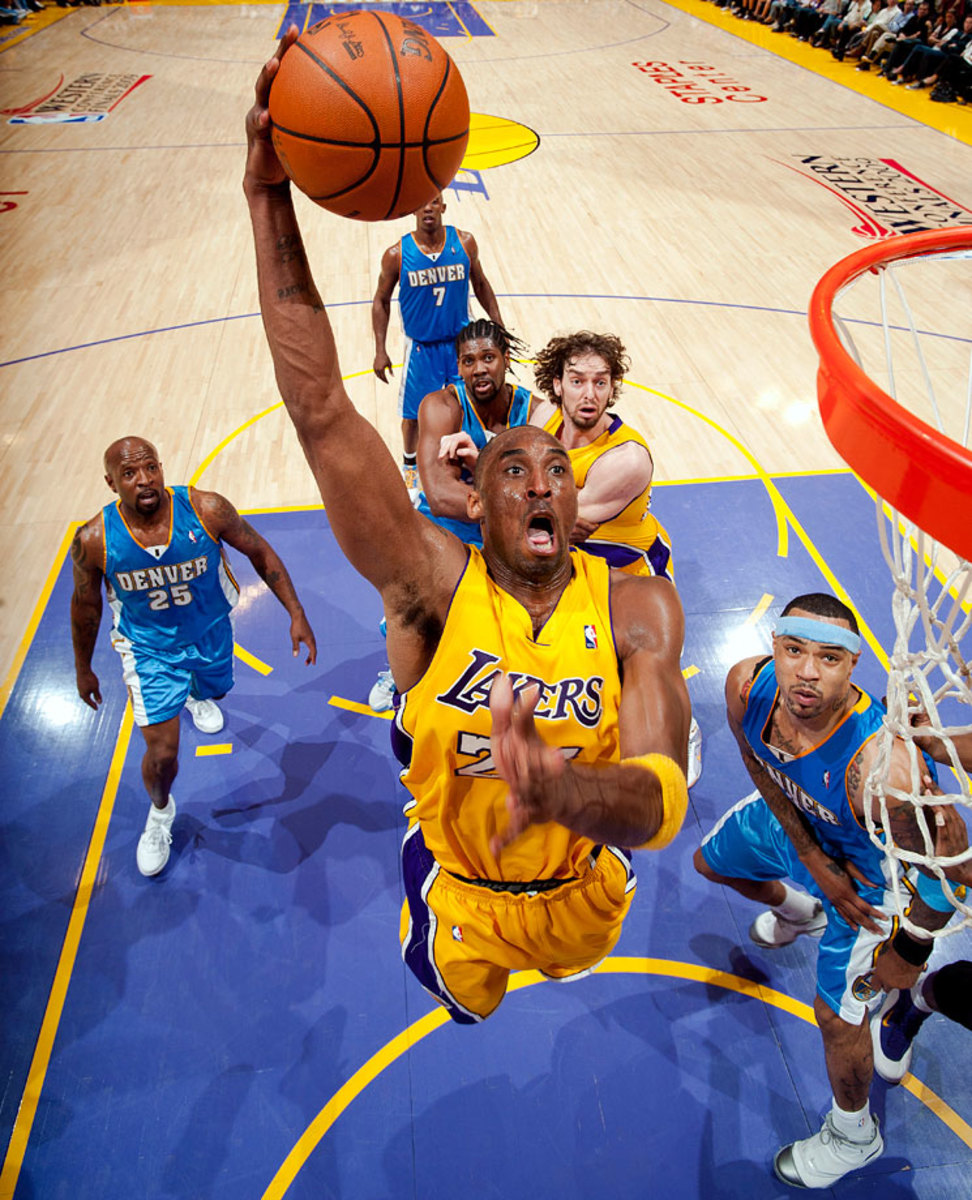
May 19, 2009 — Western Conference Finals, Game 1
Kobe Bryant and Carmelo Anthony
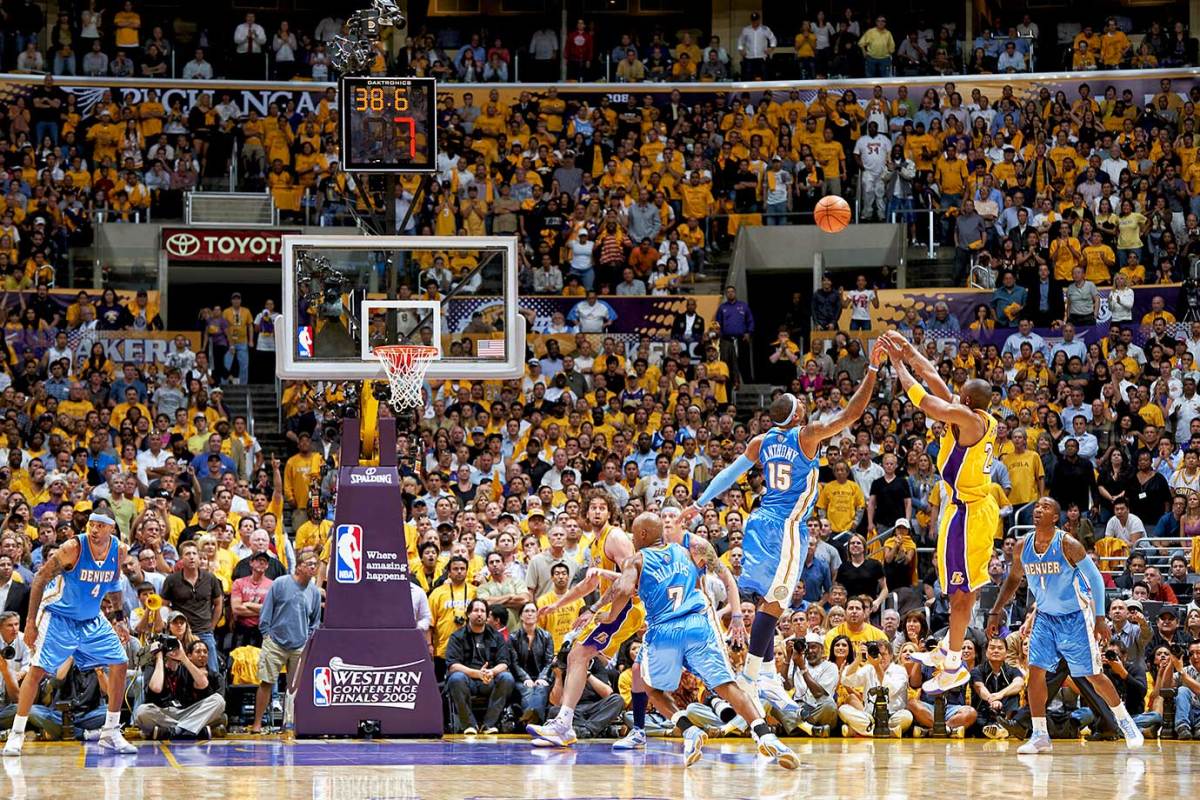
May 19, 2009 — Western Conference Finals, Game 1
Kobe Bryant
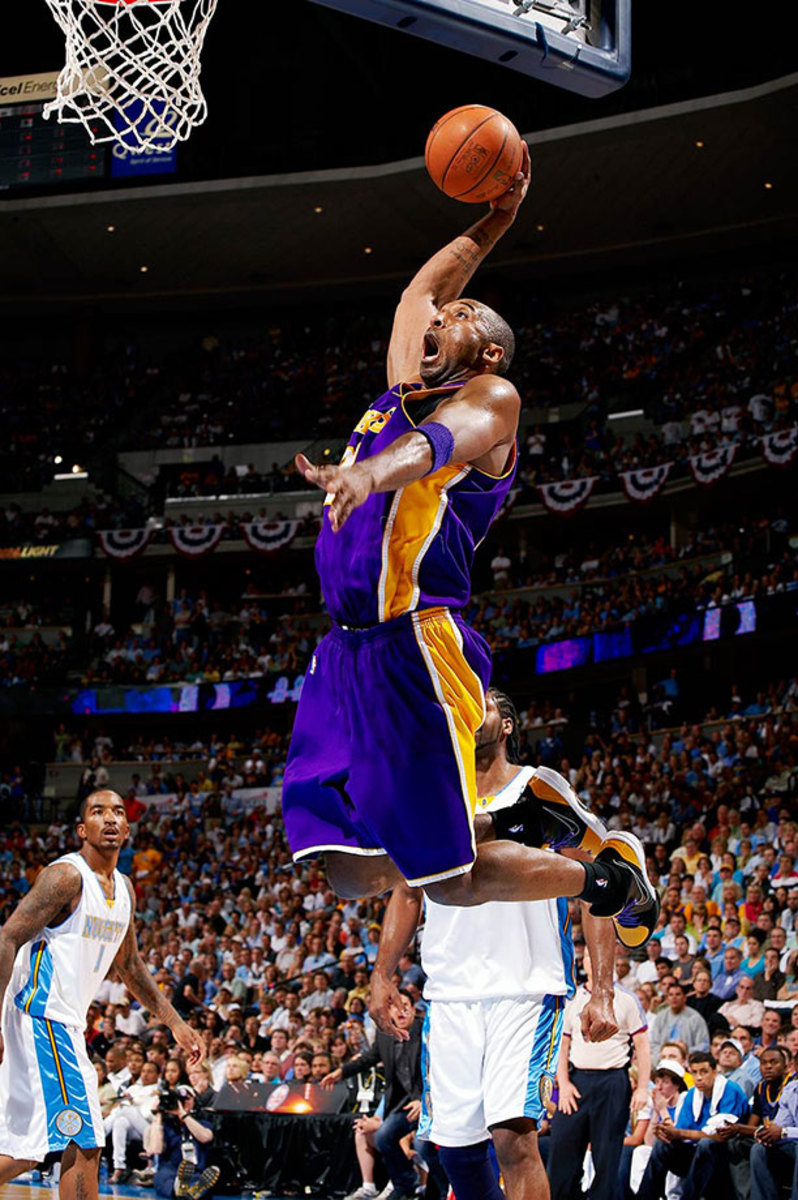
May 29, 2009 — Western Conference Finals, Game 6
Kobe Bryant and Mickael Pietrus
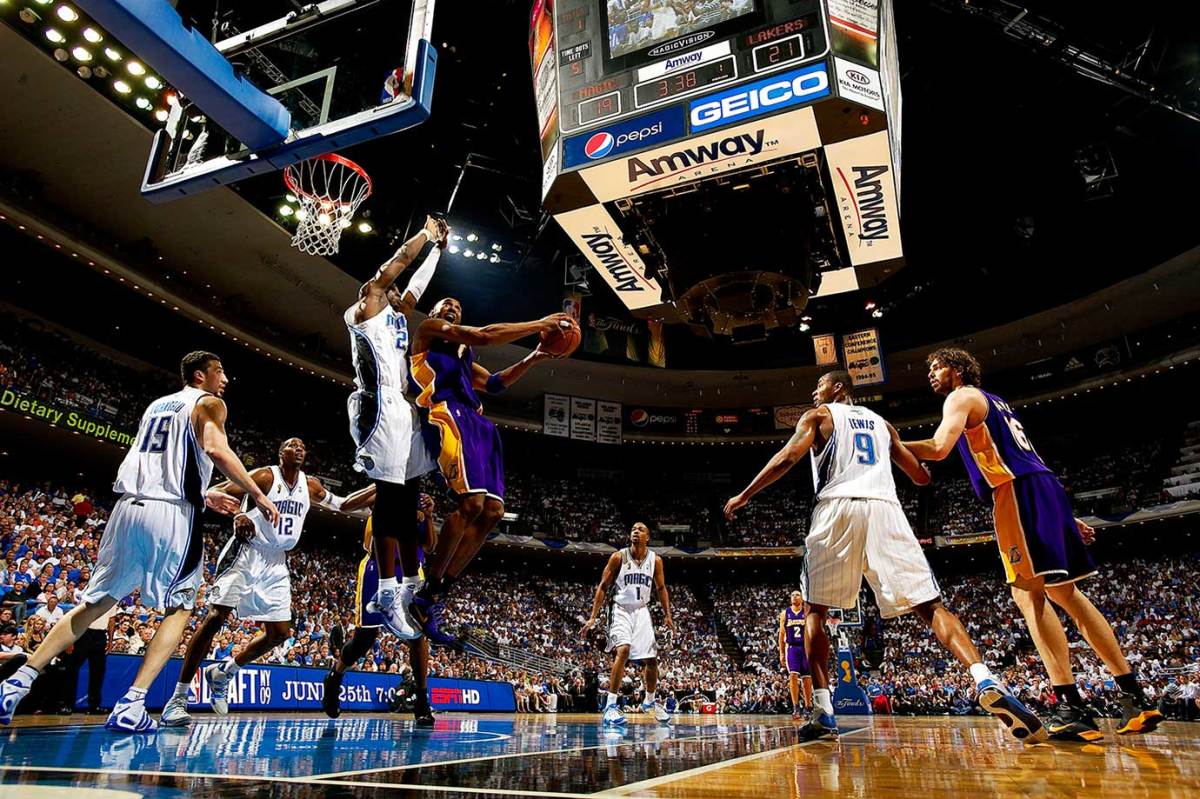
June 9, 2009 — NBA Finals, Game 3
Kobe Bryant and Pau Gasol
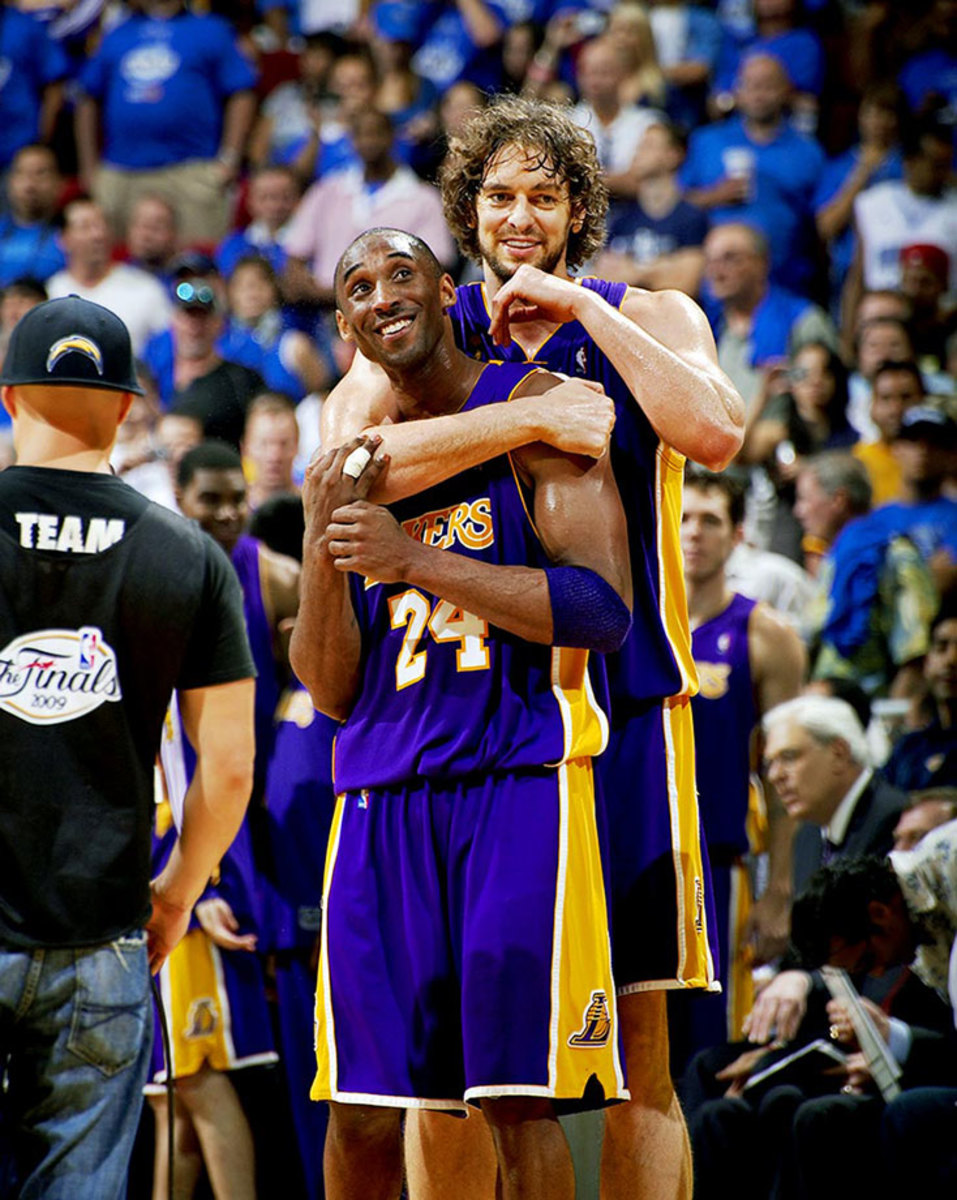
June 14, 2009 — NBA Finals, Game 5
Kobe Bryant with his father, Joe
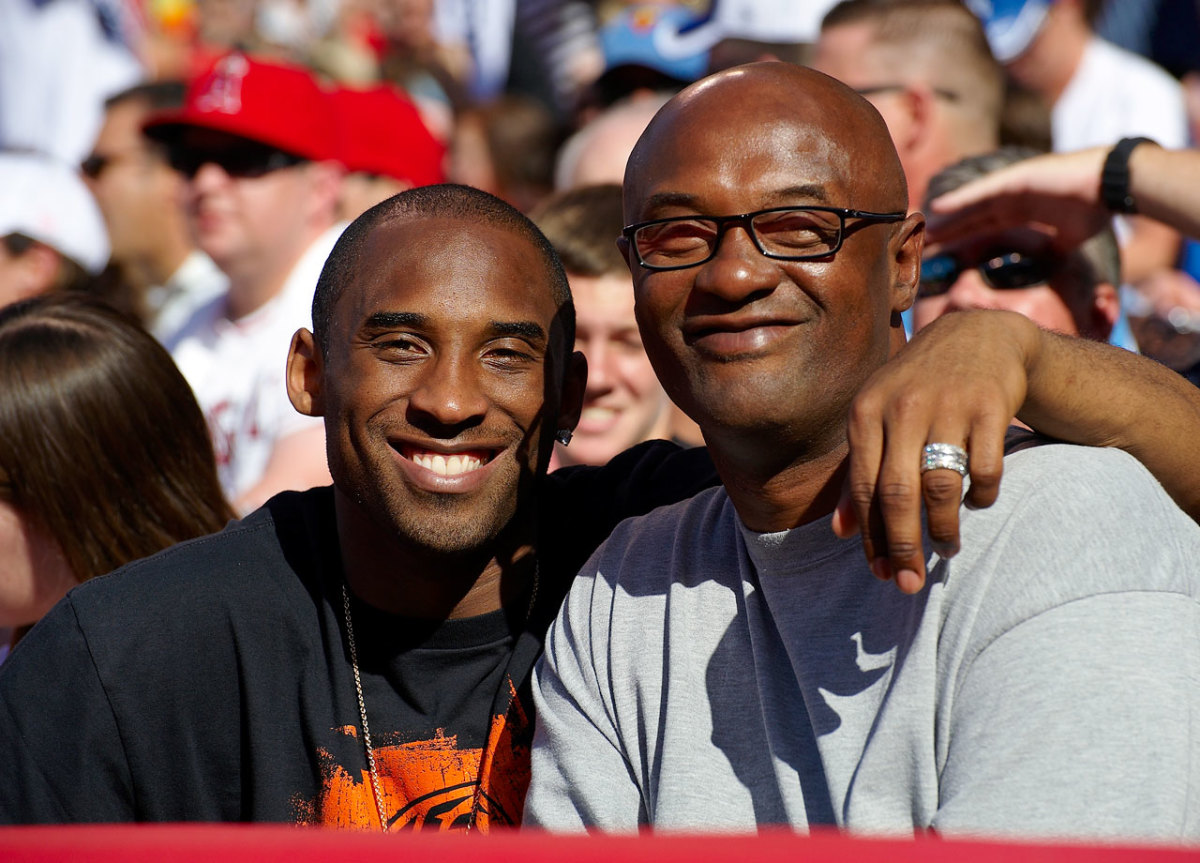
June 21, 2009 — Angels-Dodgers game
Kobe Bryant
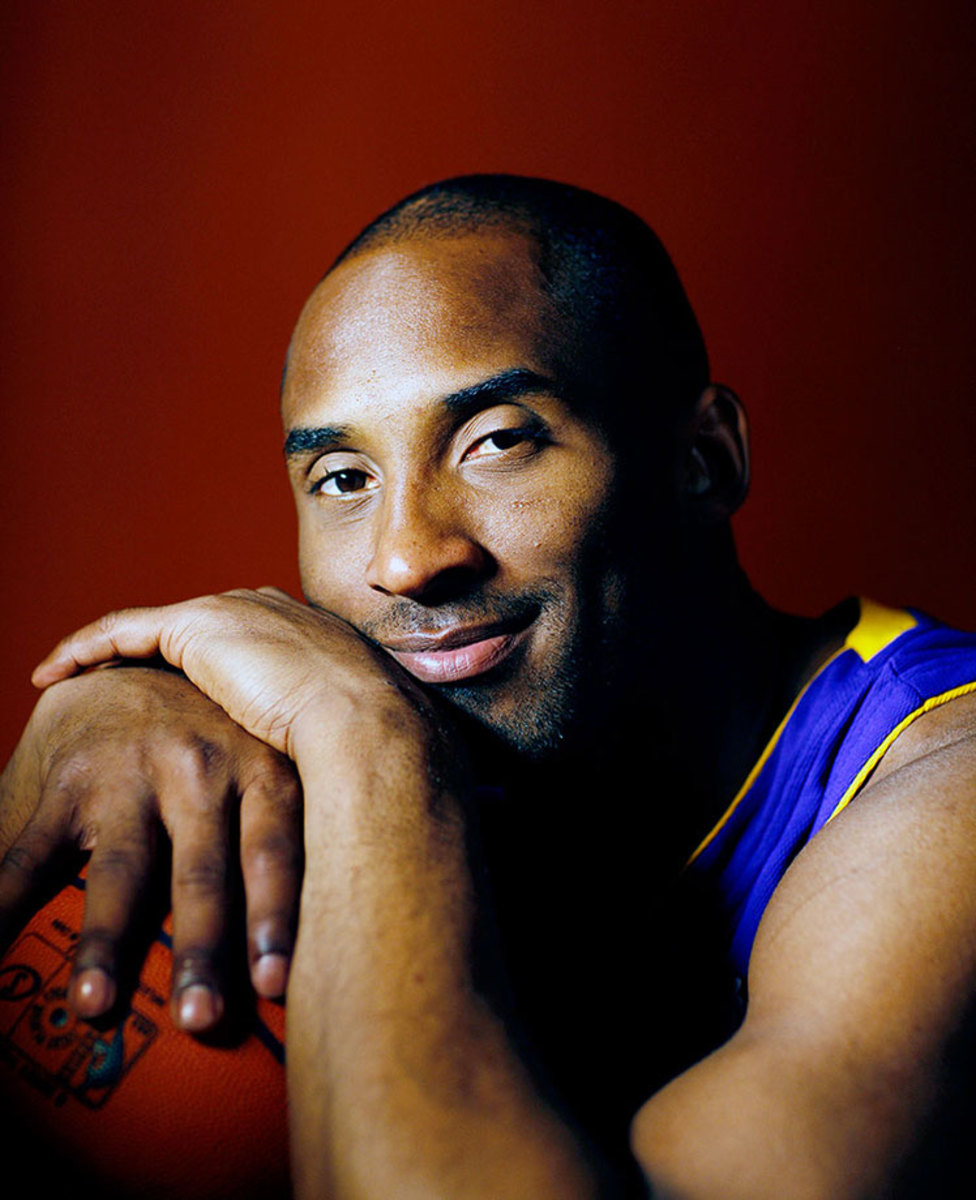
March 25, 2010
Kobe Bryant
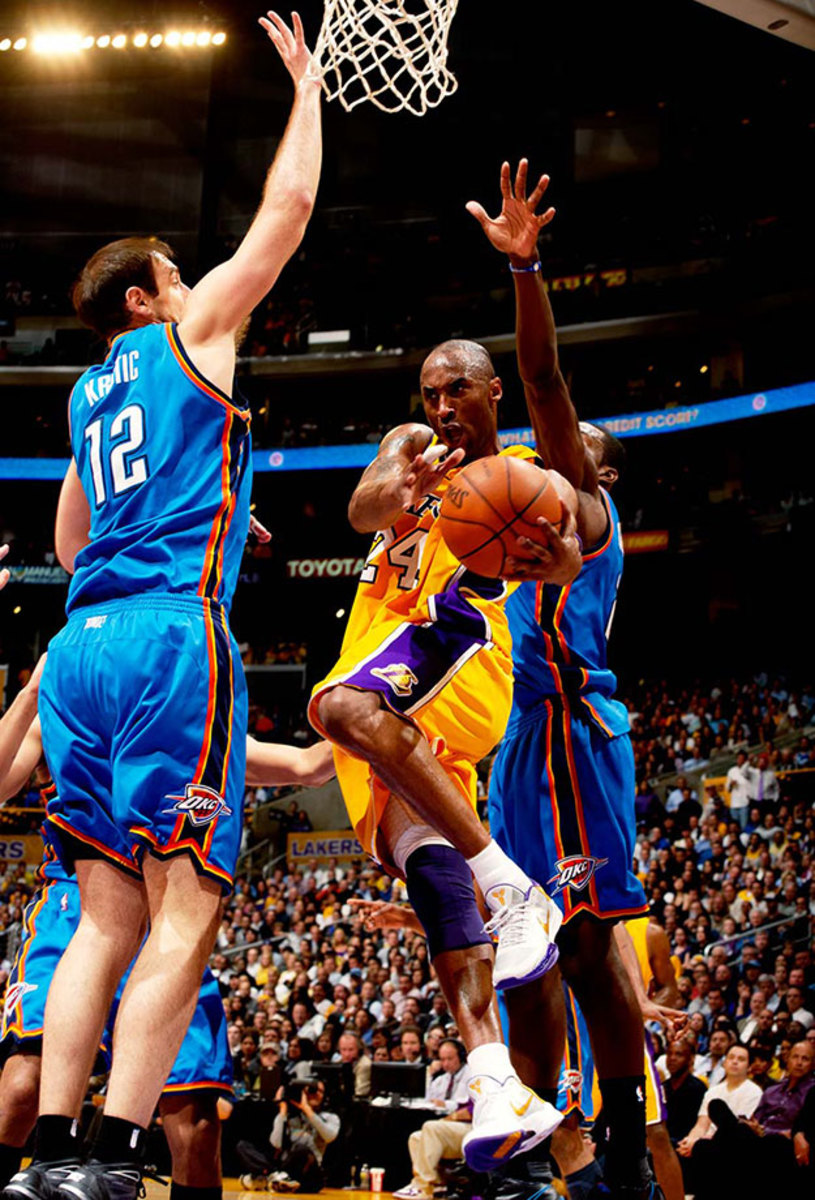
April 27, 2010 — Western Conference First Round, Game 5
Kobe Bryant, Kevin Garnett and Rajon Rondo
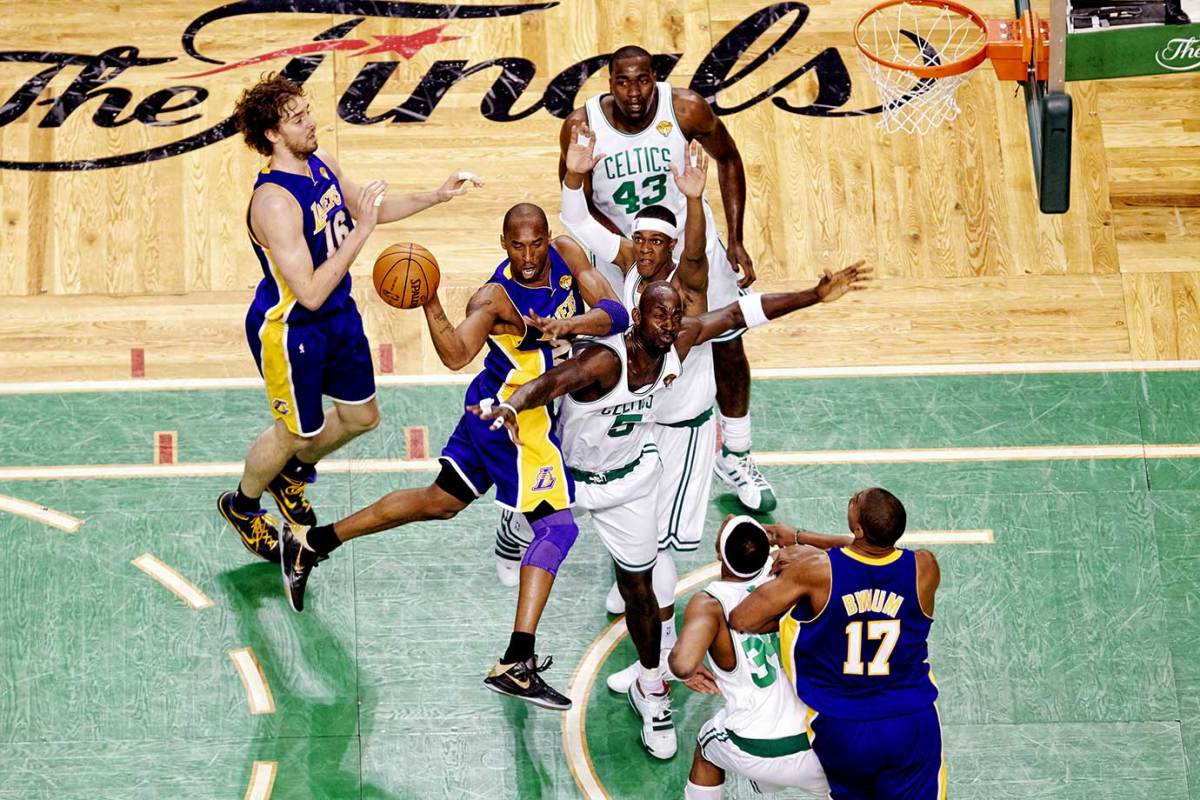
June 10, 2010 — NBA Finals, Game 4
Kobe Bryant and Rajon Rondo
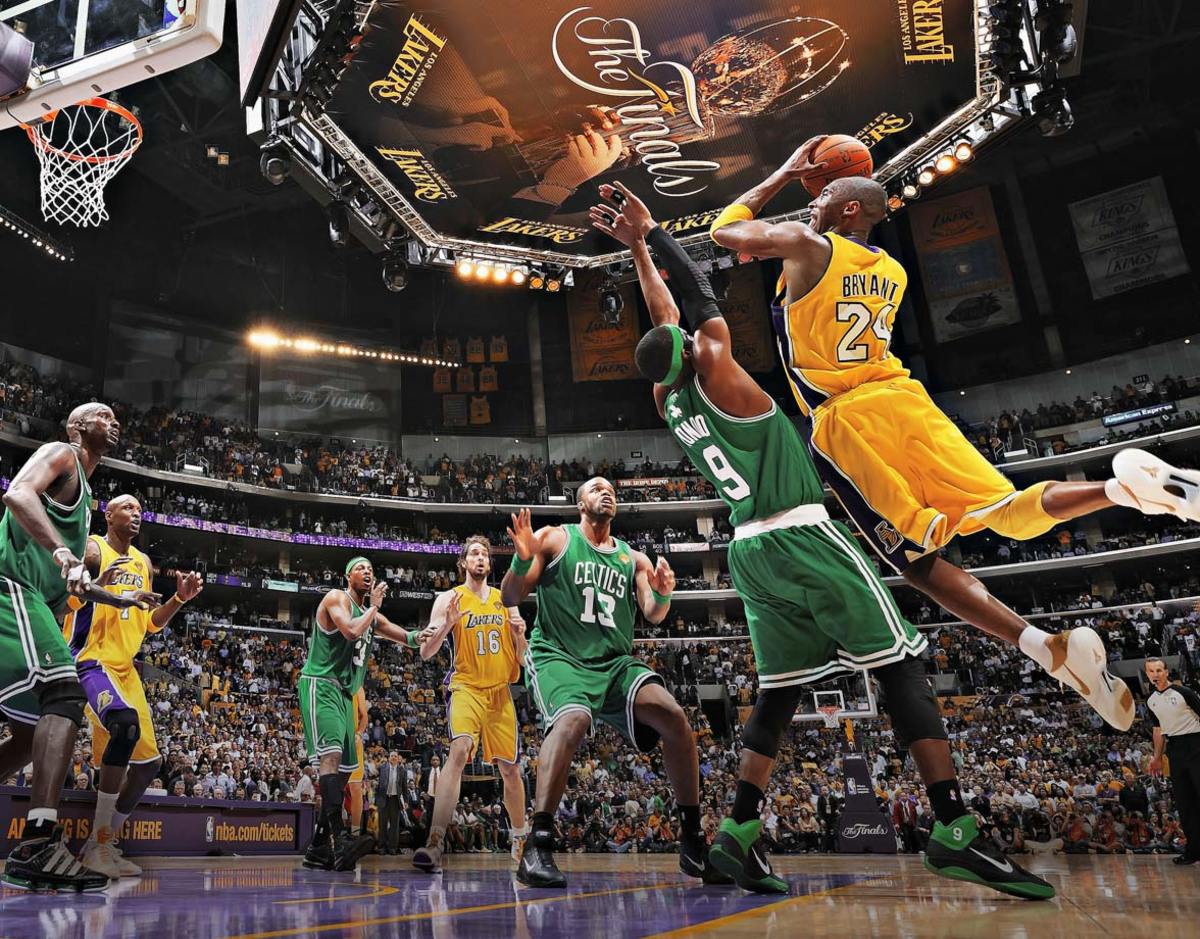
June 15, 2010 — NBA Finals, Game 6
Kobe Bryant
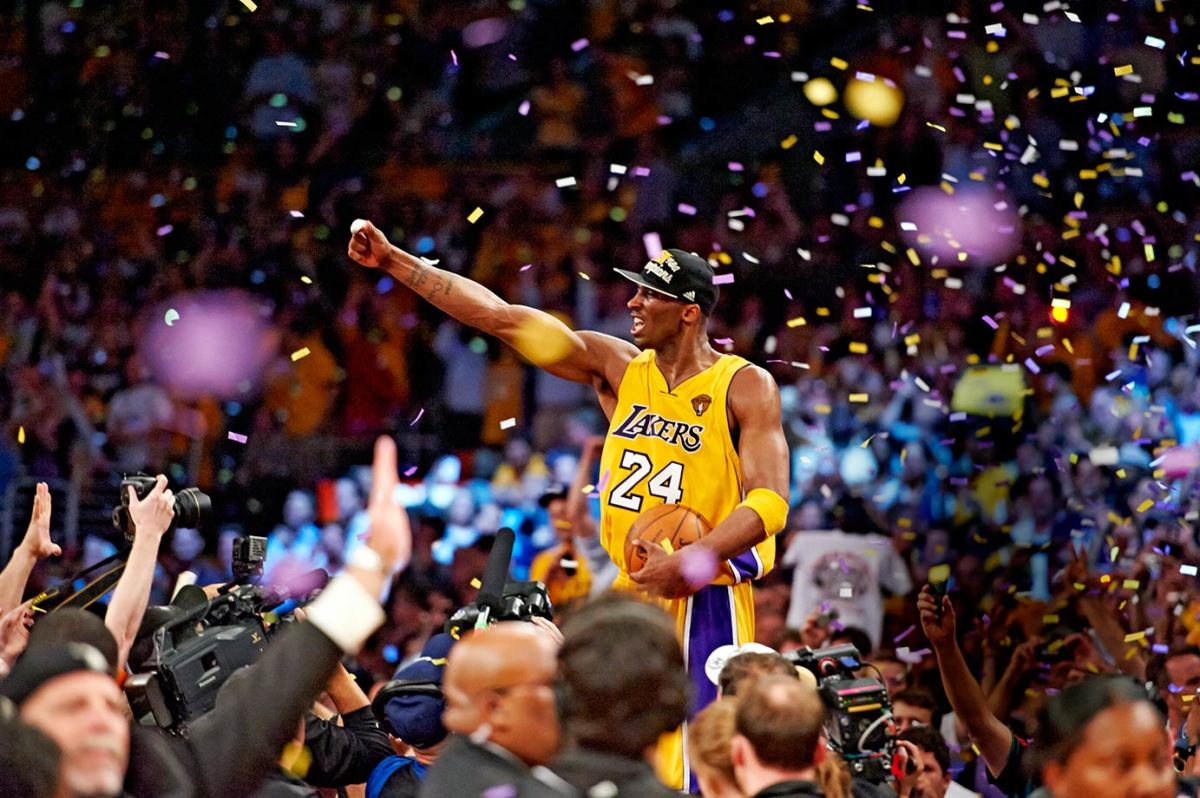
June 17, 2010 — NBA Finals, Game 7
Kobe Bryant and Tim Duncan
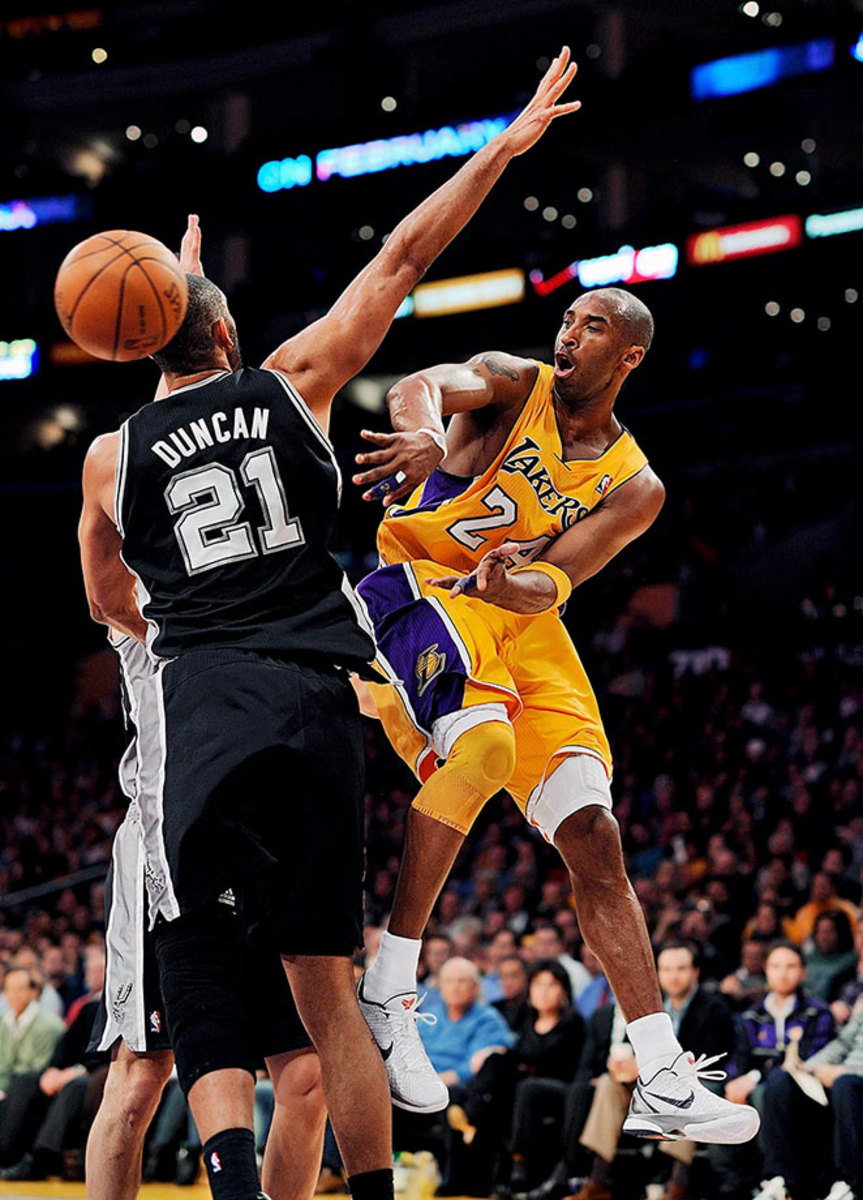
Feb. 3, 2011
Kobe Bryant and Ray Allen
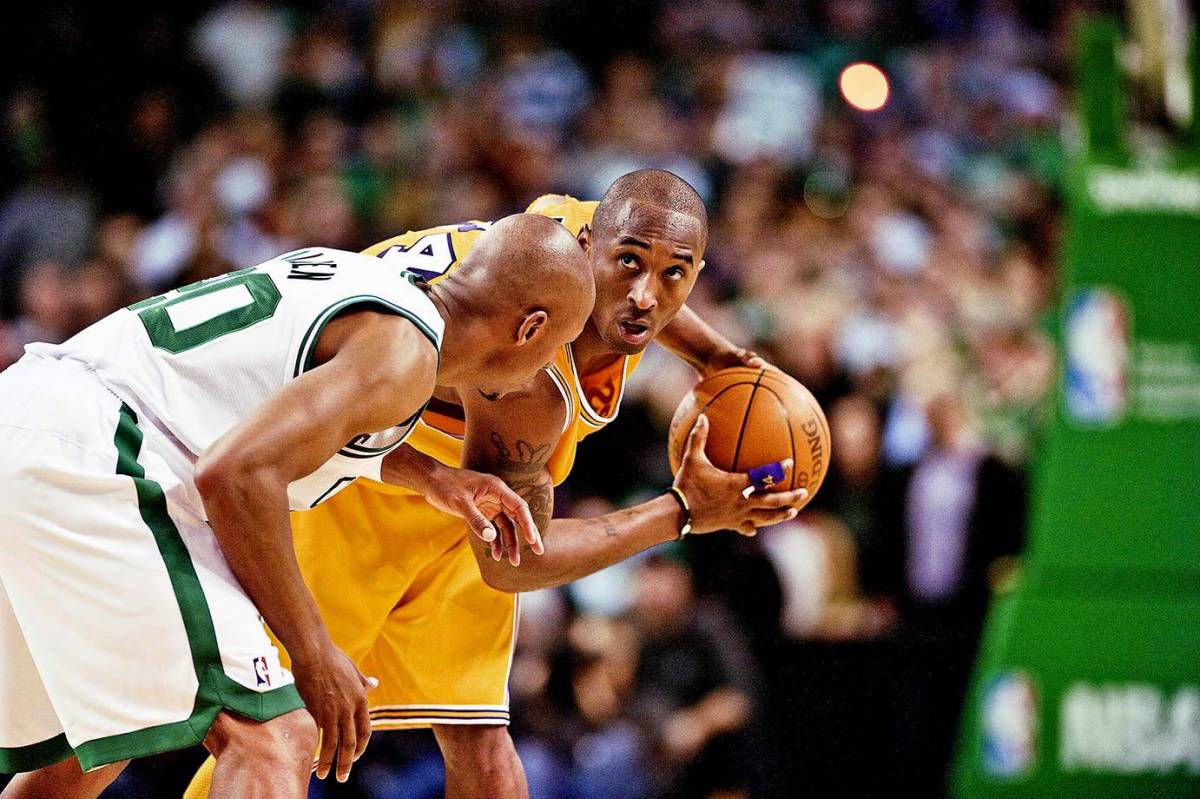
Feb. 10, 2011
Kobe Bryant
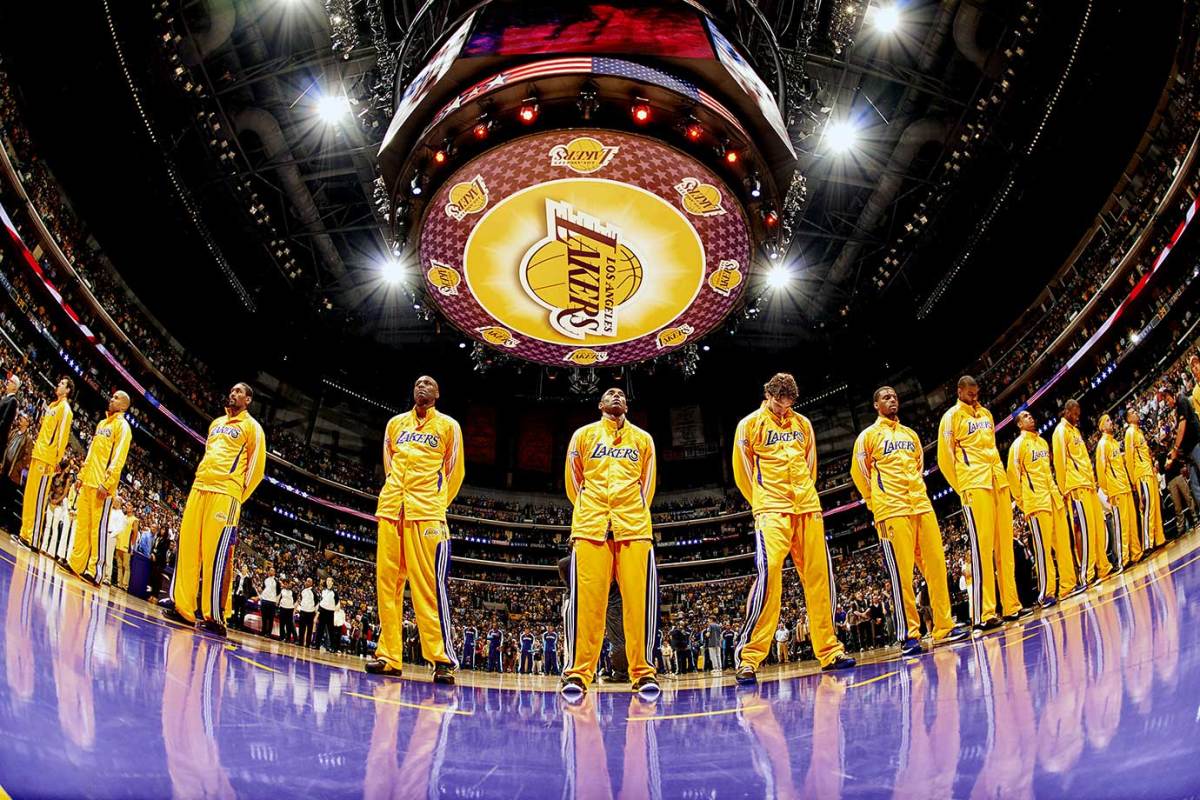
April 26, 2011 — Western Conference First Round, Game 5
Kobe Bryant
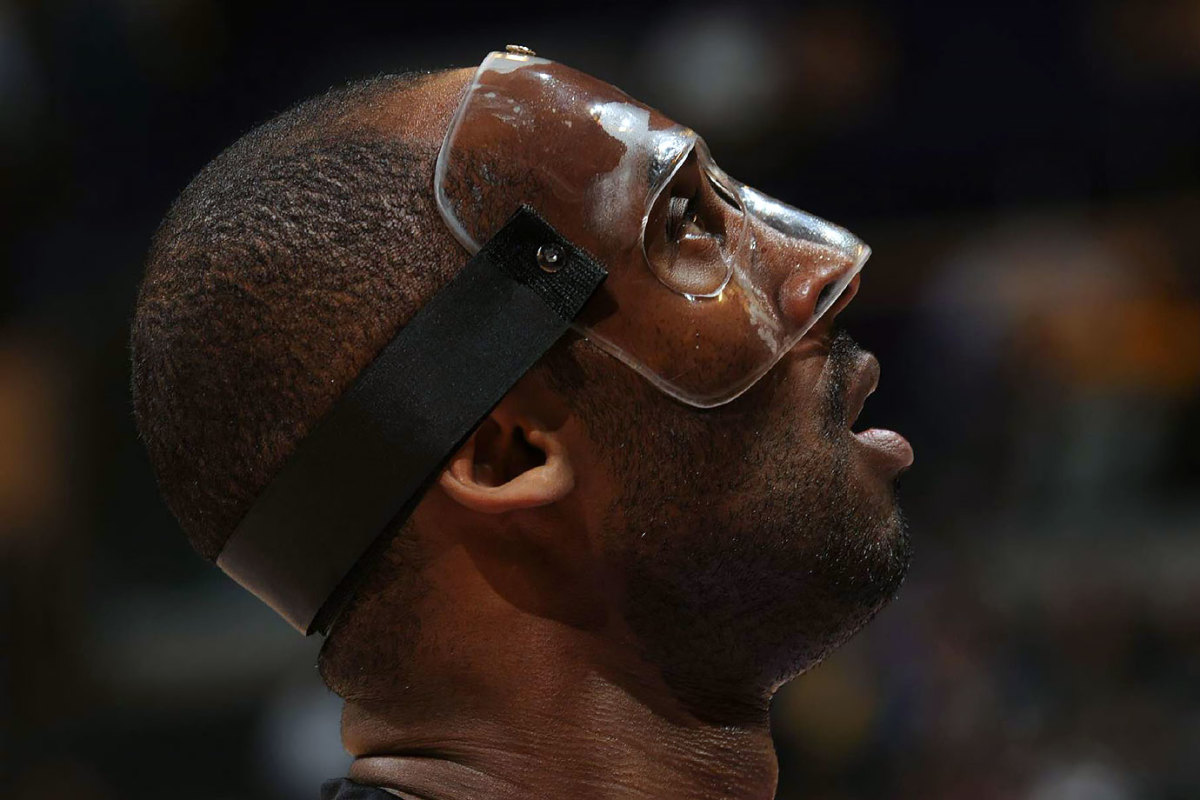
March 4, 2012
Kobe Bryant
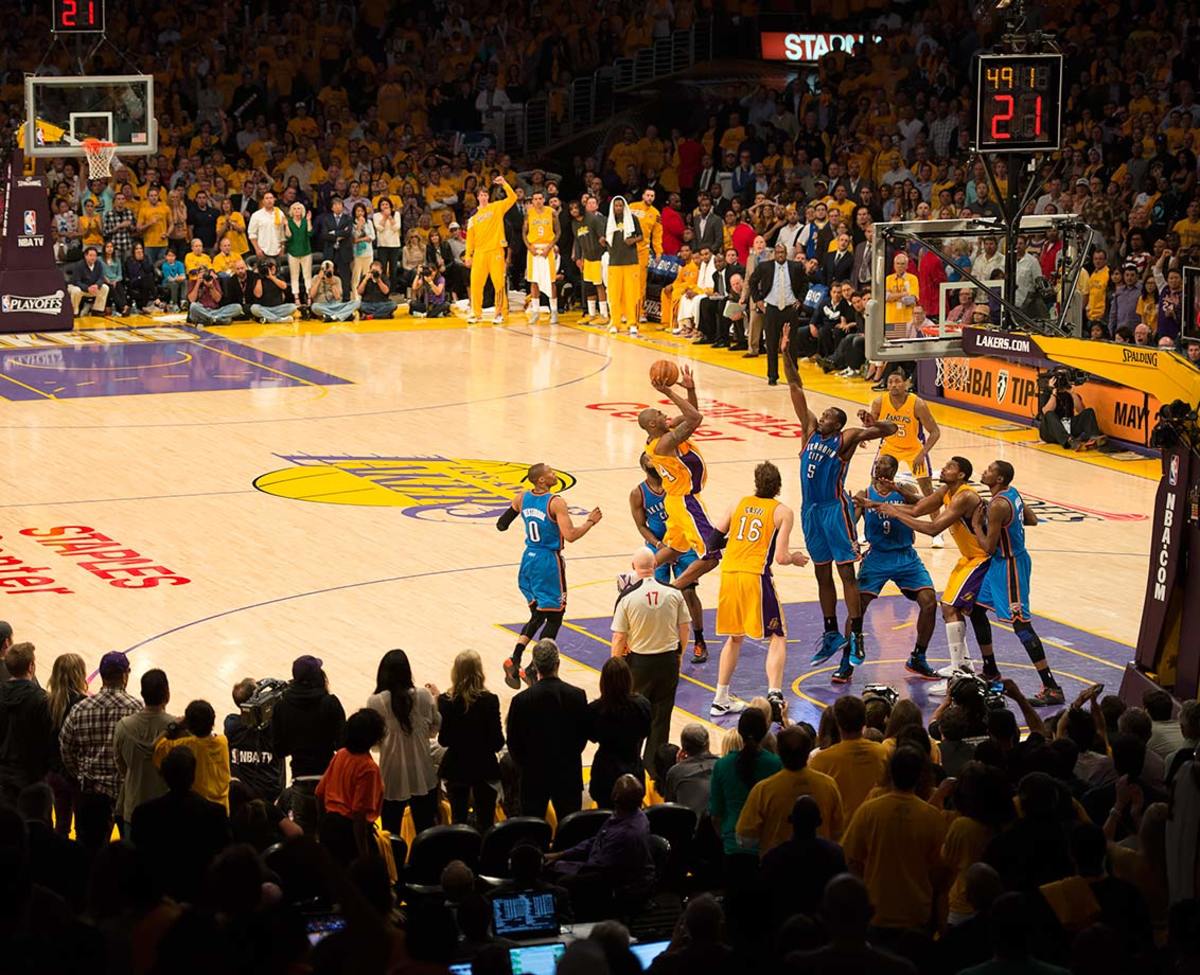
May 18, 2012 — Western Conference Semifinals, Game 3
Kobe Bryant
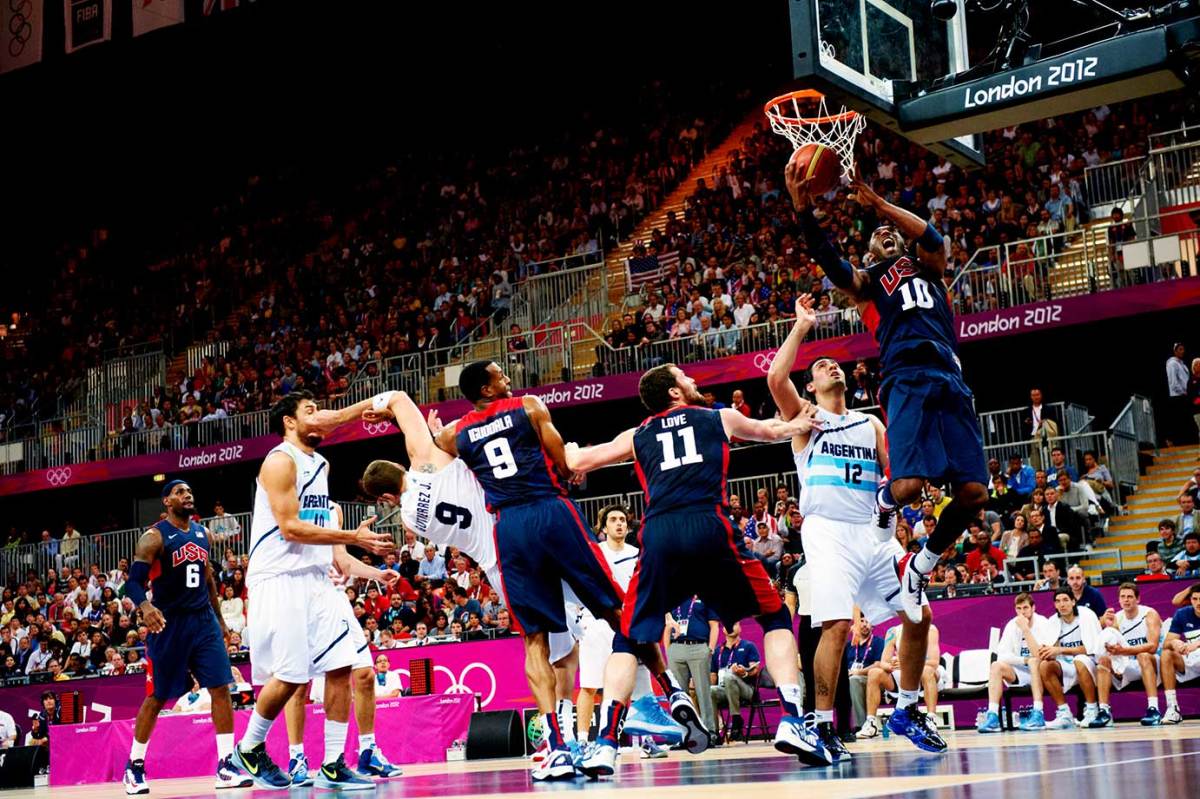
Aug. 6, 2012 — London Olympics
Kobe Bryant
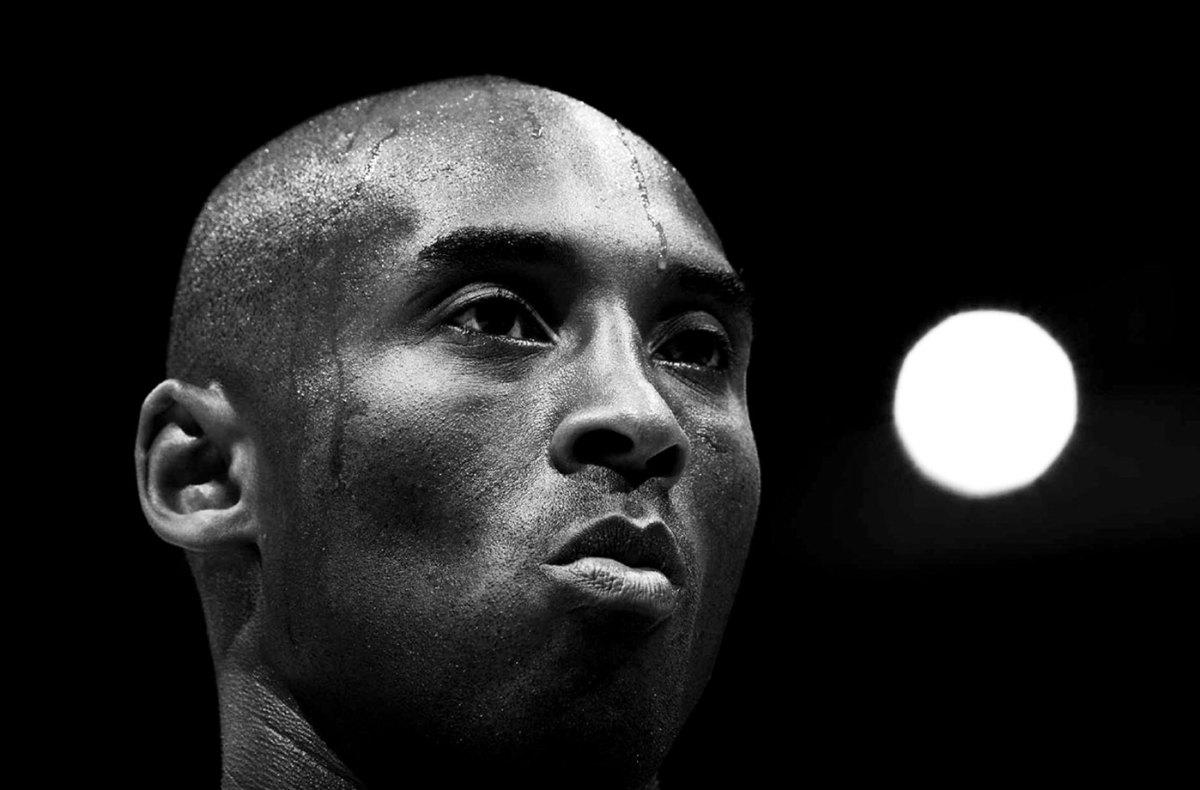
Nov. 9, 2012
Kobe Bryant and LeBron James
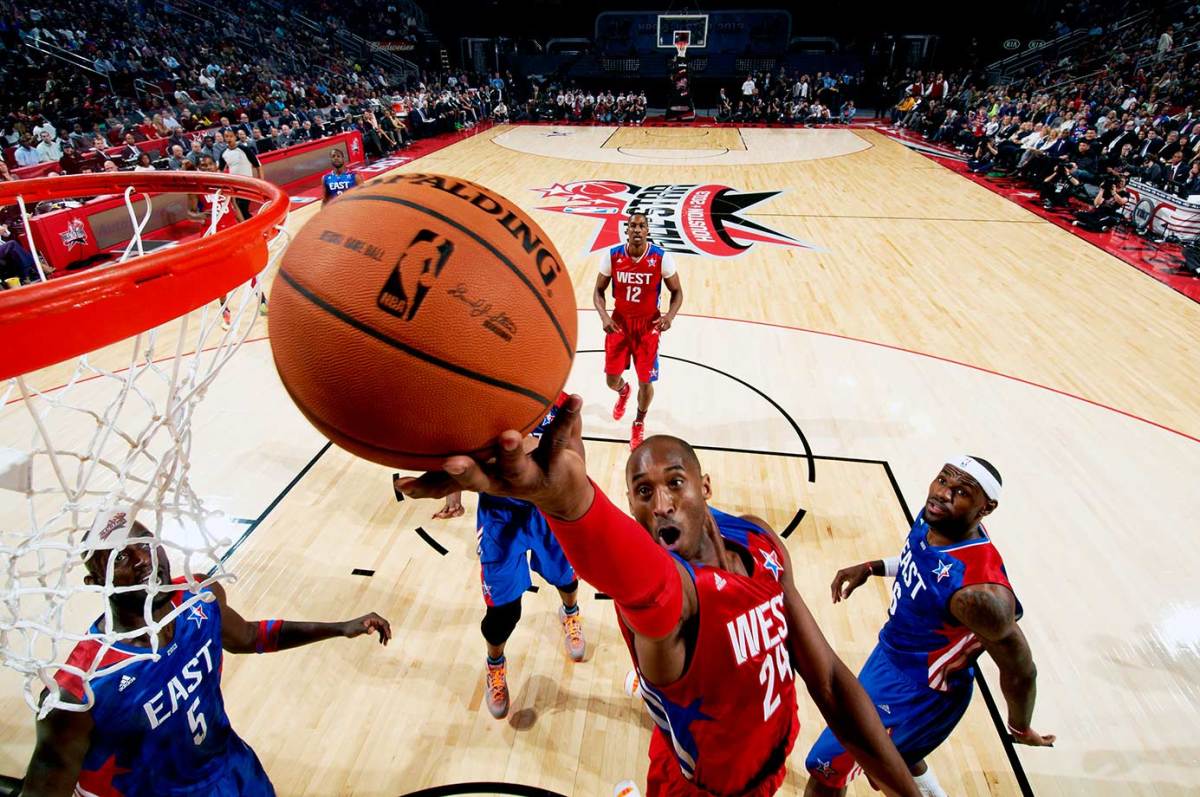
Feb. 17, 2013 — NBA All-Star Game
Kobe Bryant and Josh Smith
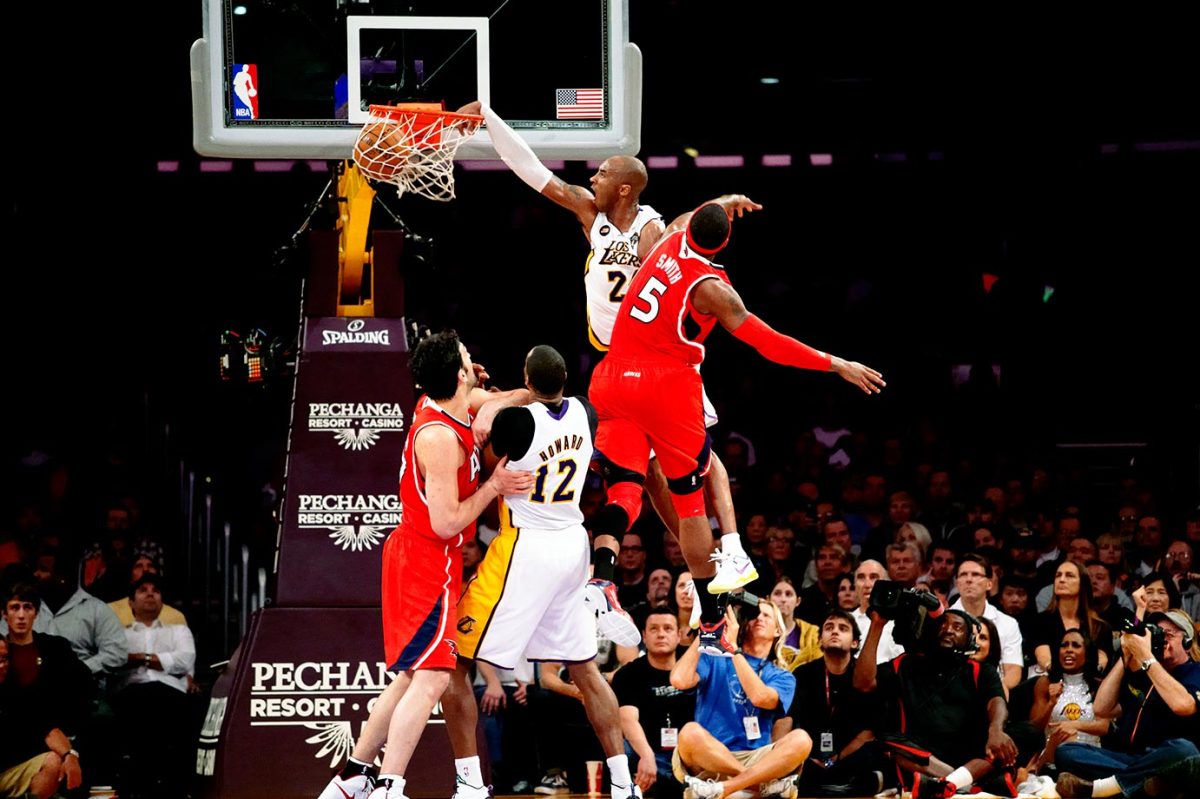
March 3, 2013
Kobe Bryant and Serge Ibaka
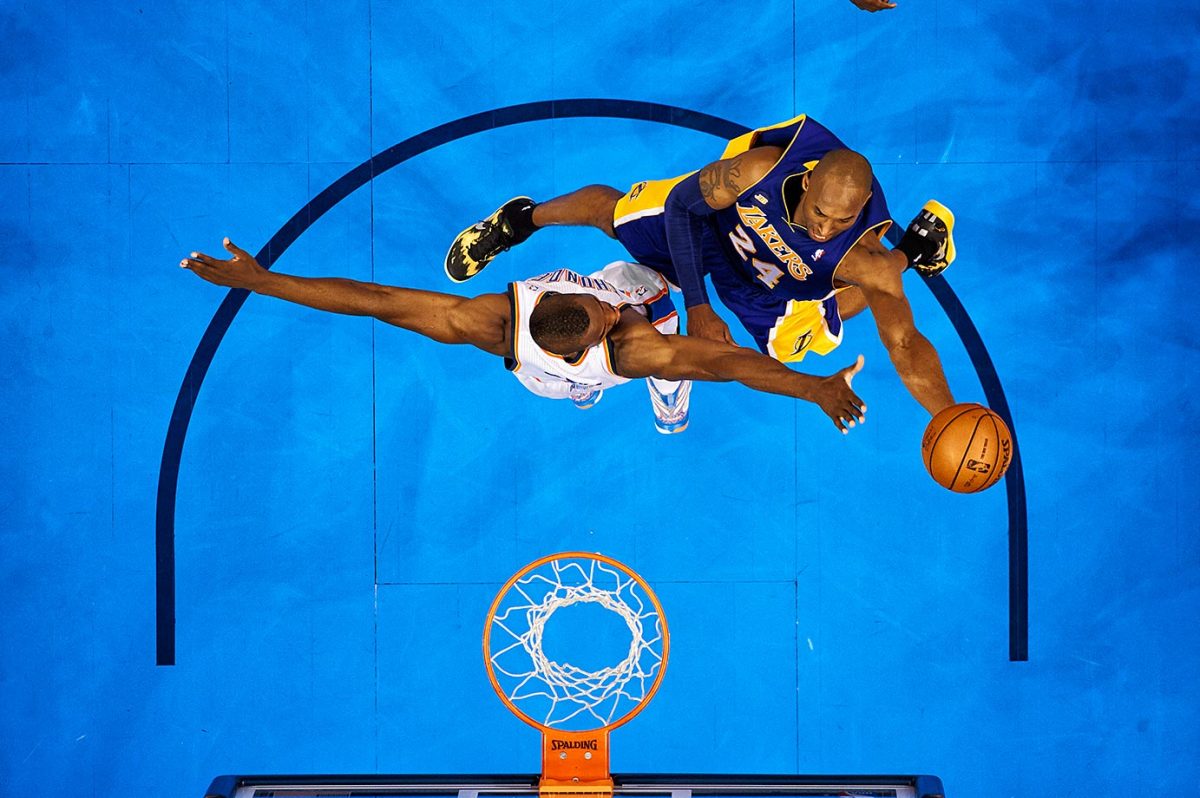
March 5, 2013
Kobe Bryant
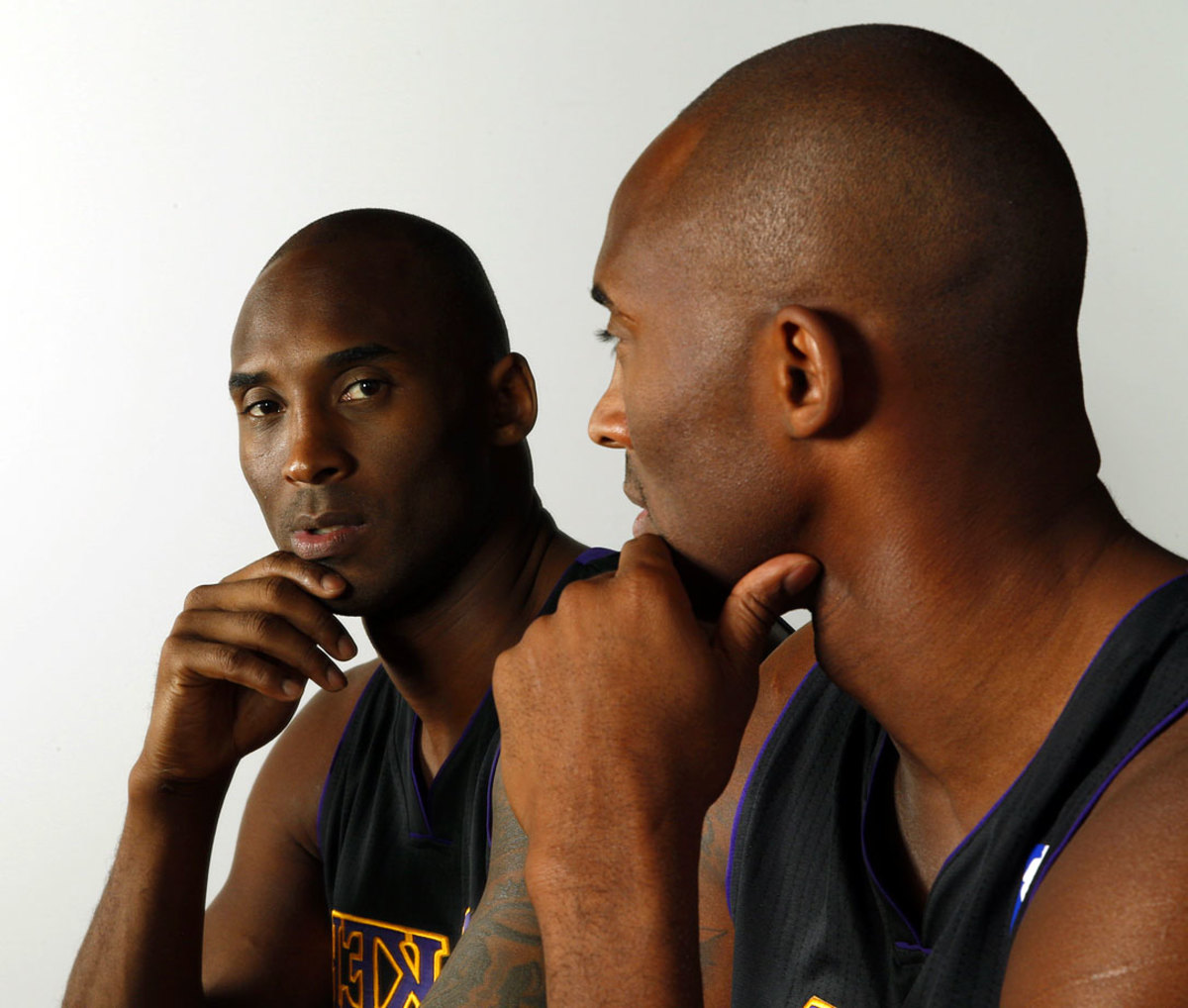
Oct. 9, 2013
Kobe Bryant
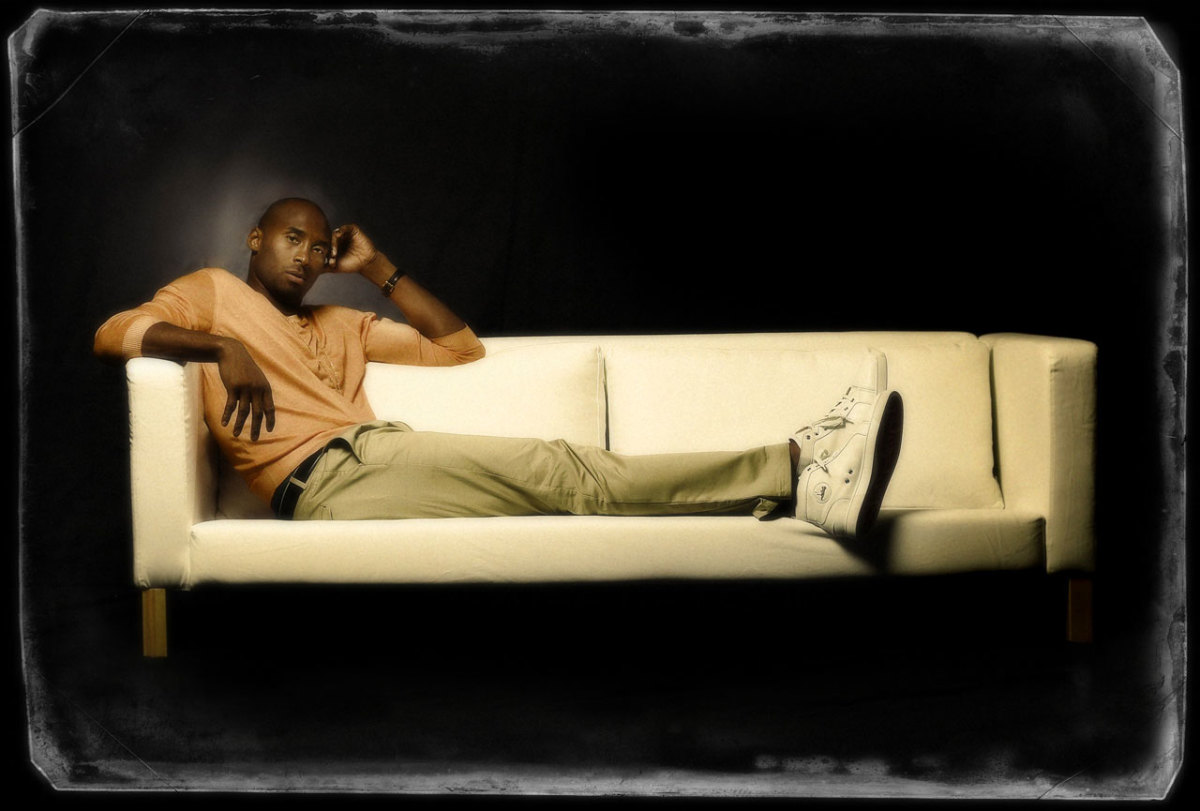
July 18, 2014
Kobe Bryant
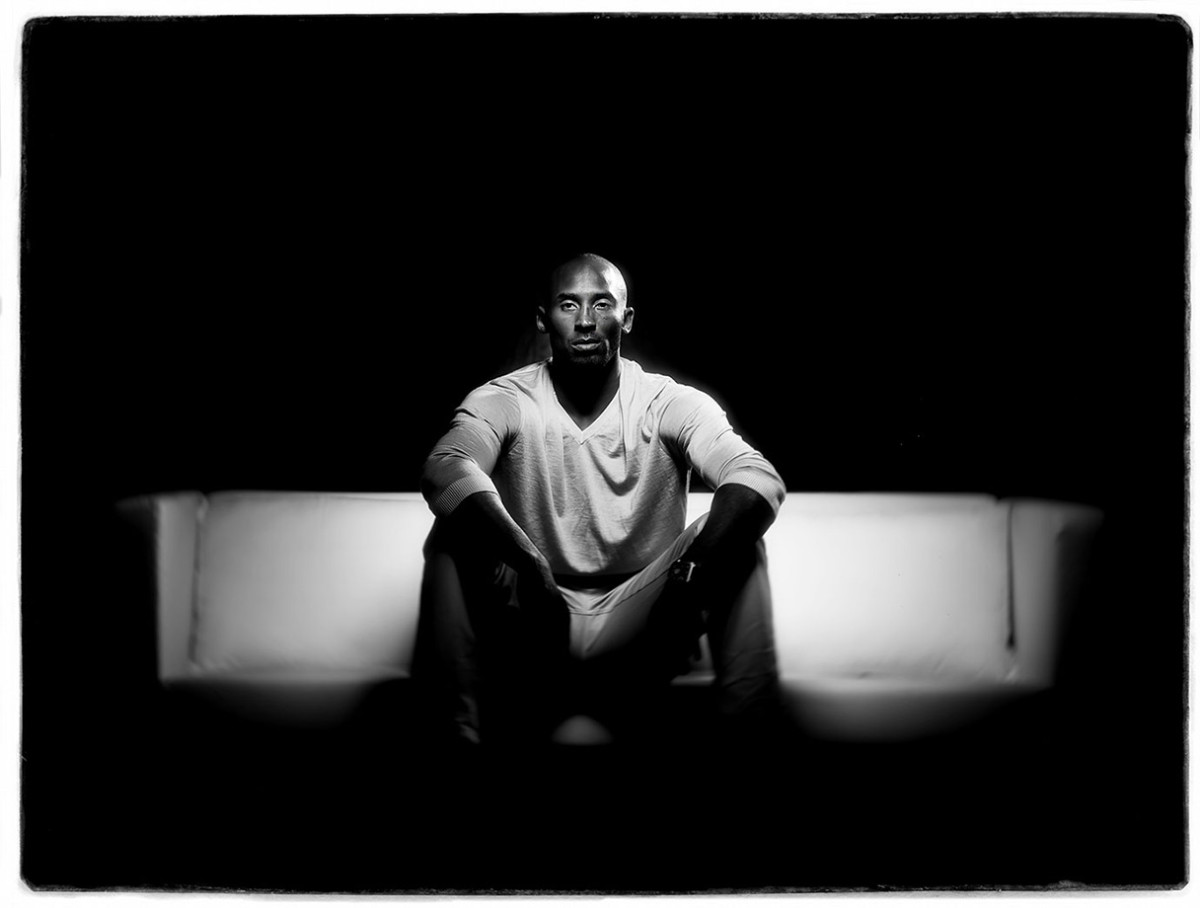
July 18, 2014
Kobe Bryant
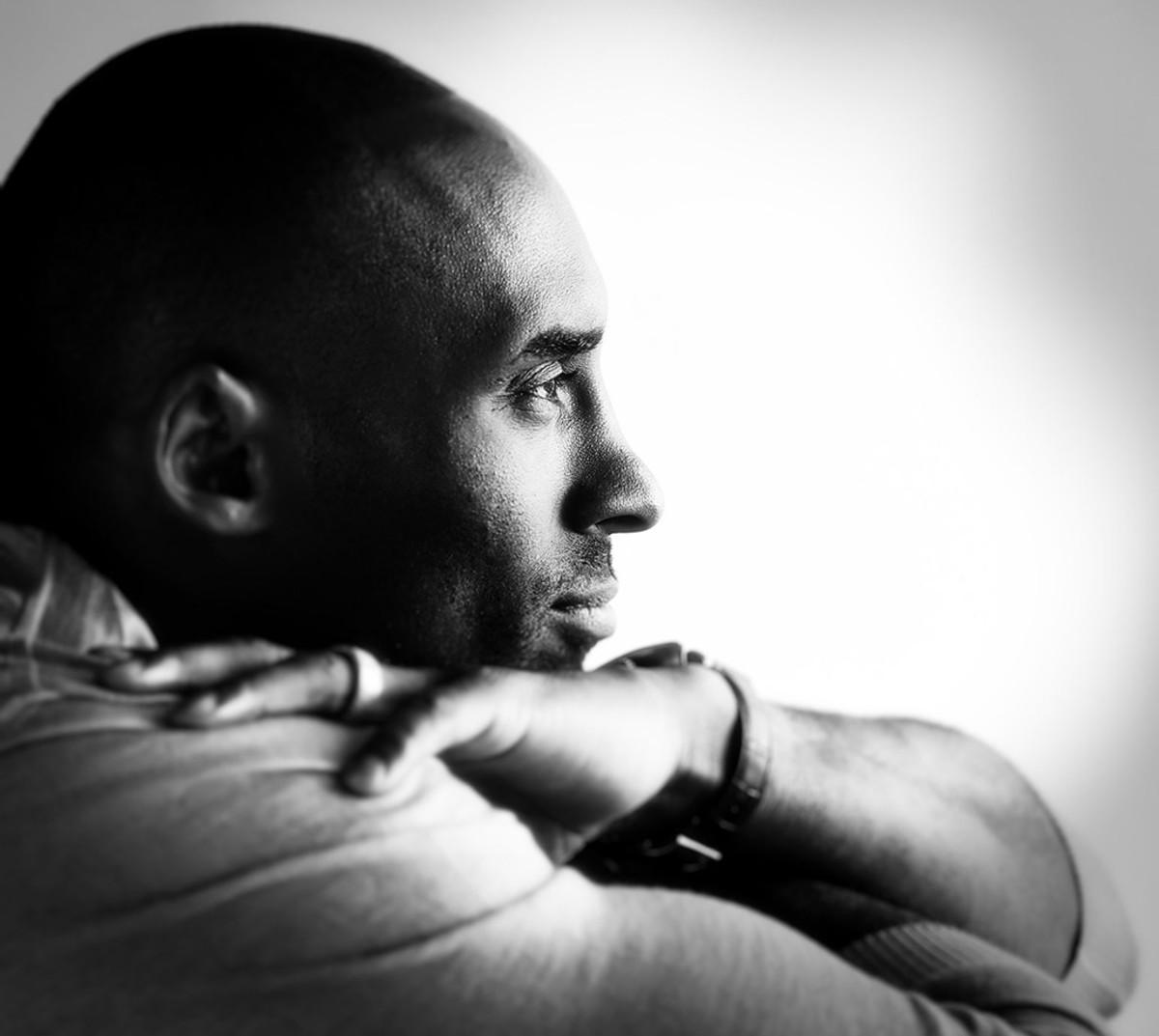
July 18, 2014
Kobe Bryant
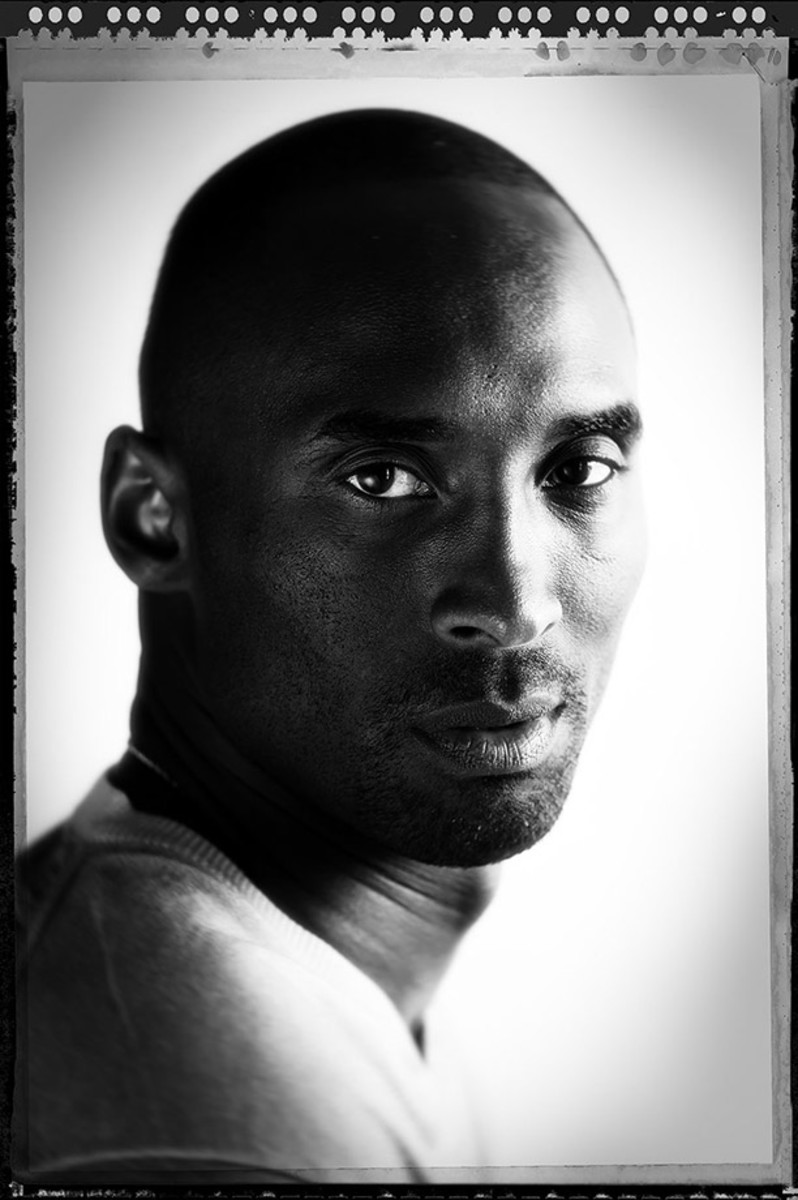
July 18, 2014
D'Angelo Russell and Kobe Bryant
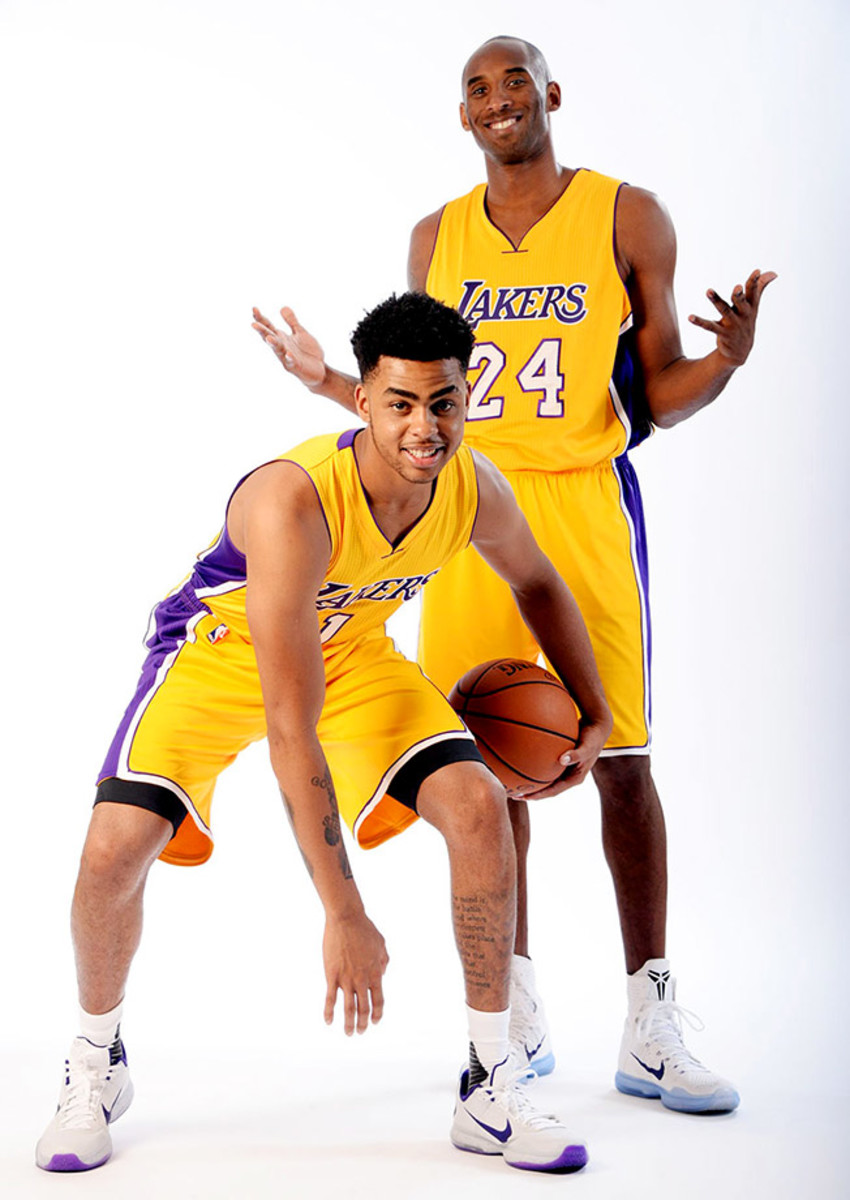
Sept. 30, 2015
3. Jim Brown, Cleveland Browns, 1965
Otto Graham’s retirement paved the way for Cleveland to draft the man many consider pro football’s greatest running back. When the Browns slumped to 5–7 in 1956, they were able to select Brown with the sixth pick. Few draft choices have proved so productive. During nine seasons, Brown led the NFL in rushing eight times, in touchdowns three times, won three MVP awards and helped lead Cleveland to the 1964 NFL title. He shattered Steve Van Buren’s single-season rushing record of 1,146 yards by running for 1,527 yards in 1958, then raised the mark to 1,863 in ‘63, including a staggering 6.4 yards per carry. His career average of 5.22 yards per carry remains an NFL record for running backs with at least 750 attempts.
Brown’s final season in 1965 was one of his best. He rushed for 1,544 yards, his second highest, scored a career-best 21 touchdowns and earned his third MVP award. The Browns repeated as Eastern Conference champions but lost the NFL title game, 23–12, to Green Bay. Brown last put on a uniform in the Pro Bowl where his record-tying three touchdowns led the Eastern Conference to 36–7 rout of the West.
Brown intended to play the ‘66 season but a combination of his burgeoning acting career and the intransigence of Browns owner Art Modell interfered. When bad weather delayed shooting of the film The Dirty Dozen in England, Brown was forced to miss the start of training camp. Modell threatened to fine Brown $1,500 for each week he wasn’t in camp. No one threatens Jim Brown, and the Hall of Fame running back ended his football career at 30.
2. Sandy Koufax, Los Angeles Dodgers, 1966
Yes, he threw from a high mound in a pitcher’s park, but in today’s game, when pitchers rarely start more than 35 games or throw more than 250 innings, Koufax’s numbers look like a misprint. In three of his final four seasons he started at least 40 games and pitched at least 311 innings. Koufax provided the L.A. Dodgers quality as well as quantity. He led the National League in ERA five straight seasons (1962–66) and was a three-time 25-plus game winner. He was the 1963 National League MVP and MVP of the 1963 and ‘65 World Series. In his final season of 1966 he reached career bests in wins (27) and ERA (1.73) and won his third Cy Young Award.
Koufax was outstanding in the final month of the ‘66 season as the Dodgers held off the San Francisco Giants and Pittsburgh Pirates. He pitched seven times over the final 30 days compiling a 5–2 record with a 1.50 ERA. His last start, on only two days’ rest, was a 6–3 victory over the Philadelphia Phillies and clinched the NL pennant for the Dodgers. Koufax’s final outing, Game 2 of the ‘66 World Series, ended badly. Although he surrendered only one earned run in six innings, five Dodgers errors helped the Baltimore Orioles to a 6–0 win and an eventual sweep of the Series.
All those innings came at a cost; Koufax’s arthritic left elbow was causing him continuous pain. Only four months after Jim Brown retired at the top of his game, Sandy Koufax did the same on Nov. 18, 1966, at the age of 30.
1. Bobby Jones, golf, 1930
Imagine if in 2021 Jordan Spieth wins the Masters, U.S. Open, British Open and PGA to complete golf’s Grand Slam and then retires at the age of 28. Unthinkable? That’s exactly what Jones did in 1930 after winning what was then golf’s Grand Slam: the U.S. and British Opens, and the U.S. and British Amateurs. Jones, who played in an era when there were nearly as many accomplished amateur golfers as there were pros, usually held his own against any field, winning four U.S. Opens and three British Opens. He won 13 of the 31 majors he entered and finished in the top-10 27 times. He won the first Sullivan Award as the nation’s outstanding amateur athlete.
Despite his supreme level of play, Jones had no love for the constant grind of championship golf. He compared it to “a cage,” adding, “First you are expected to get in there and then you are expected to stay. Of course, nobody can stay there.” Jones was equally proficient away from links, earning a B.S. in mechanical engineering from Georgia Tech, another bachelor’s degree in English literature from Harvard and eventually passing the Georgia bar exam. When his golfing days ended, he was happy to begin his law career in Atlanta.
But Jones provided one more gift for golf. He helped design the Augusta National Golf Club course which, in 1934, became the permanent home of the Masters.
Honorable mention: Eric Heiden finished his speedskating career with five gold medals at the 1980 Lake Placid Winter Olympics; Ray Bourque, the highest scoring defenseman in NHL history, won his first Stanley Cup with the Colorado Avalanche in 2001; Lorena Ochoa of Mexico, the four-time LPGA Tour Player of the Year, retired from full-time golf in 2010 while ranked No. 1 in the world; Yankees closer Mariano Rivera ended his 19-year career with 44 saves, third-best in the American League, a 2.11 ERA and was voted the league’s Comeback Player of the Year in 2013.
